100 Indoor No Fuss Drought-Tolerant Plants that are Unkillable
1. Snake Plant (Sansevieria trifasciata)
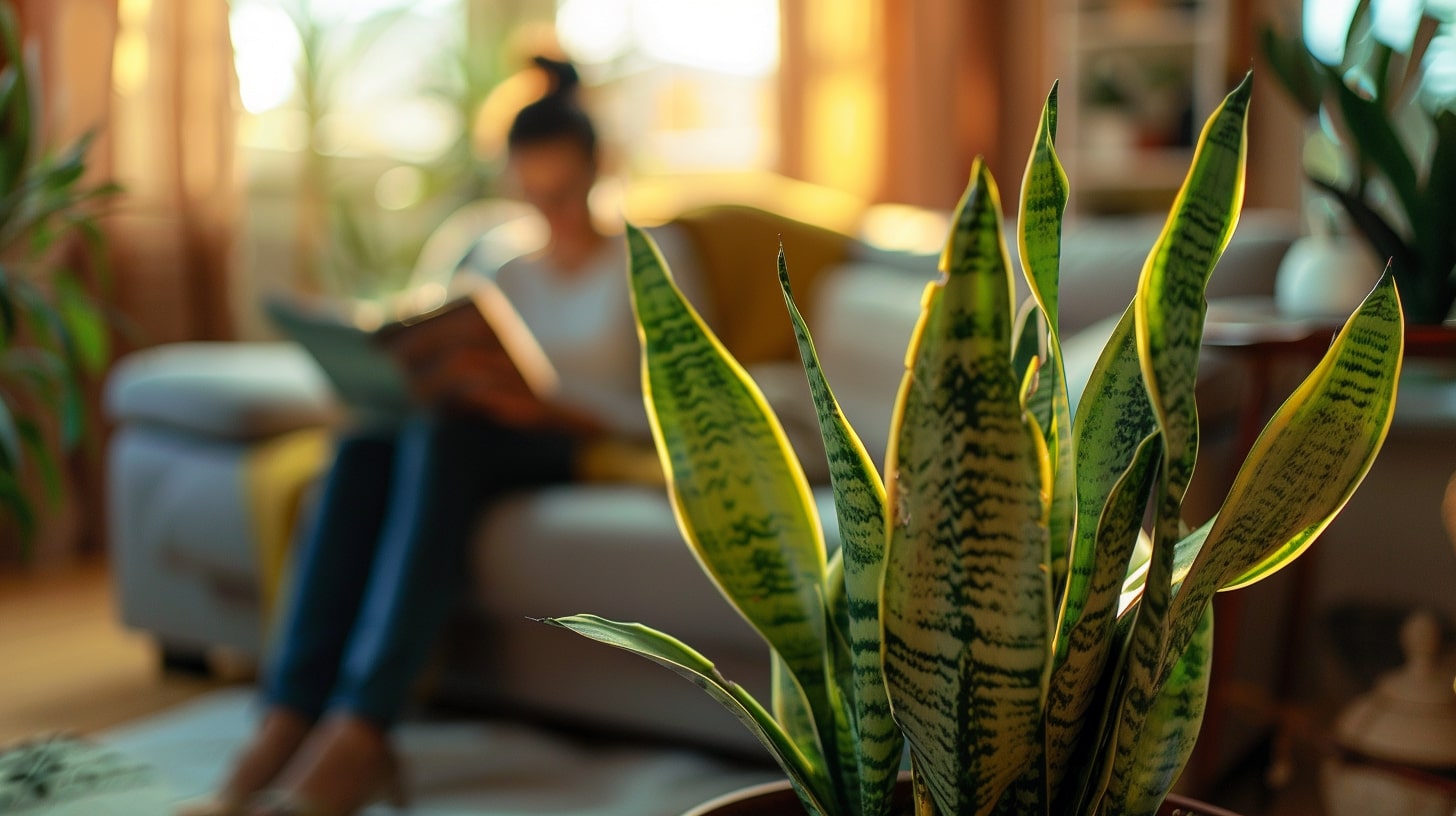
- Light: Prefers indirect light but can tolerate some shade.
- Watering: Let soil dry between waterings; water every 2-3 weeks.
- Size: Can grow up to 2 feet tall.
- Soil: Well-draining, sandy soil.
- Feeding: Fertilize sparingly; once every few months.
- Flowering: Rarely flowers indoors.
2. ZZ Plant (Zamioculcas zamiifolia)
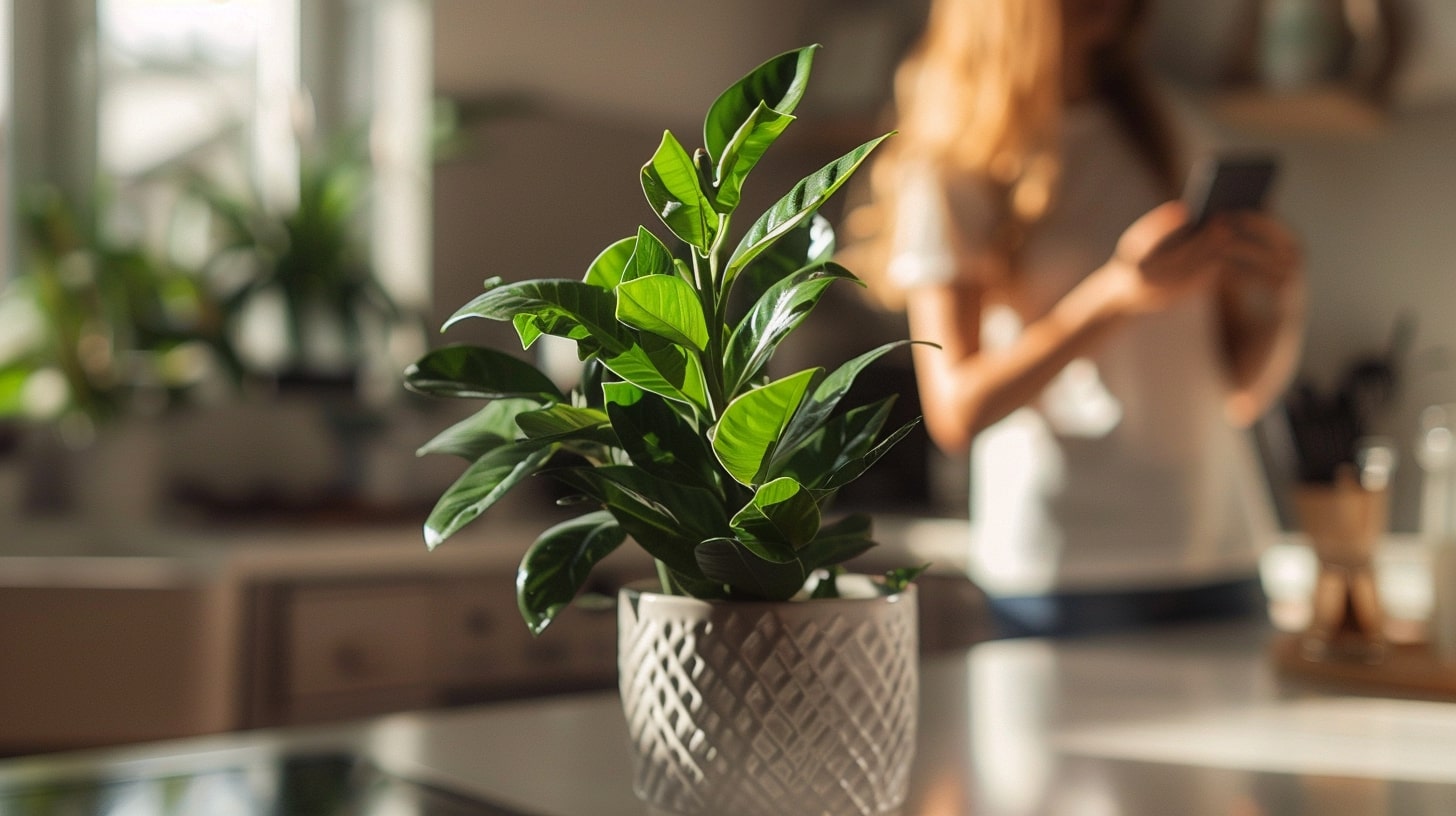
- Light: Thrives in low-light conditions.
- Watering: Water every 2-4 weeks, allowing soil to dry out.
- Size: Can reach 2-3 feet in height.
- Soil: Well-draining potting mix.
- Feeding: Feed with balanced liquid fertilizer every 6 months.
- Flowering: Rarely blooms.
3. Aloe Vera

- Light: Prefers bright, indirect sunlight.
- Watering: Water deeply but infrequently, every 3 weeks.
- Size: Grows up to 18 inches tall.
- Soil: Cactus mix or well-draining potting soil.
- Feeding: Minimal feeding; once in spring with a phosphorus-heavy fertilizer.
- Flowering: Blooms in summer under optimal conditions.
4. Jade Plant (Crassula ovata)
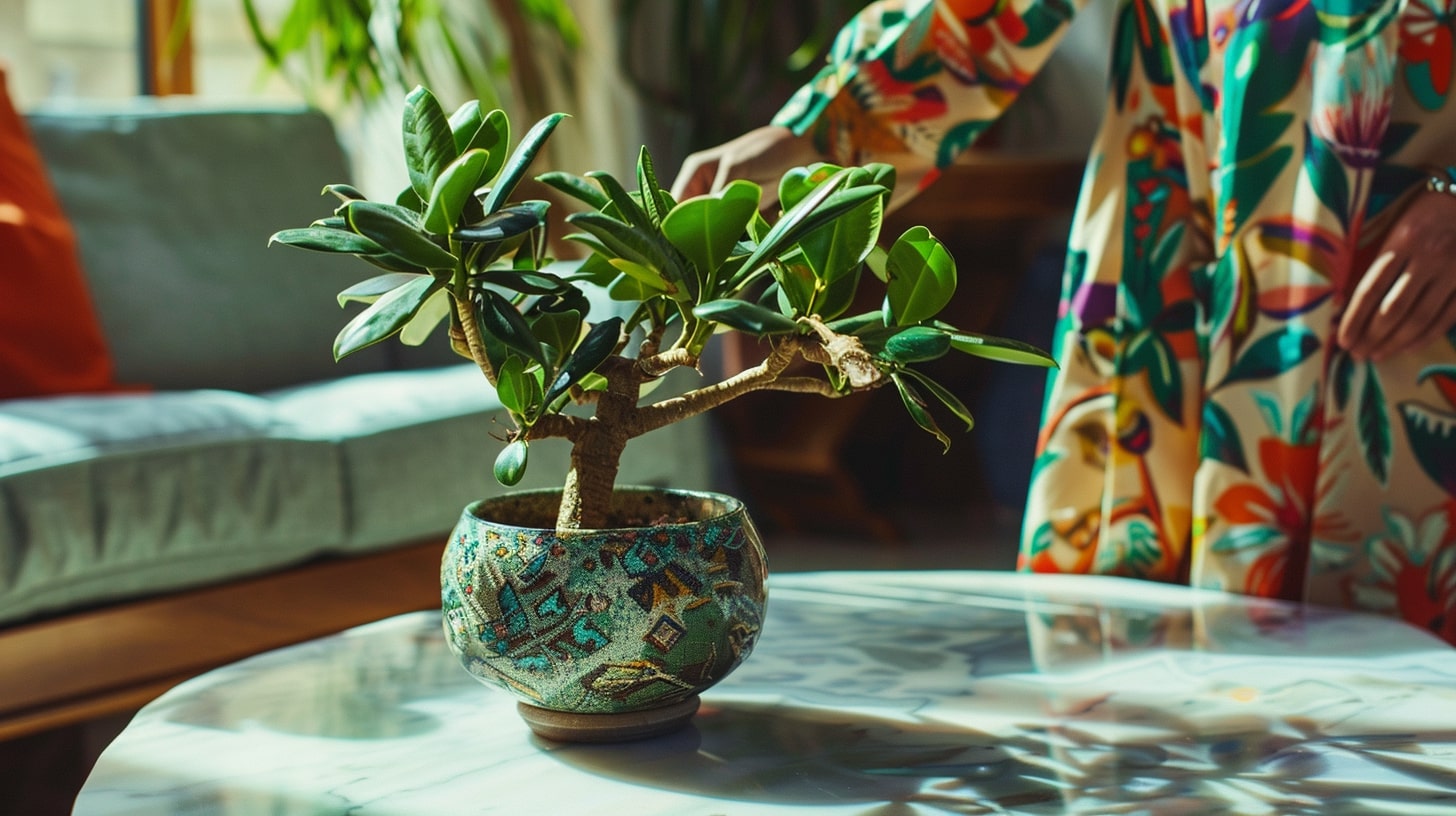
- Why It’s Great: The Jade Plant is often called the “lucky plant” or “money tree” and is thought to bring financial success. It’s a charming, resilient succulent with plump leaves that can live for decades, making it a wonderful heirloom plant.
- Light: Prefers full sun to partial shade.
- Watering: Water every 2-3 weeks, allowing the soil to dry out between waterings.
- Size: Can grow up to 3 feet tall.
- Soil: Well-draining soil mix.
- Feeding: Feed with a balanced water-soluble fertilizer every 6 months.
- Flowering: Produces small white or pink flowers, typically in winter.
5. Spider Plant (Chlorophytum comosum)
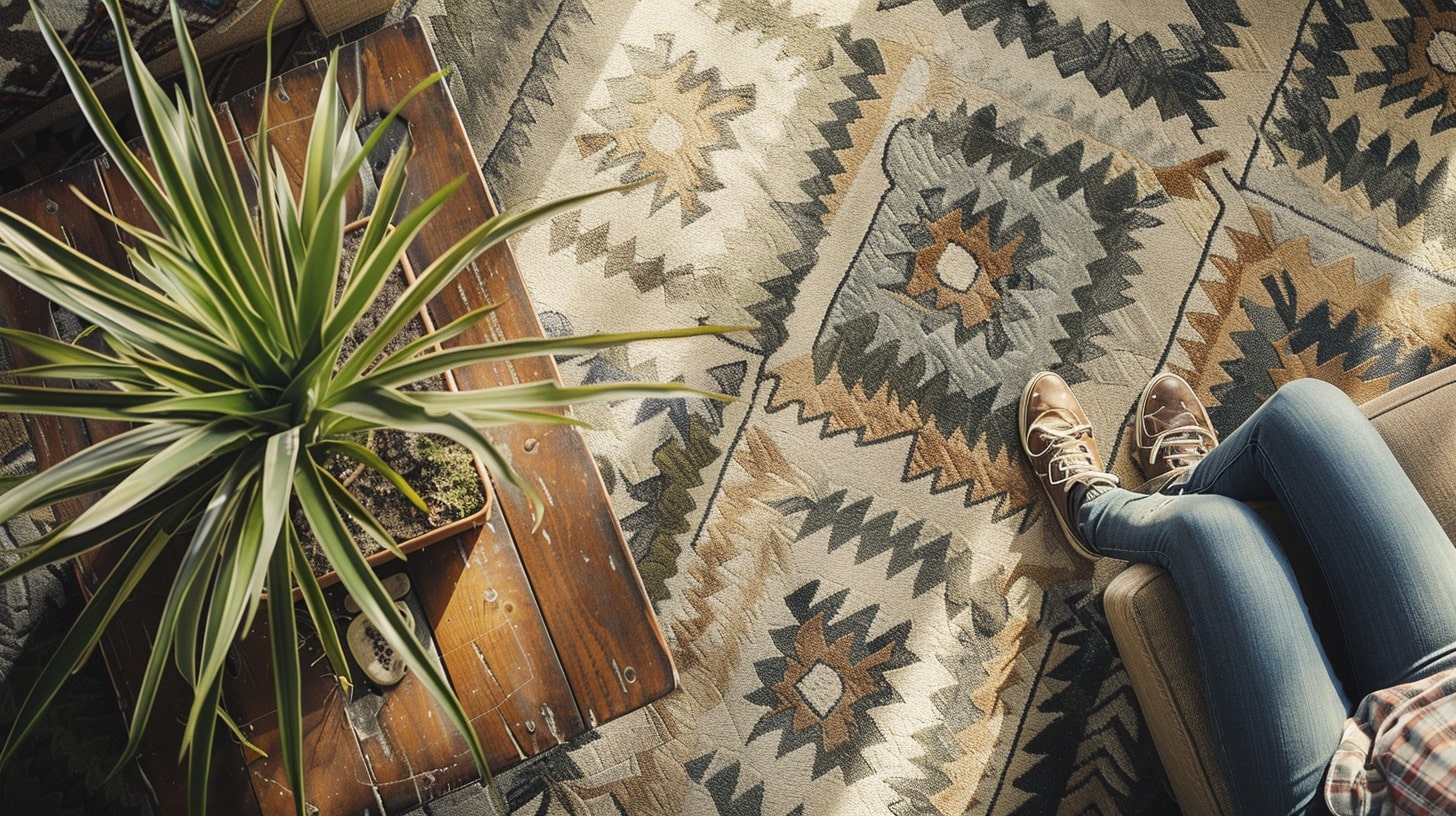
- Why It’s Great: The Spider Plant is a playful and hardy plant, known for its spider-like plantlets that dangle from the mother plant like tiny spiders on a web. It’s an excellent choice for hanging baskets and is known for its air-purifying qualities.
- Light: Thrives in bright, indirect sunlight.
- Watering: Water moderately, allowing the topsoil to dry out between watering.
- Size: Grows about 12-24 inches long.
- Soil: Well-draining potting soil.
- Feeding: Feed monthly during the growing season with liquid fertilizer.
- Flowering: Produces small white flowers on long stems.
6. Pothos (Epipremnum aureum)
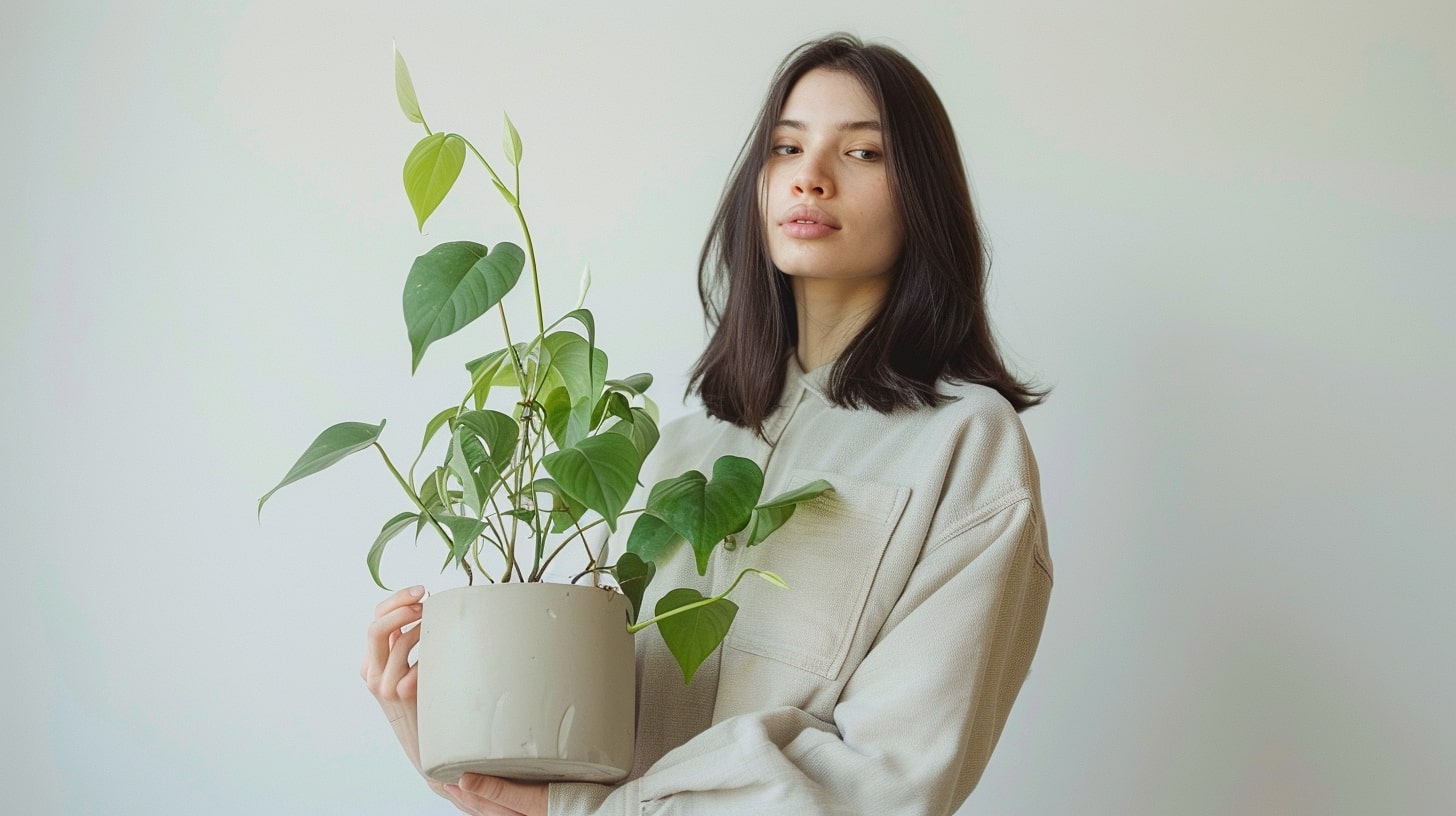
- Why It’s Great: Pothos, also known as “Devil’s Ivy,” is nearly indestructible and can grow in a variety of environments. It’s a perfect plant for those new to indoor gardening and can be creatively displayed in hanging pots or trained along shelves.
- Light: Prefers low to bright indirect light.
- Watering: Water every 1-2 weeks, allowing soil to dry out between waterings.
- Size: Vines can reach over 10 feet long.
- Soil: Any high-quality potting mix.
- Feeding: Fertilize once a month during growing season.
- Flowering: Rarely flowers indoors.
7. Rubber Plant (Ficus elastica)

- Why It’s Great: The Rubber Plant is a striking addition to any room, with its glossy, dark green leaves and robust nature. It’s not just a pretty face; this plant is also known for its air-purifying qualities, making it as healthy as it is beautiful.
- Light: Bright, indirect light is best.
- Watering: Water moderately, allowing the top inch of soil to dry out between waterings.
- Size: Can grow up to 10 feet tall indoors.
- Soil: Well-draining potting mix.
- Feeding: Feed with diluted liquid fertilizer every month during the growing season.
- Flowering: Rarely flowers indoors.
8. Peace Lily (Spathiphyllum)
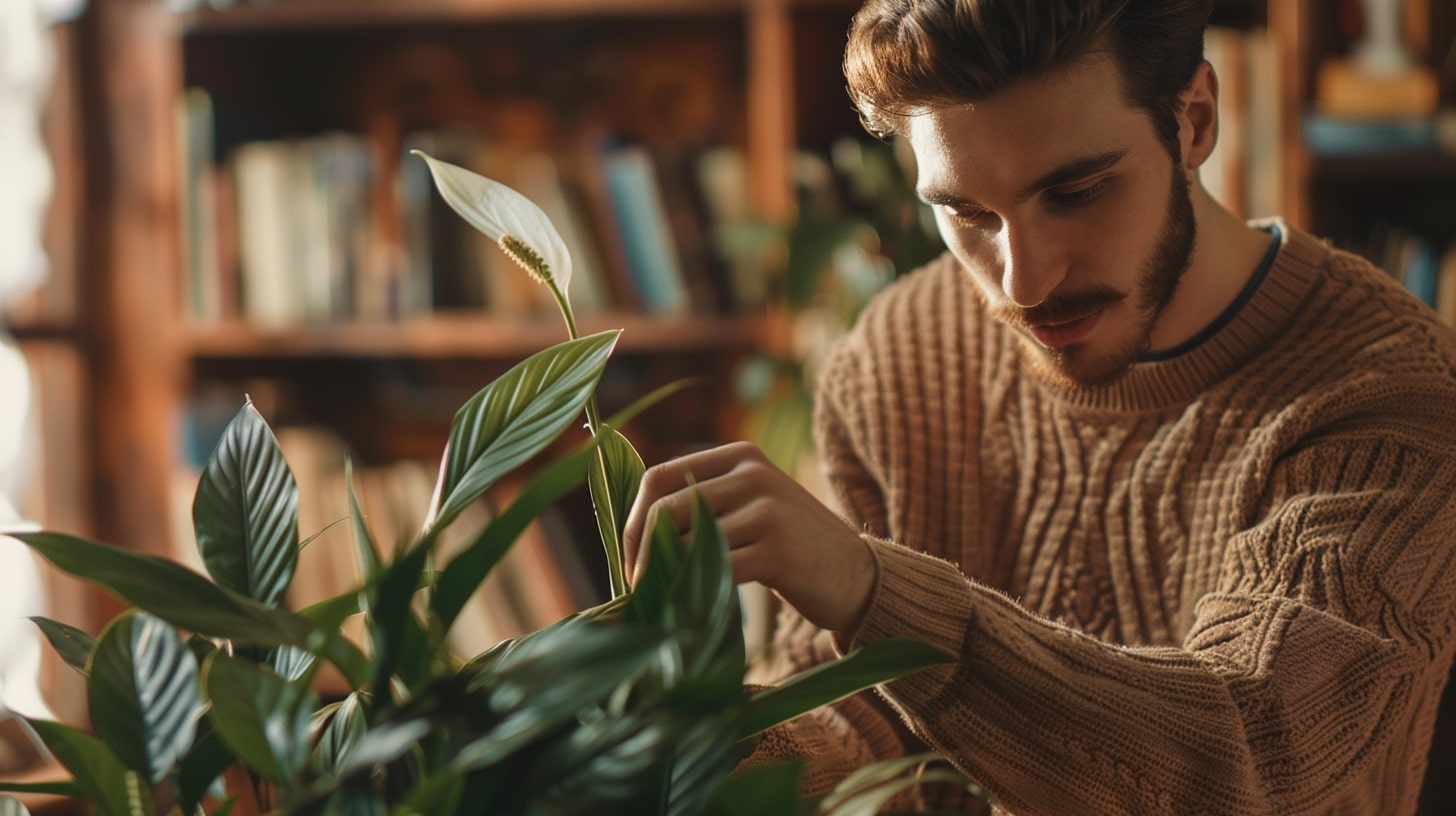
- Why It’s Great: The Peace Lily is a graceful and popular houseplant with glossy green leaves and elegant white flowers. It’s not only a symbol of peace but also tops NASA’s list for removing indoor pollutants, including formaldehyde and ammonia.
- Light: Prefers low to moderate, indirect light.
- Watering: Keep soil moist; water about once a week.
- Size: Grows 1-4 feet tall.
- Soil: Rich, well-draining soil.
- Feeding: Feed lightly every 6-8 weeks during growing season.
- Flowering: Produces white spathes that resemble flowers.
9. Yucca

- Why It’s Great: Yucca brings a touch of the desert indoors. It’s a bold, striking plant that demands attention with its sword-like leaves and towering presence. Perfect for adding a dramatic flair to any space, it’s surprisingly easy to care for.
- Light: Needs bright, indirect sunlight.
- Watering: Let soil dry between waterings, about every 2-3 weeks.
- Size: Can grow over 5 feet tall.
- Soil: Well-draining cactus mix or sandy soil.
- Feeding: Use a balanced fertilizer once a year in spring.
- Flowering: Blooms rarely indoors; produces white flowers when it does.
10. Agave
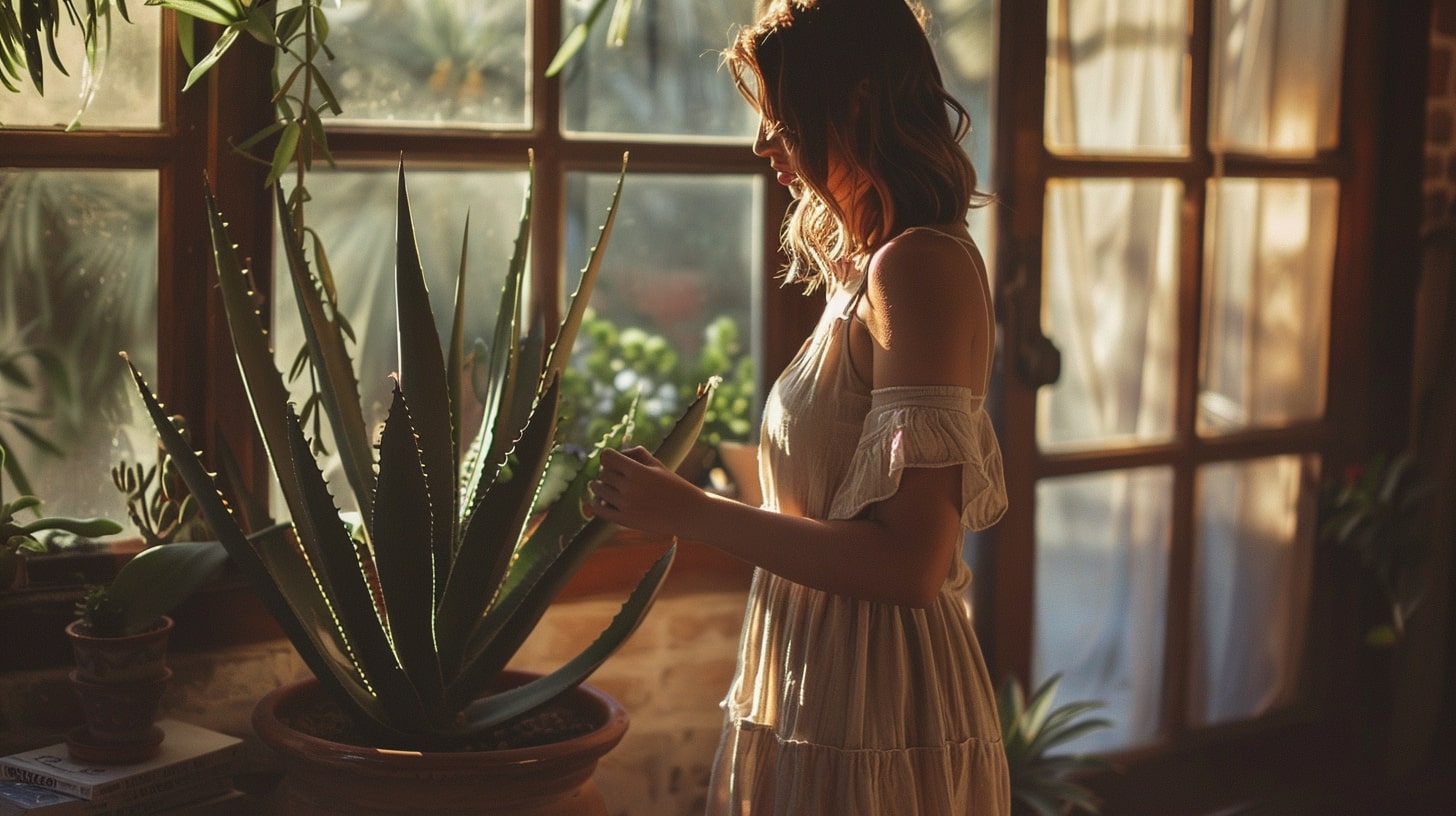
- Why It’s Great: Agave is a statement piece with its rosette of tough, spiky leaves. This plant brings an exotic and sculptural beauty to your space, reminiscent of a desert landscape, and requires minimal care.
- Light: Full sun to partial shade.
- Watering: Water sparingly; allow soil to completely dry out between waterings.
- Size: Varies with species; some can grow several feet tall.
- Soil: Well-draining soil mix.
- Feeding: Minimal feeding required, once a year during growing season.
- Flowering: Rarely flowers indoors; produces tall spikes with flowers when it does.
11. String of Pearls (Senecio rowleyanus)
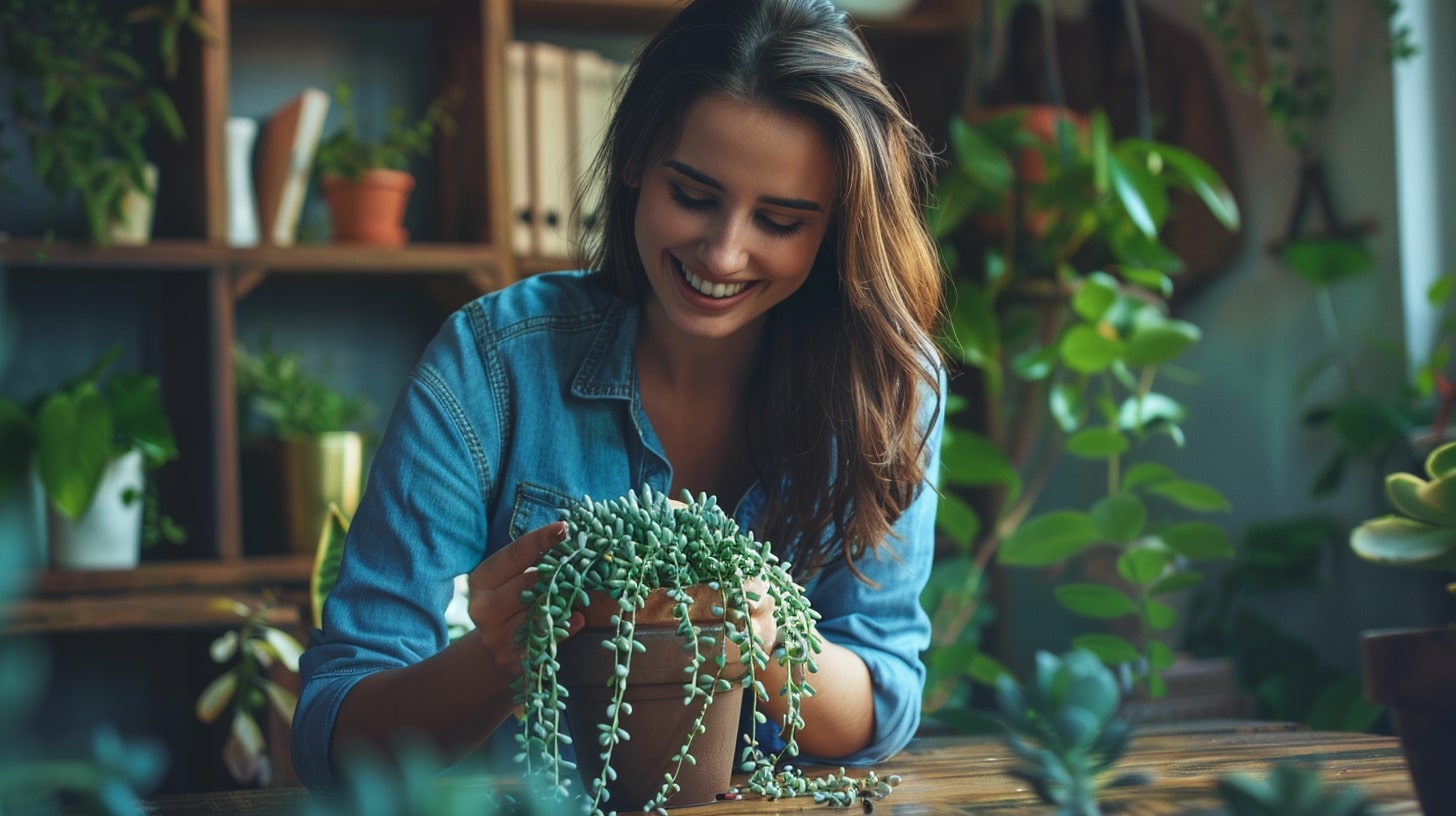
- Why It’s Great: The String of Pearls is a charming and whimsical plant, with its unique pearl-like foliage cascading over the pot. It’s perfect for hanging baskets and brings a playful yet elegant touch to any indoor garden.
- Light: Bright, indirect light.
- Watering: Water every 2-3 weeks, allowing soil to dry out.
- Size: Trailing stems can grow several feet long.
- Soil: Well-draining succulent mix.
- Feeding: Feed with diluted liquid fertilizer once a month during growing season.
- Flowering: Produces small white flowers with a cinnamon scent.
12. Ponytail Palm (Beaucarnea recurvata)

- Why It’s Great: The Ponytail Palm is a quirky plant with a bulbous trunk and cascading ponytail-like leaves. It’s not a true palm but a succulent, making it incredibly drought-tolerant and an eye-catching addition to any room.
- Light: Prefers full sun.
- Watering: Allow soil to dry completely between waterings.
- Size: Can grow up to 8 feet tall indoors.
- Soil: Sandy, well-draining soil.
- Feeding: Feed with a diluted balanced fertilizer once in spring and summer.
- Flowering: Rarely flowers indoors.
13. Cacti (Various species)
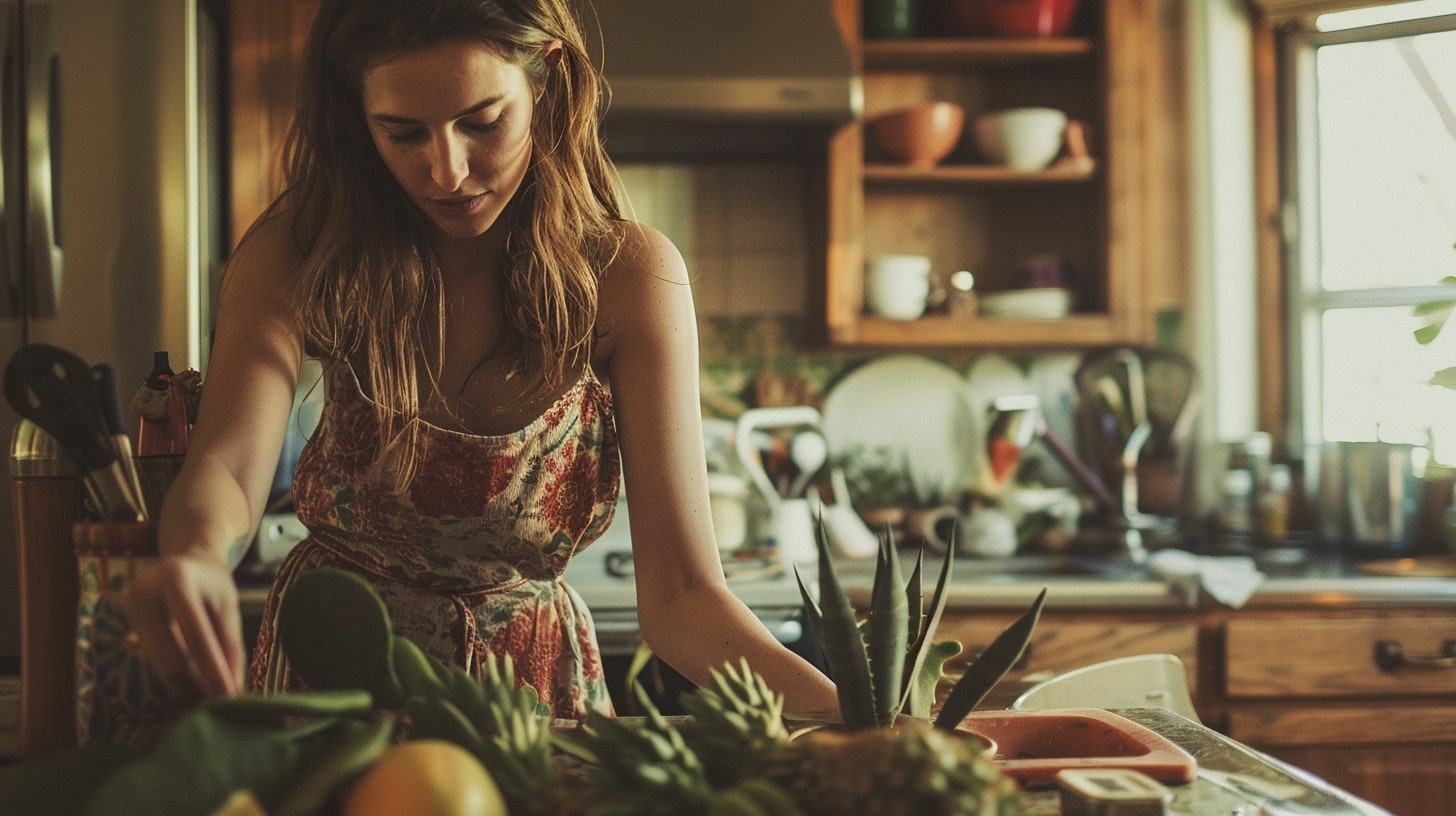
- Why It’s Great: Cacti bring a piece of the desert into your home with their varied and interesting shapes. They’re the ultimate low-maintenance plants, perfect for those who love unique, sculptural aesthetics with minimal effort.
- Light: Most species prefer bright direct light.
- Watering: Water sparingly; allow the soil to completely dry out between waterings.
- Size: Varies greatly depending on species.
- Soil: A well-draining cactus or succulent mix.
- Feeding: Feed with a cactus fertilizer during the growing season.
- Flowering: Many species bloom with vibrant flowers.
14. Sago Palm (Cycas revoluta)

- Why It’s Great: The Sago Palm, with its feathery fronds and rugged trunk, adds a prehistoric ambiance to any space. It’s not a true palm but a cycad, a group of plants that have existed since the time of the dinosaurs.
- Light: Prefers bright, indirect light.
- Watering: Water moderately; allow soil to dry slightly between waterings.
- Size: Can grow up to 2-3 feet indoors.
- Soil: Well-draining soil with good aeration.
- Feeding: Feed with palm fertilizer during the growing season.
- Flowering: Produces cones; not typically grown for its flowers.
15. Philodendron (Various species)
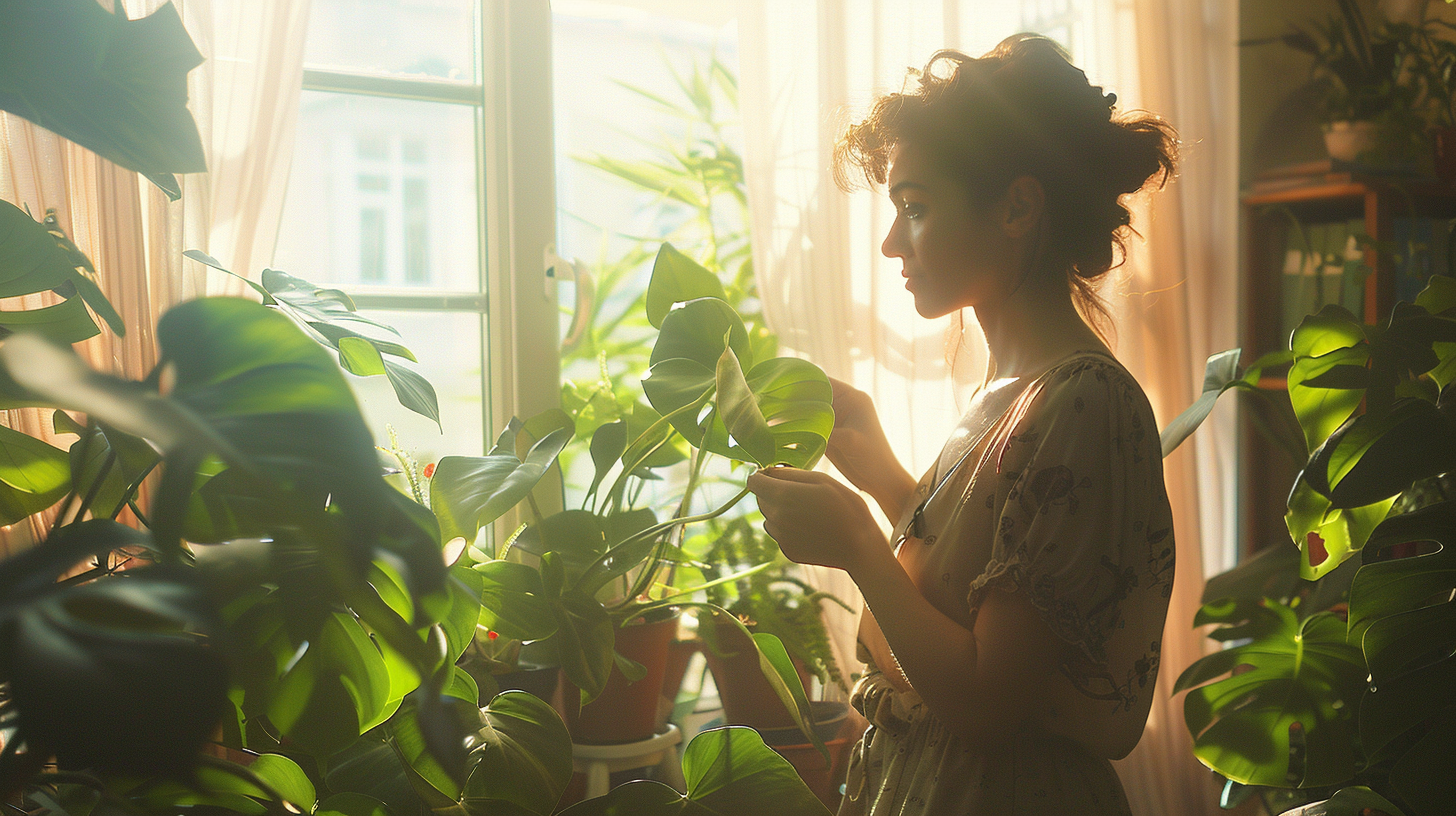
- Why It’s Great: Philodendrons are beloved for their lush, vibrant foliage and adaptability. With heart-shaped leaves and trailing vines, they create an instant tropical vibe and are forgiving to beginner gardeners.
- Light: Prefers medium to bright indirect light.
- Watering: Water when the top inch of soil feels dry.
- Size: Varies; some species are compact, while others have long trailing vines.
- Soil: Moist, well-draining potting mix.
- Feeding: Feed monthly during growing season with a balanced liquid fertilizer.
- Flowering: Rarely flowers indoors.
16. Haworthia (Various species)
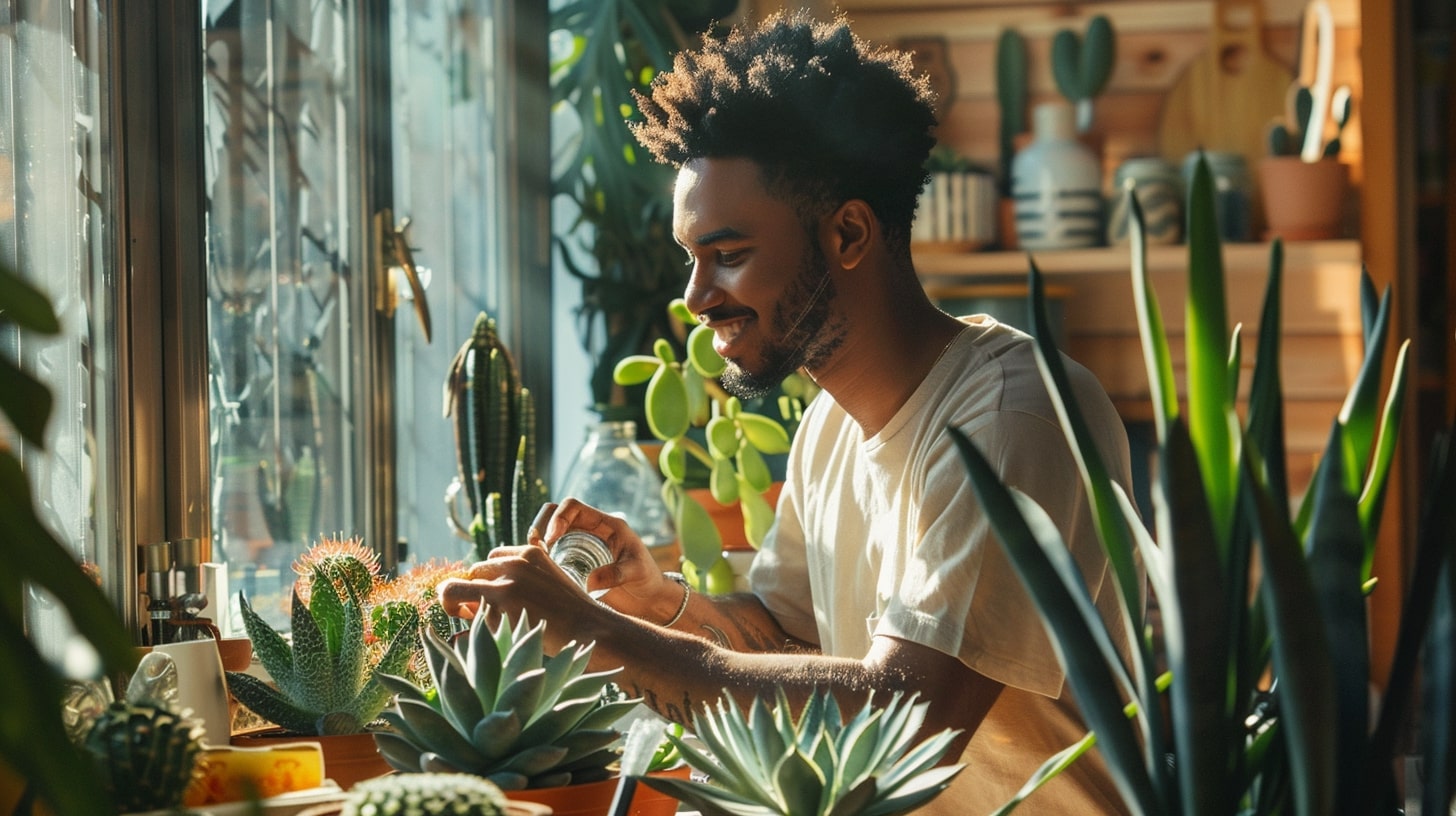
- Why It’s Great: Haworthias are delightful small succulents with distinctive, often striped leaves and a rosette shape. They’re perfect for windowsills and small spaces, adding a touch of green without requiring much room.
- Light: Prefers bright, indirect light.
- Watering: Allow soil to dry out between waterings.
- Size: Usually small, under 6 inches.
- Soil: Succulent or cactus potting mix.
- Feeding: Minimal feeding; can use a diluted cactus fertilizer in spring.
- Flowering: Produces small flowers on long stems.
17. Echeveria (Various species)
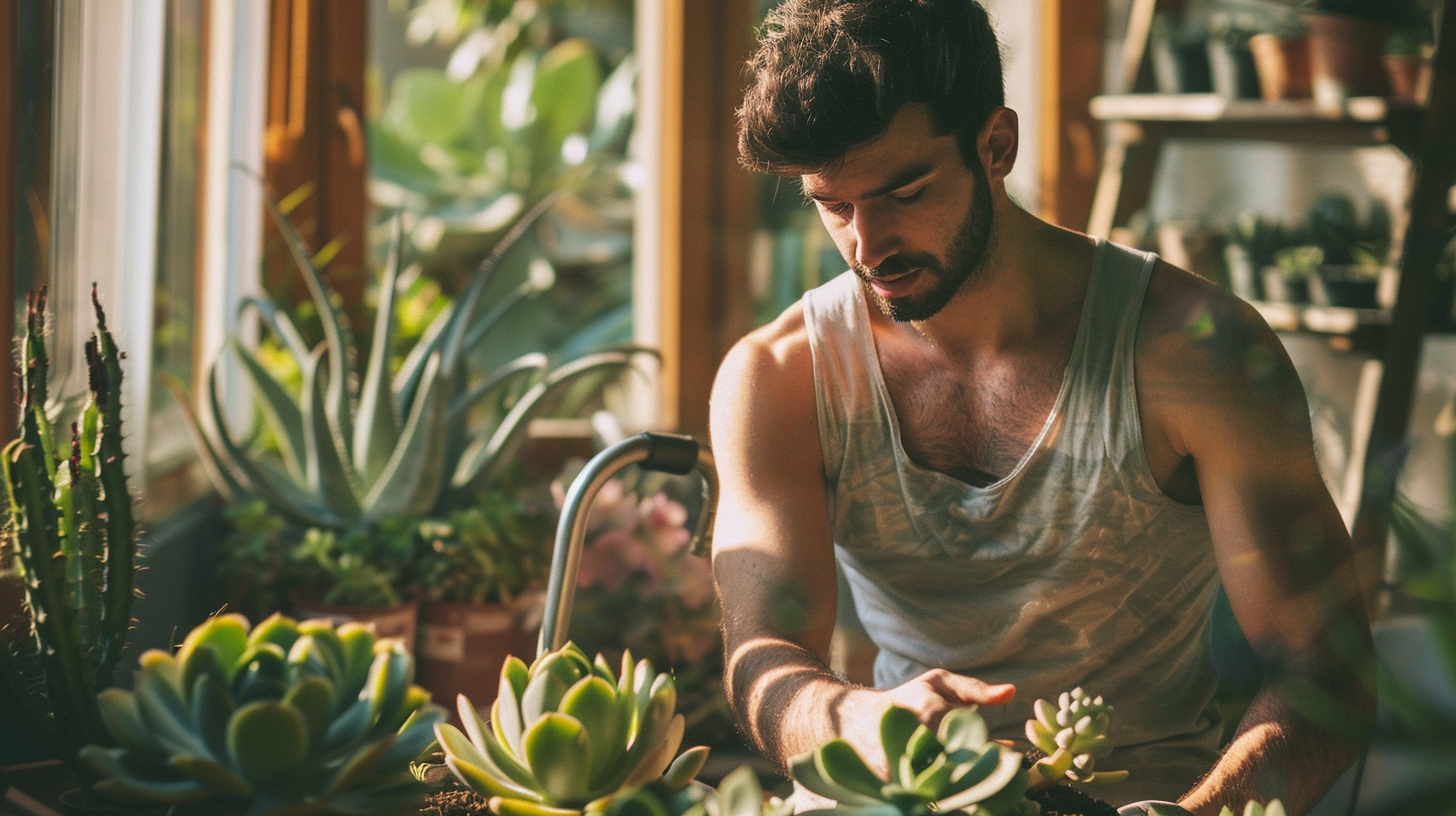
- Why It’s Great: Echeverias are popular succulents known for their stunning rosette shapes and beautiful colors. They are perfect for creating a low-maintenance, yet striking indoor garden display.
- Light: Needs bright, indirect sunlight.
- Watering: Water every 2-3 weeks, allowing soil to dry out between waterings.
- Size: Generally small, around 6 inches in diameter.
- Soil: Well-draining succulent mix.
- Feeding: Feed with diluted liquid succulent fertilizer during the growing season.
- Flowering: Produces bell-shaped flowers on tall stems.
18. Sedum (Various species)
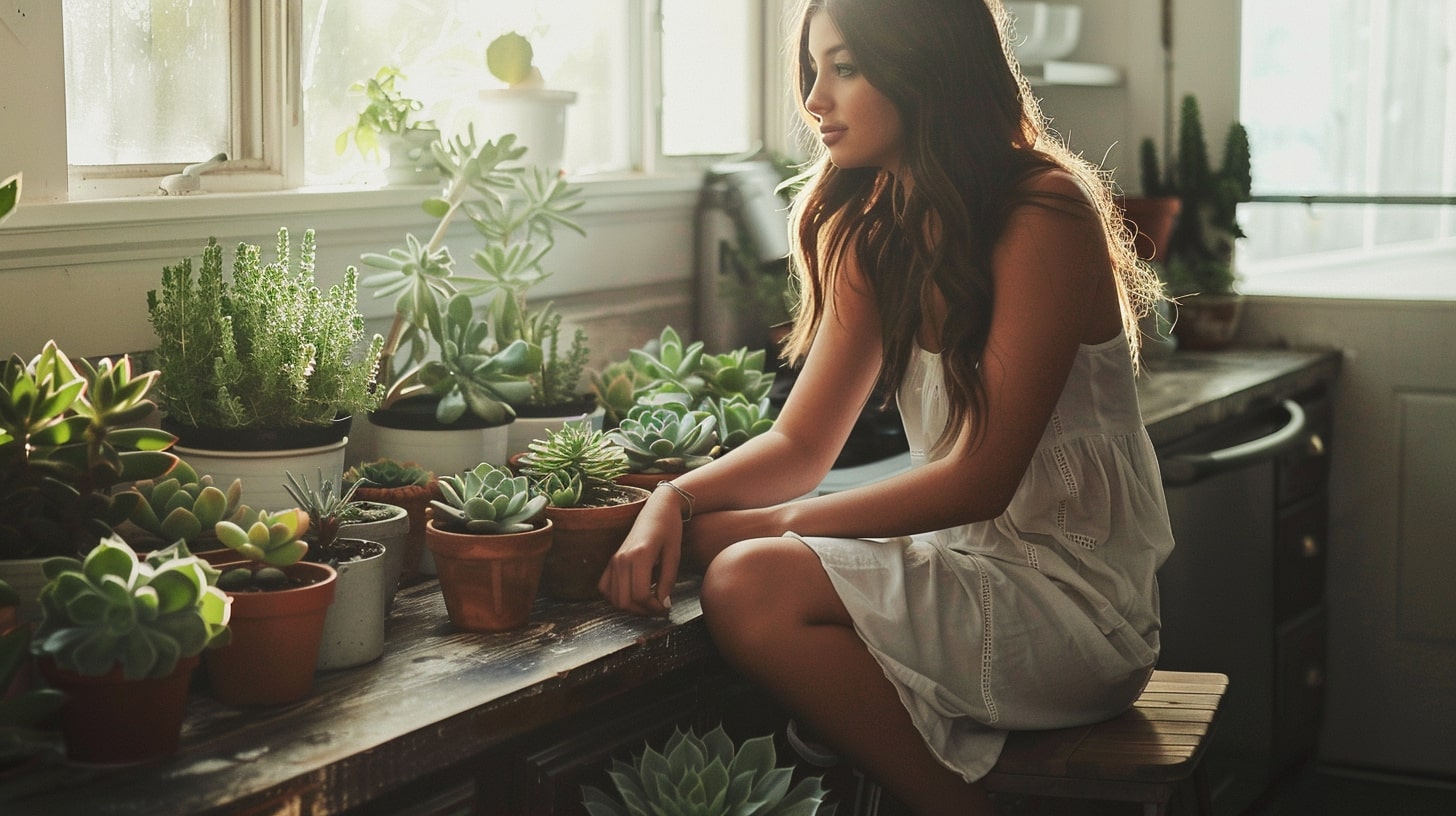
- Why It’s Great: Sedums, or “stonecrops,” are versatile succulents that come in an array of shapes, sizes, and colors. They’re incredibly easy to grow and great for creating a varied texture in your indoor garden.
- Light: Prefers full sun to partial shade.
- Watering: Allow the soil to dry out between waterings.
- Size: Varies depending on species.
- Soil: Well-draining soil, preferably a cactus mix.
- Feeding: Light feeding with a diluted liquid fertilizer in spring.
- Flowering: Most species bloom with small, star-shaped flowers.
19. Lithops (Living stones)

- Why It’s Great: Lithops are fascinating succulents that resemble small stones or pebbles. They’re perfect for collectors or anyone who loves unusual plants. Despite their rock-like appearance, they bloom with beautiful daisy-like flowers.
- Light: Needs bright light.
- Watering: Water sparingly; too much water can be fatal.
- Size: Usually under 1 inch in height.
- Soil: Sandy, well-draining soil.
- Feeding: No feeding required.
- Flowering: Produces small yellow or white flowers.
20. Bunny Ear Cactus (Opuntia microdasys)
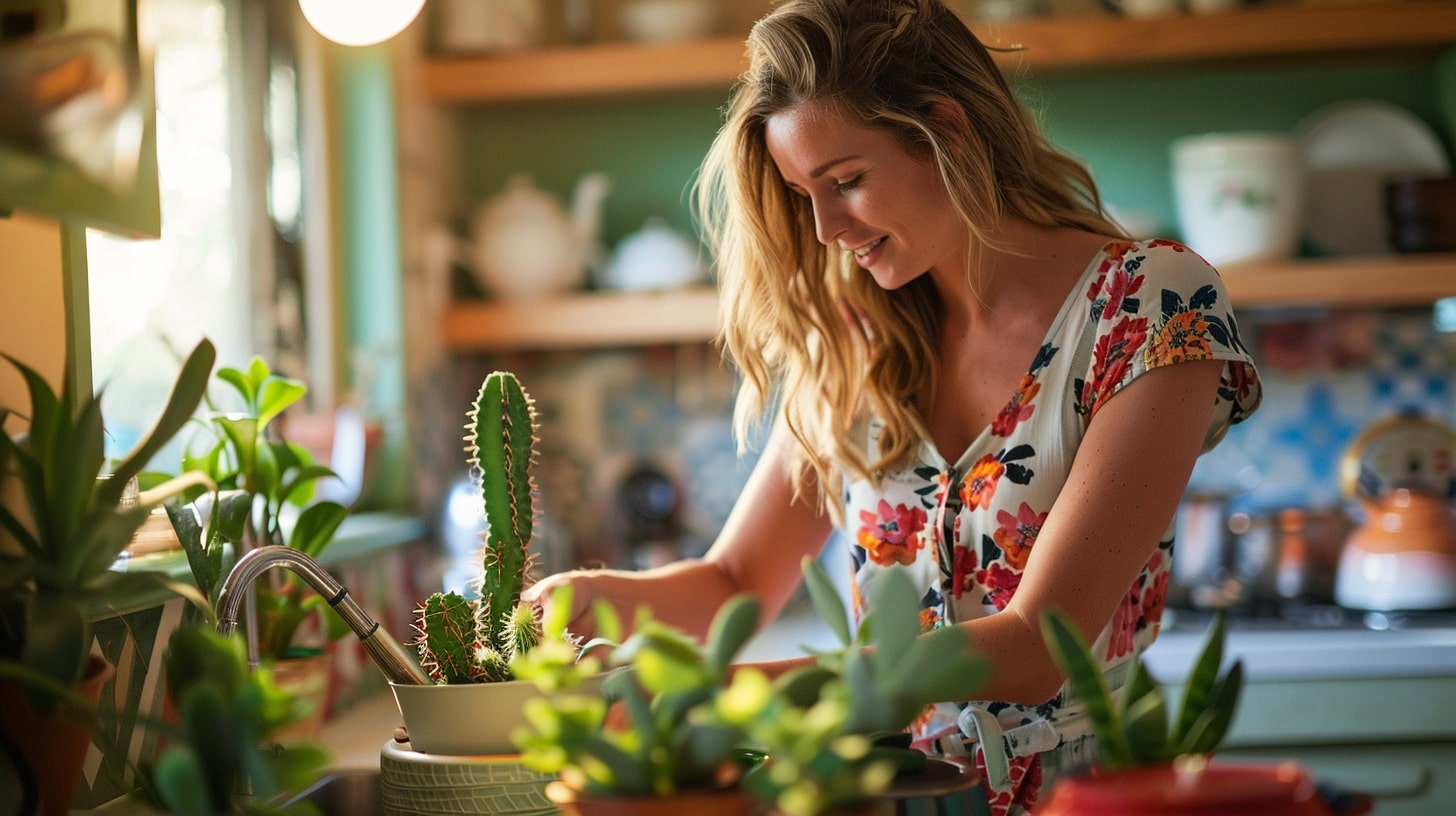
- Why It’s Great: This cactus is named for its cute, bunny ear-shaped pads. It’s a charming and quirky plant, perfect for adding a touch of whimsy to your space. Plus, it’s a great conversation starter!
- Light: Prefers full sun.
- Watering: Water every 2-3 weeks in summer, less in winter.
- Size: Can grow up to 2-3 feet tall.
- Soil: Well-draining cactus mix.
- Feeding: Feed with cactus fertilizer during the growing season.
- Flowering: Rarely flowers, but can produce yellow blooms.
21. Christmas Cactus (Schlumbergera)
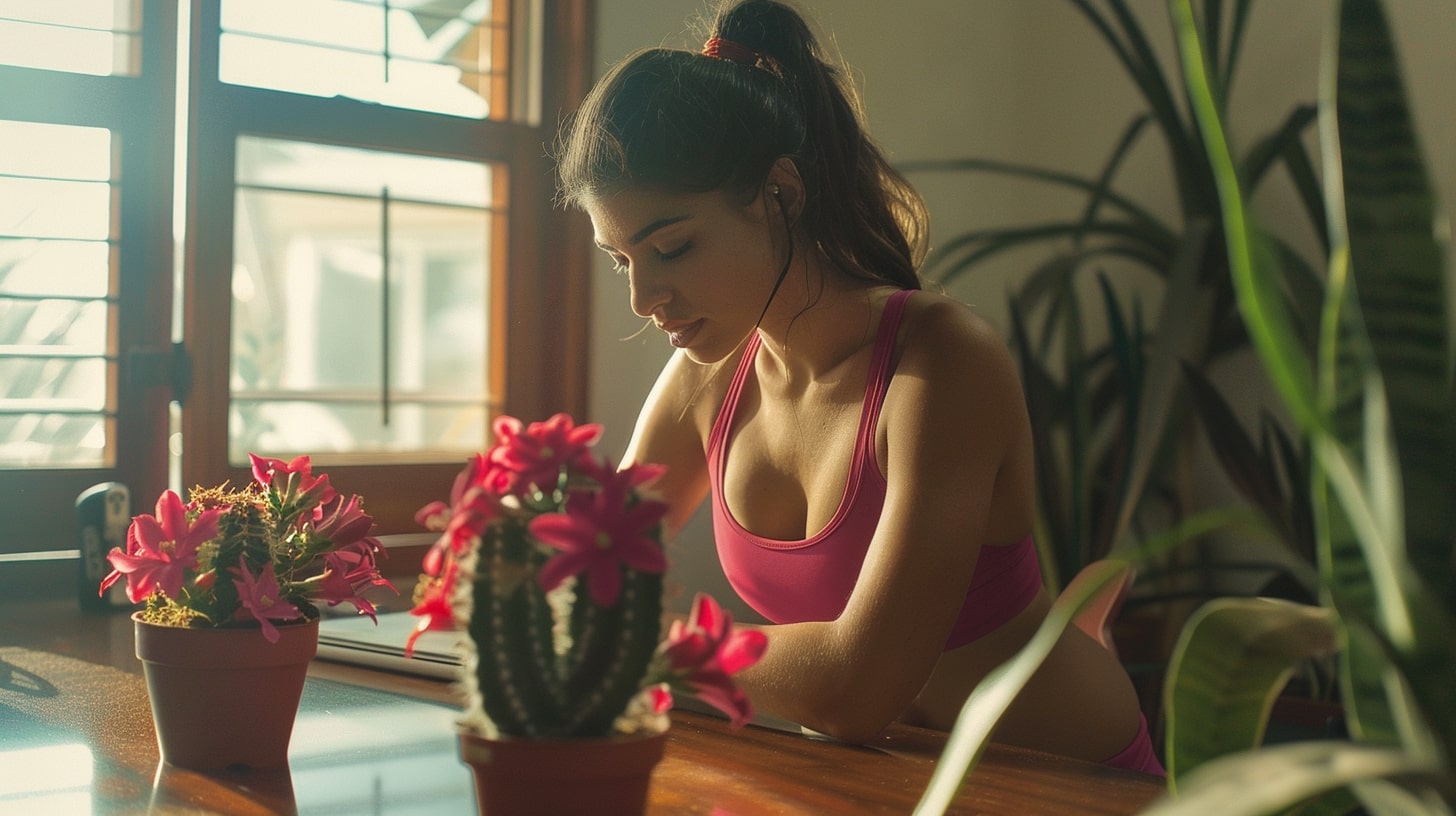
- Why It’s Great: The Christmas Cactus breaks the cactus stereotype by being leafy and flowering. Its beautiful, tubular flowers bloom just in time for the holidays, making it a festive addition to your home.
- Light: Bright, indirect light.
- Watering: Keep soil slightly moist; more frequent watering when buds form.
- Size: Grows about 12 inches tall.
- Soil: Well-draining potting mix.
- Feeding: Feed monthly with diluted houseplant fertilizer during growing season.
- Flowering: Produces vibrant flowers in winter, typically red or pink.
22. Burro’s Tail (Sedum morganianum)
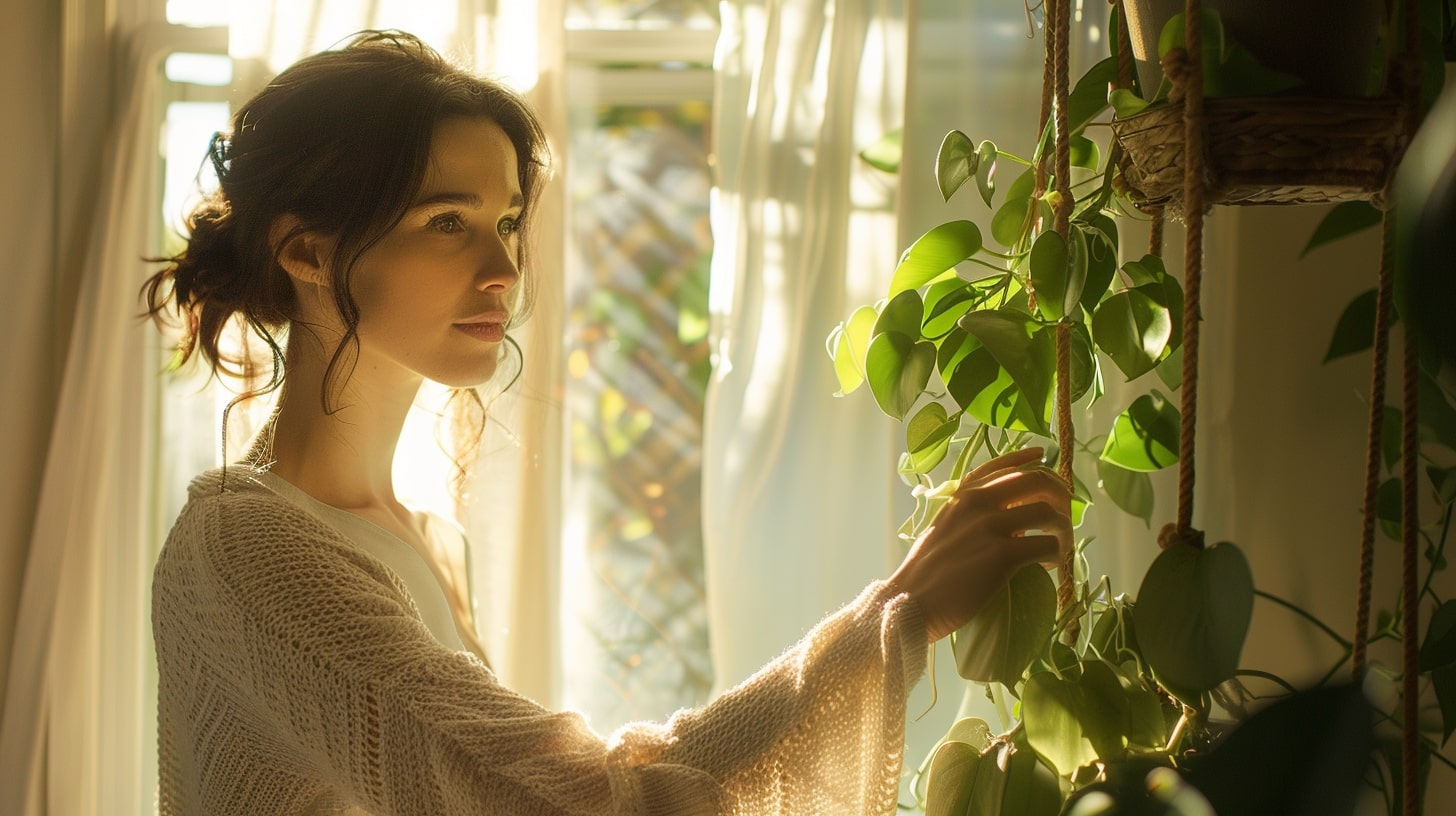
- Why It’s Great: The Burro’s Tail is a unique trailing succulent with rows of teardrop-shaped leaves. It’s perfect for hanging baskets, where its long stems can cascade beautifully over the sides.
- Light: Bright, indirect light.
- Watering: Water every 2-3 weeks, allowing soil to dry out between waterings.
- Size: Stems can trail to 4 feet long.
- Soil: Well-draining succulent mix.
- Feeding: Feed with a diluted liquid fertilizer once in spring and summer.
- Flowering: Produces small pink or red flowers in summer.
23. Air Plants (Tillandsia)
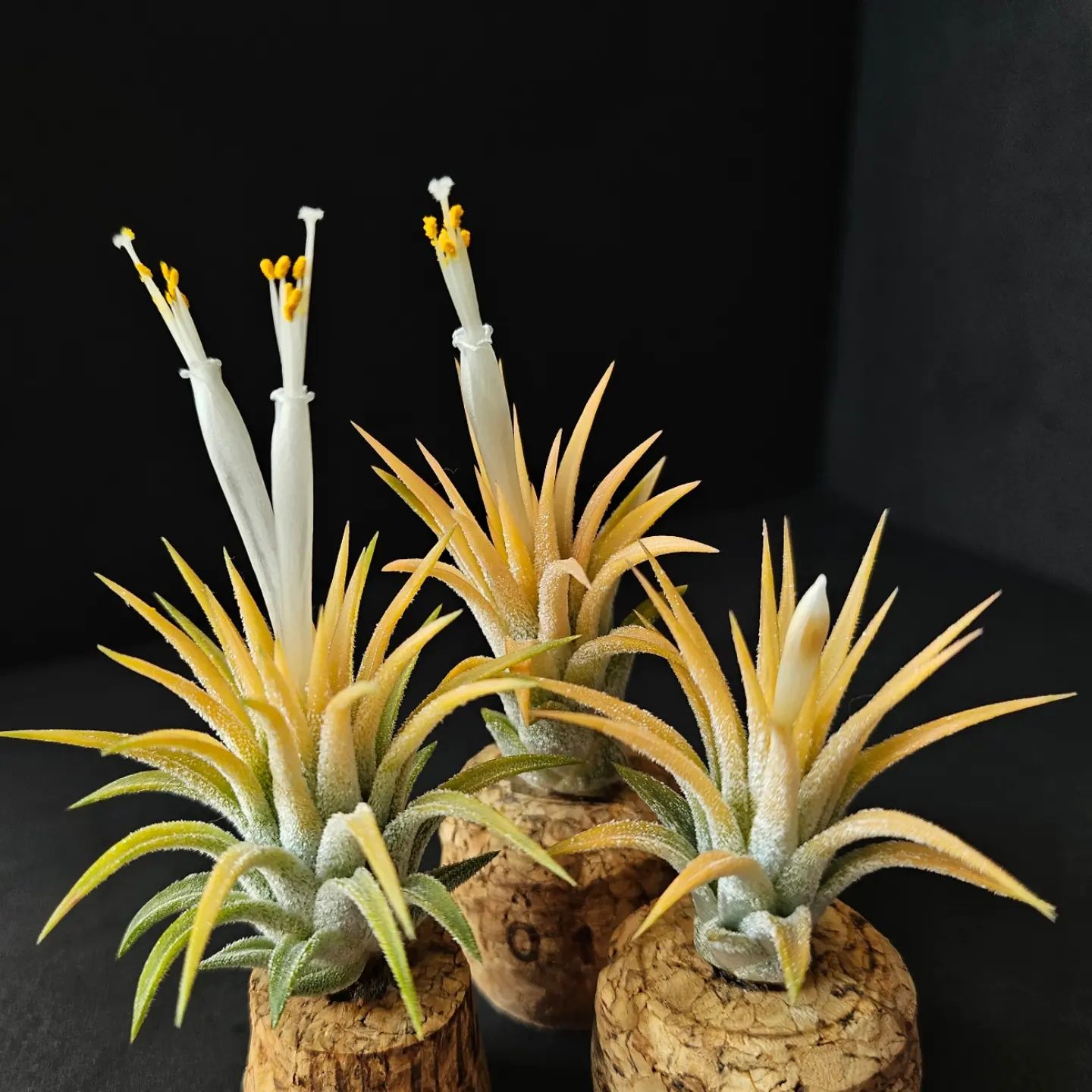
- Why It’s Great: Air Plants are the ultimate low-maintenance plant. They don’t need soil to grow, getting their nutrients from the air. They can be displayed in creative ways, like in glass terrariums or mounted on driftwood.
- Light: Bright, indirect light.
- Watering: Mist 2-3 times a week or soak for 30 minutes weekly.
- Size: Varies, usually small.
- Soil: No soil needed.
- Feeding: Use a bromeliad fertilizer in the watering solution once a month.
- Flowering: Produces flowers once in its lifetime.
24. Elephant Bush (Portulacaria afra)
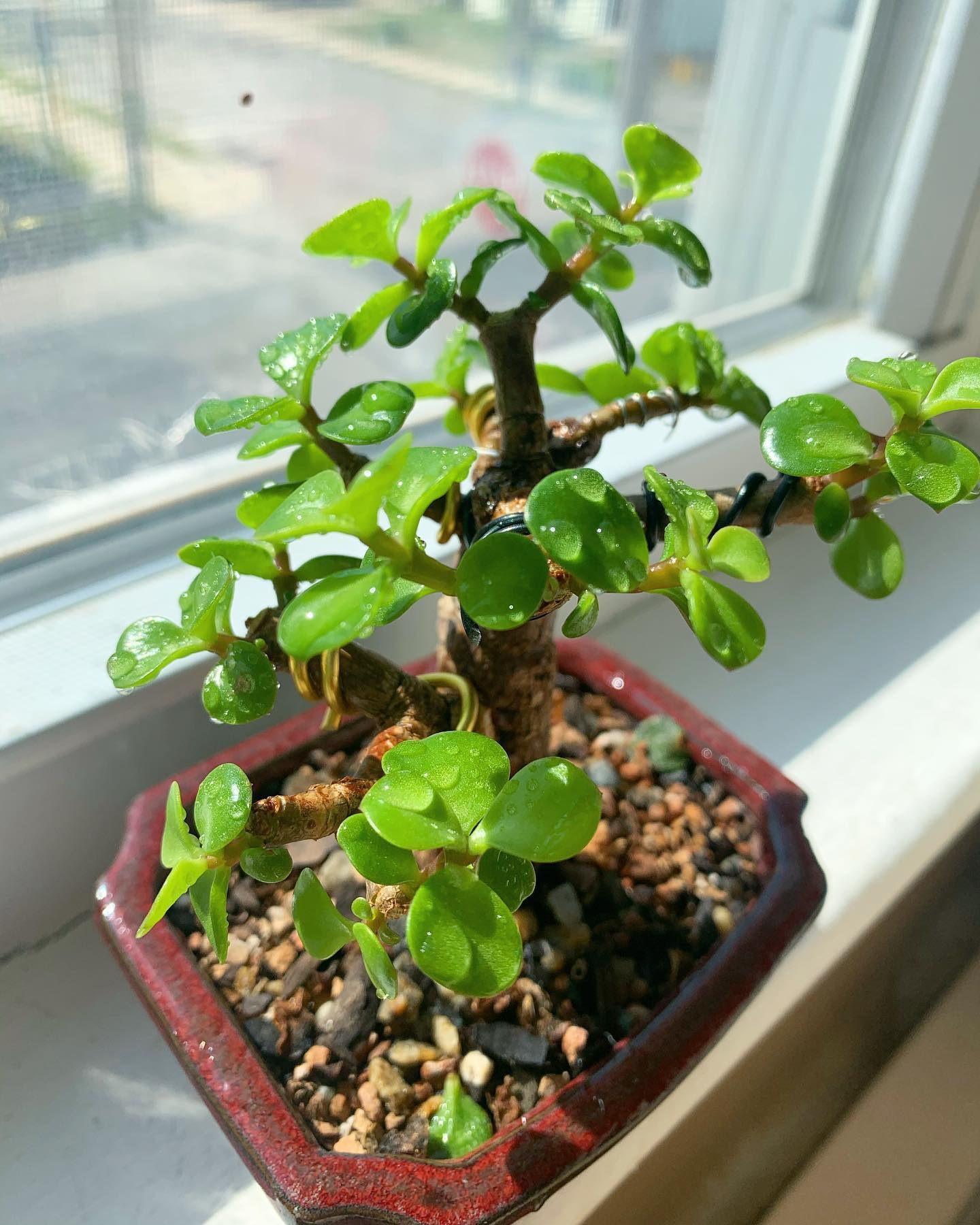
- Why It’s Great: The Elephant Bush is a versatile and easy-to-grow succulent with small, glossy leaves and a woody stem. It’s often used in bonsai and is great for adding a touch of the exotic to your home.
- Light: Prefers bright, indirect light.
- Watering: Allow soil to dry out between waterings.
- Size: Can grow up to 12 feet tall, but easily pruned for size.
- Soil: Well-draining potting mix.
- Feeding: Feed with a diluted liquid fertilizer every few months.
- Flowering: Rarely flowers indoors.
25. String of Hearts (Ceropegia woodii)
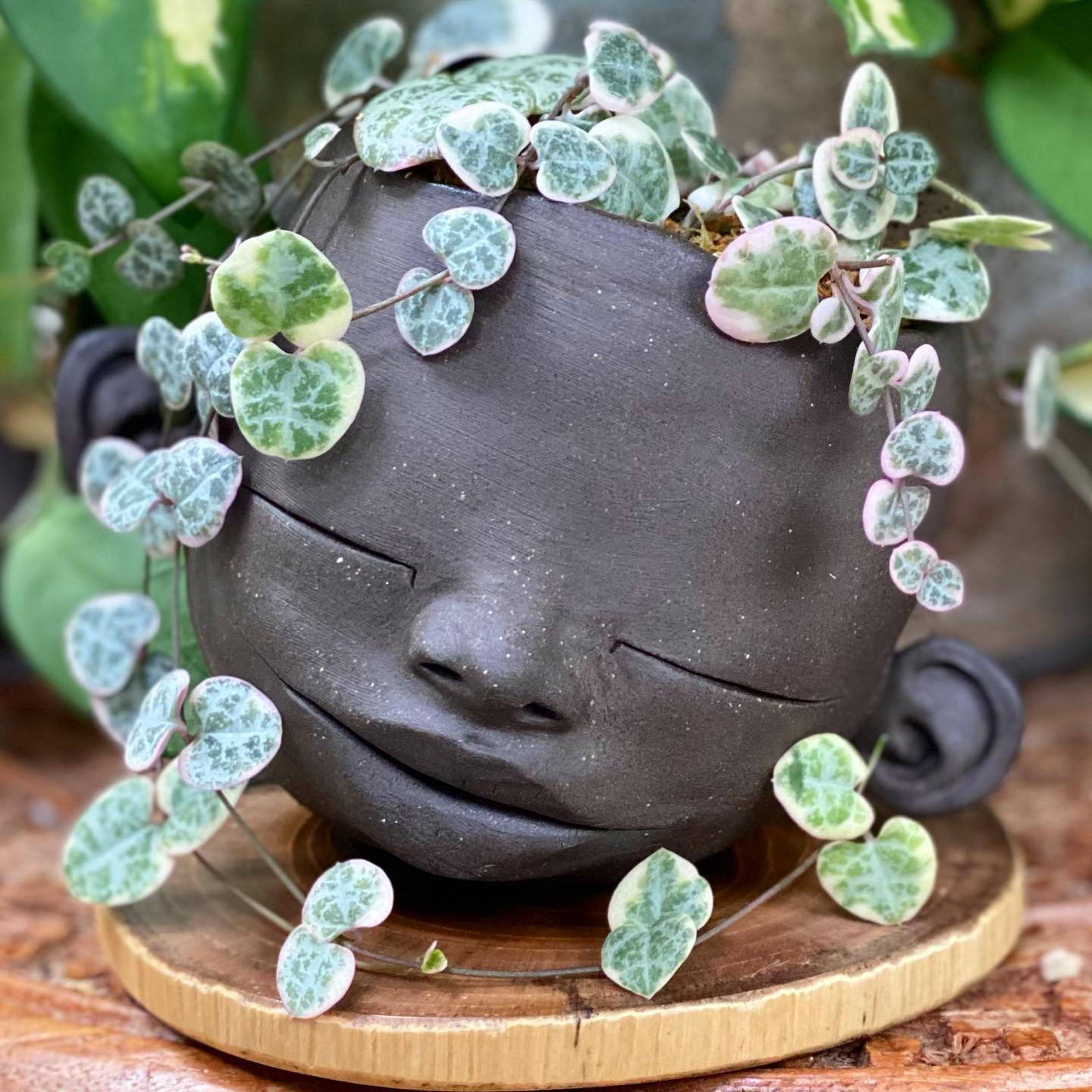
- Why It’s Great: The String of Hearts is a charming trailing plant with heart-shaped leaves and delicate, vine-like stems. Its romantic appearance makes it a favorite for hanging planters and high shelves.
- Light: Bright, indirect light.
- Watering: Water sparingly, allowing soil to dry out between waterings.
- Size: Trails up to 4 feet long.
- Soil: Well-draining potting mix.
- Feeding: Light feeding with a liquid fertilizer every few months.
- Flowering: Produces small, lantern-shaped purple flowers.
26. Kalanchoe (Various species)
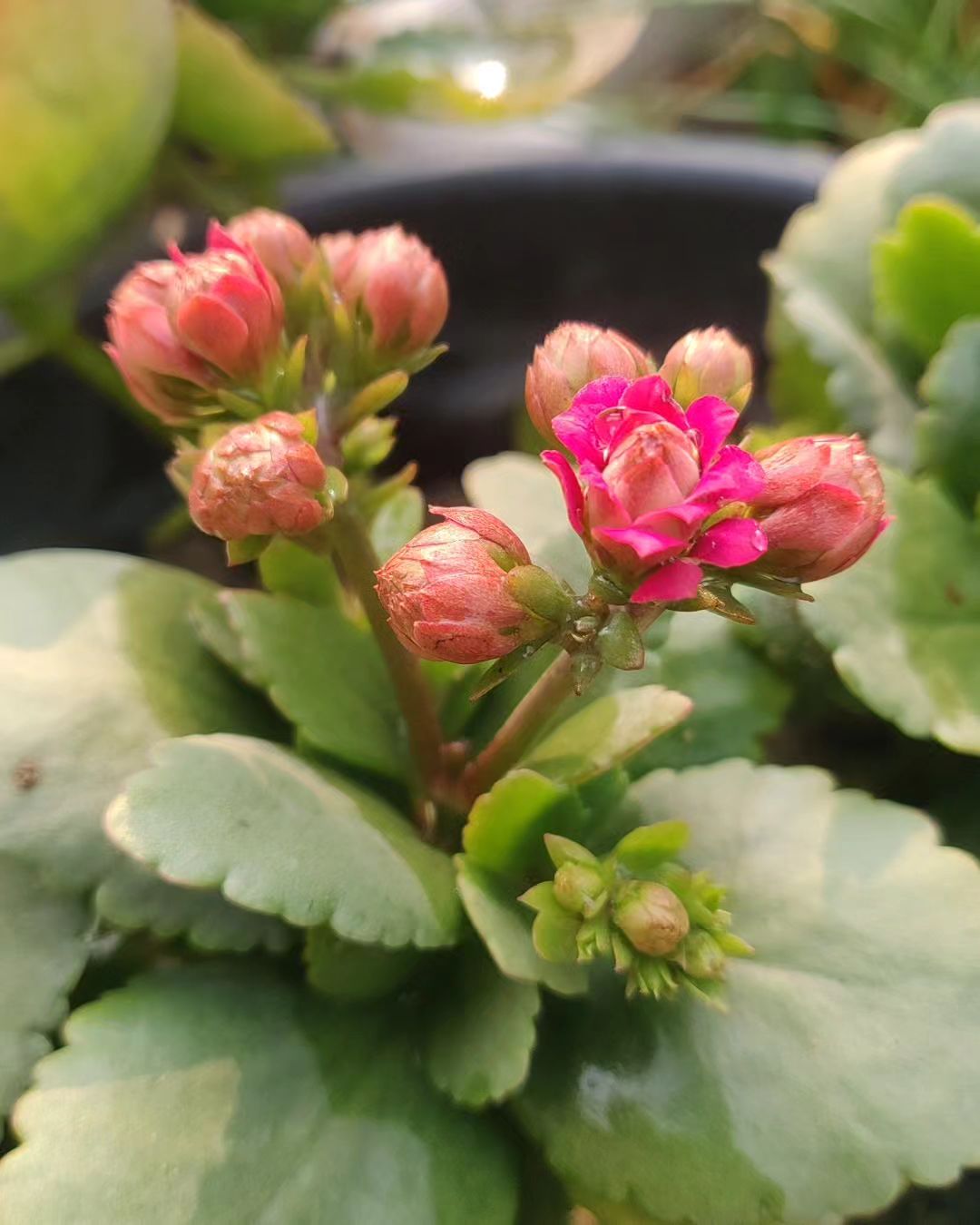
- Why It’s Great: Kalanchoes are cheerful, flowering succulents with vibrant blooms and thick leaves. They bring a pop of color to your indoor space and are great for adding a low-maintenance, bright focal point.
- Light: Bright, natural light.
- Watering: Allow soil to dry out between waterings.
- Size: Typically grows between 6-12 inches tall.
- Soil: Well-draining succulent mix.
- Feeding: Feed with a diluted liquid fertilizer every two months.
- Flowering: Produces clusters of flowers in various colors.
27. Ox Tongue (Gasteria)
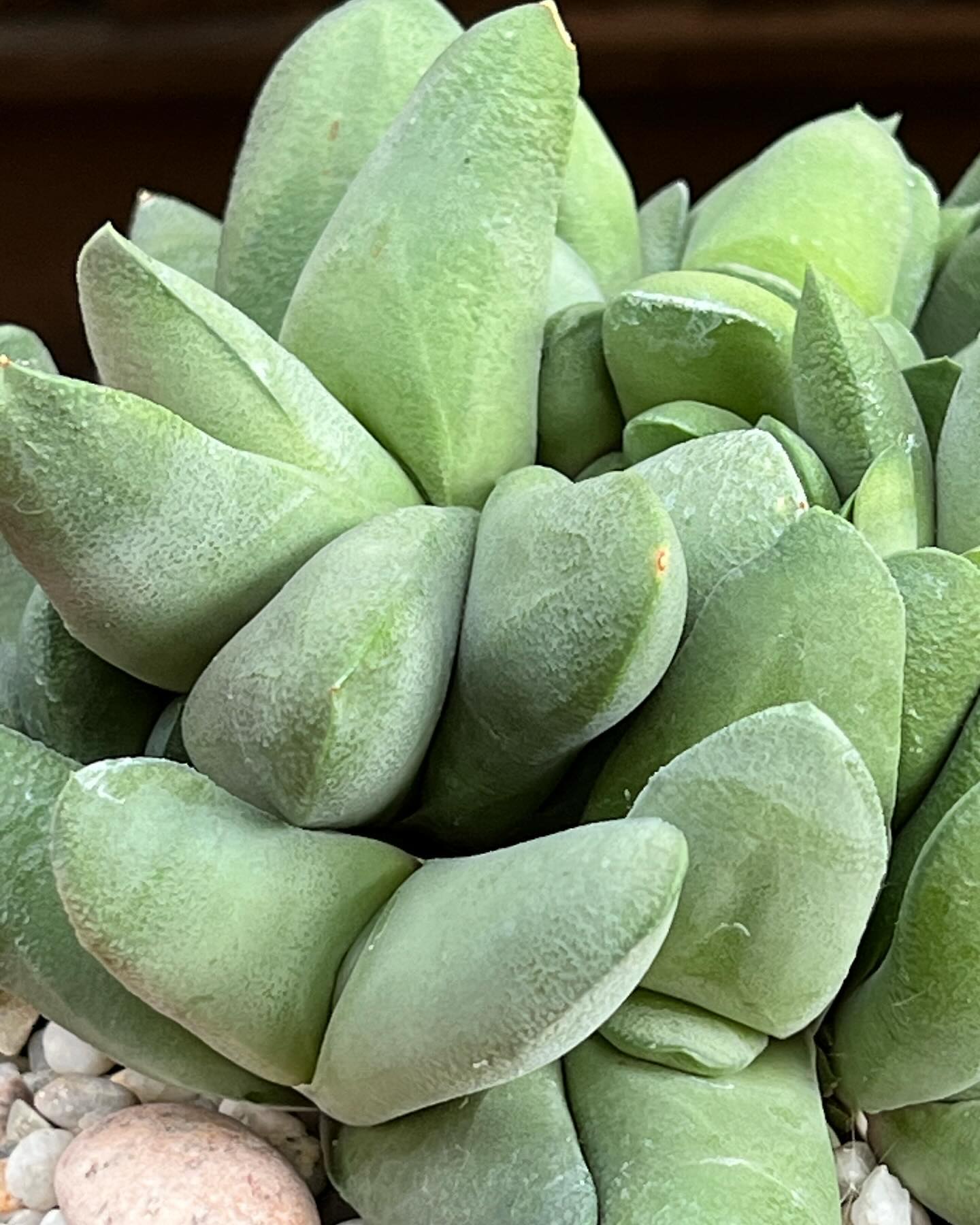
- Why It’s Great: Ox Tongue plants are unique succulents with rough, tongue-like leaves, often speckled or striped. They’re perfect for adding texture and interest to your collection of houseplants.
- Light: Prefers partial sun to light shade.
- Watering: Water every 2-3 weeks, allowing soil to dry out.
- Size: Can grow up to 1 foot tall.
- Soil: Well-draining succulent mix.
- Feeding: Minimal feeding; once in spring with a succulent fertilizer.
- Flowering: Produces small, tubular flowers.
28. Zebra Plant (Haworthiopsis fasciata)
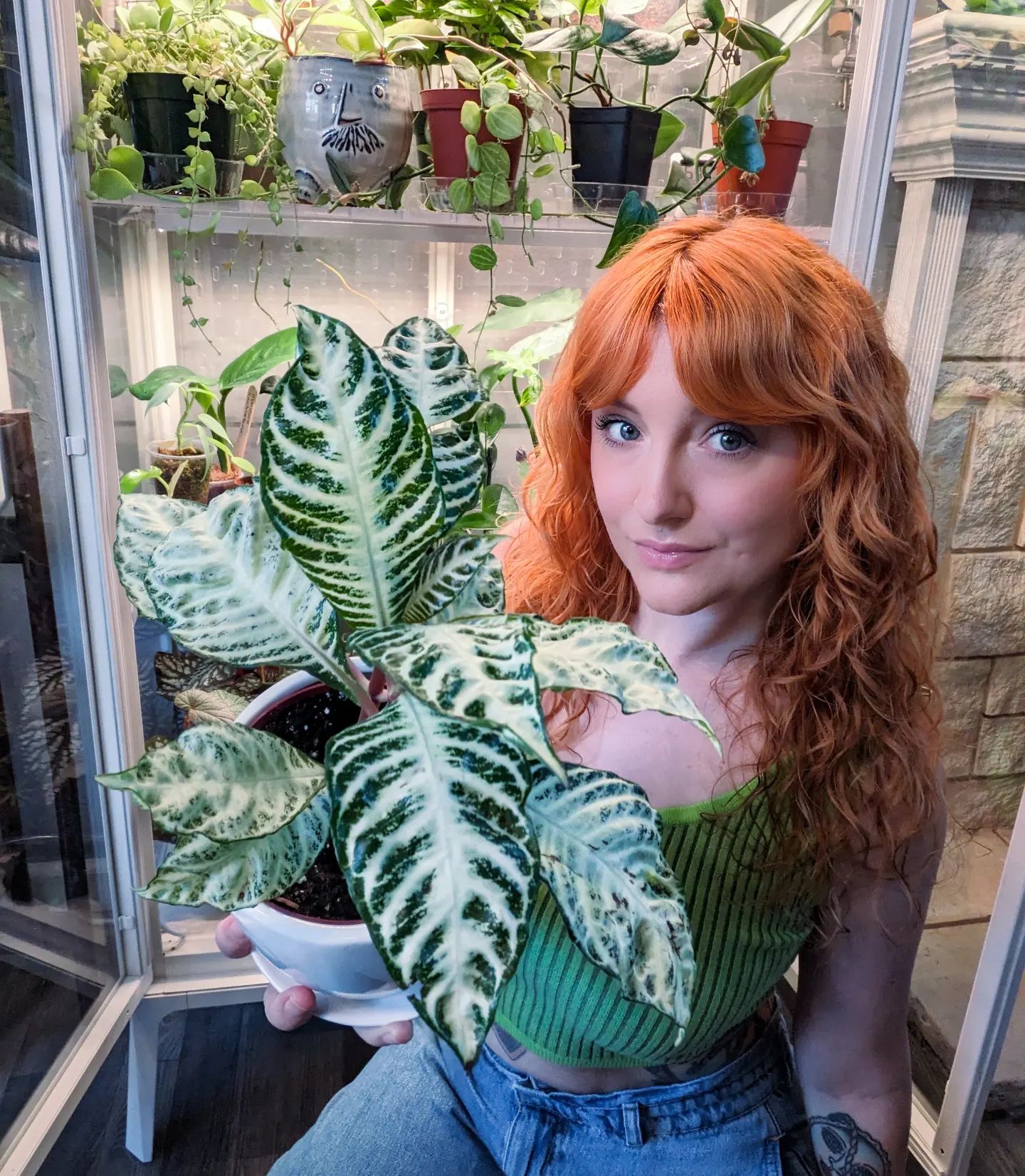
- Why It’s Great: The Zebra Plant is a delightful small succulent, perfect for desks and windowsills. Its striped leaves and compact shape make it an ideal choice for tight spaces, adding a dash of greenery without the need for much room.
- Light: Prefers bright, indirect light.
- Watering: Water every 3-4 weeks, allowing soil to dry out.
- Size: Grows about 5-6 inches tall.
- Soil: Cactus or succulent potting mix.
- Feeding: Feed with a cactus fertilizer every few months.
- Flowering: Produces small white flowers.
29. Mother-in-Law’s Tongue (Sansevieria)
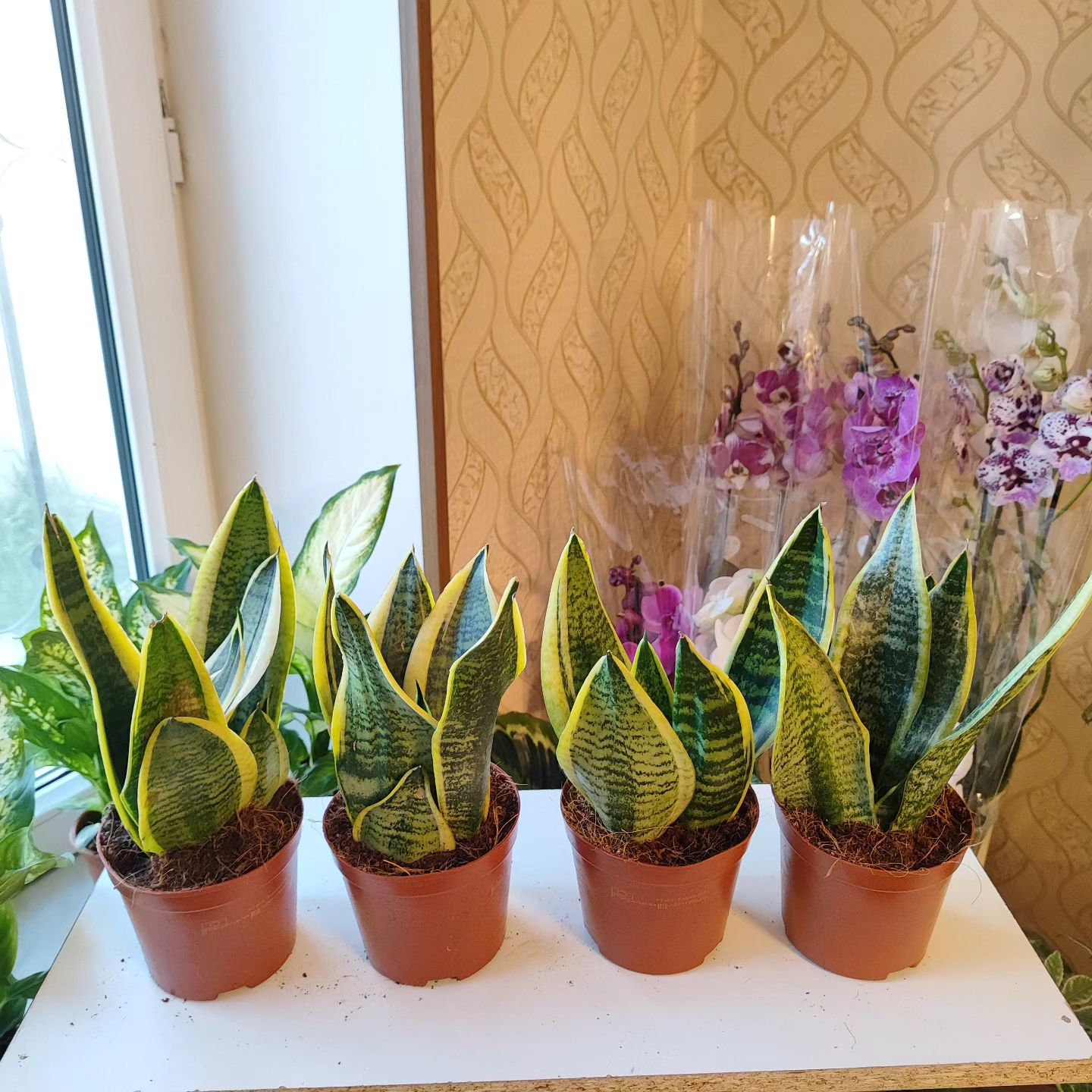
- Why It’s Great: Also known as the Snake Plant, Mother-in-Law’s Tongue is a resilient and striking plant. Its sword-like leaves stand upright and can vary in color, making it a bold addition to any indoor setting.
- Light: Tolerates low light but thrives in indirect sunlight.
- Watering: Let soil dry between waterings; water every 3-4 weeks.
- Size: Can grow up to 3-4 feet tall.
- Soil: Well-draining, sandy soil.
- Feeding: Fertilize sparingly; once every few months.
- Flowering: Rarely flowers indoors.
30. Bird of Paradise (Strelitzia)
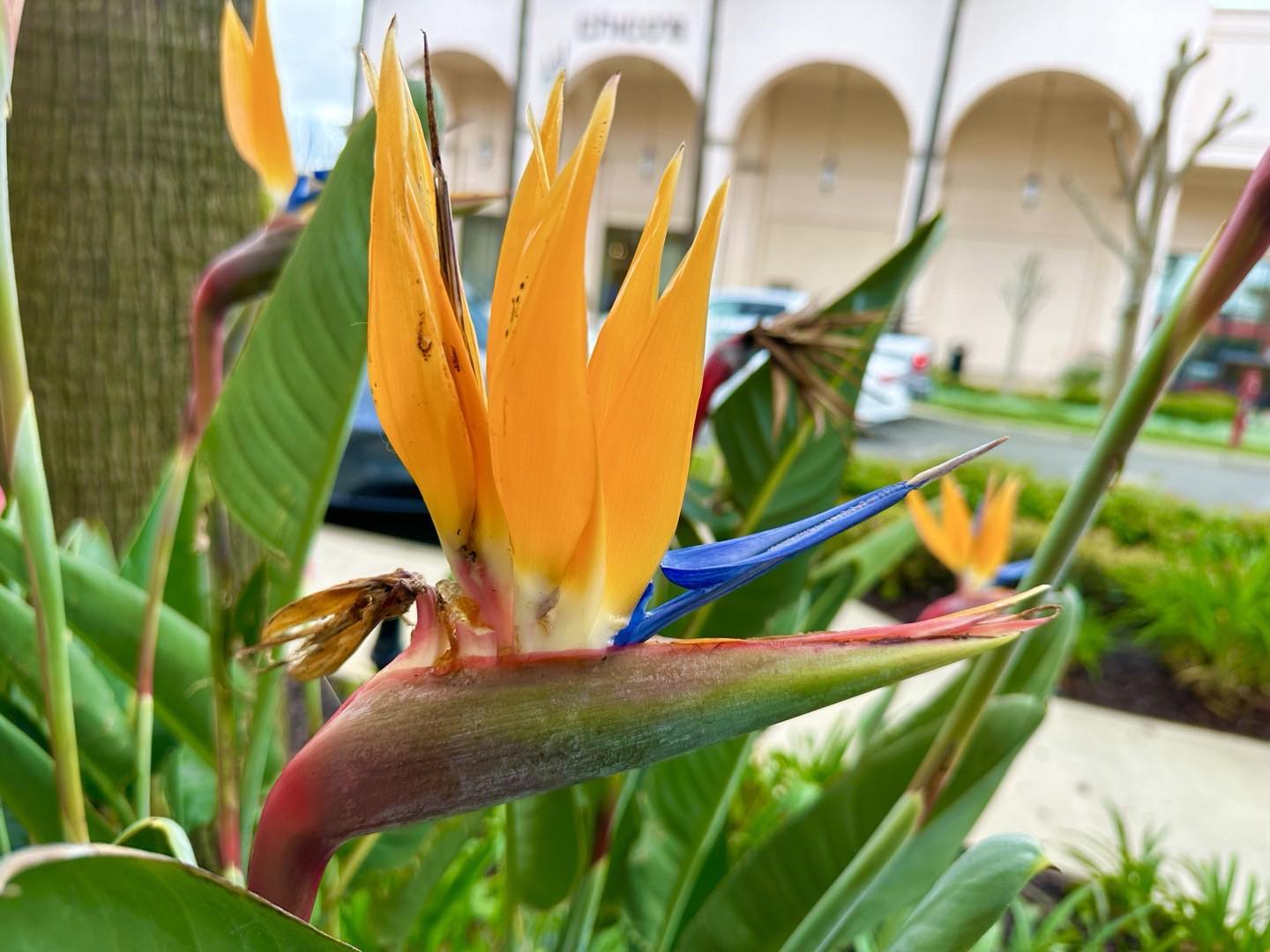
- Why It’s Great: The Bird of Paradise brings a touch of the tropics into your home with its large, glossy leaves and striking bird-like flowers. It’s perfect for making a bold statement in larger rooms or spaces.
- Light: Bright, indirect light.
- Watering: Keep soil moist but not soggy; water every 1-2 weeks.
- Size: Can grow up to 6 feet tall.
- Soil: Rich, well-draining potting mix.
- Feeding: Feed with a general-purpose liquid fertilizer every month during spring and summer.
- Flowering: Can produce large, orange, and blue bird-like flowers under optimal conditions.
31. Dragon Tree (Dracaena)
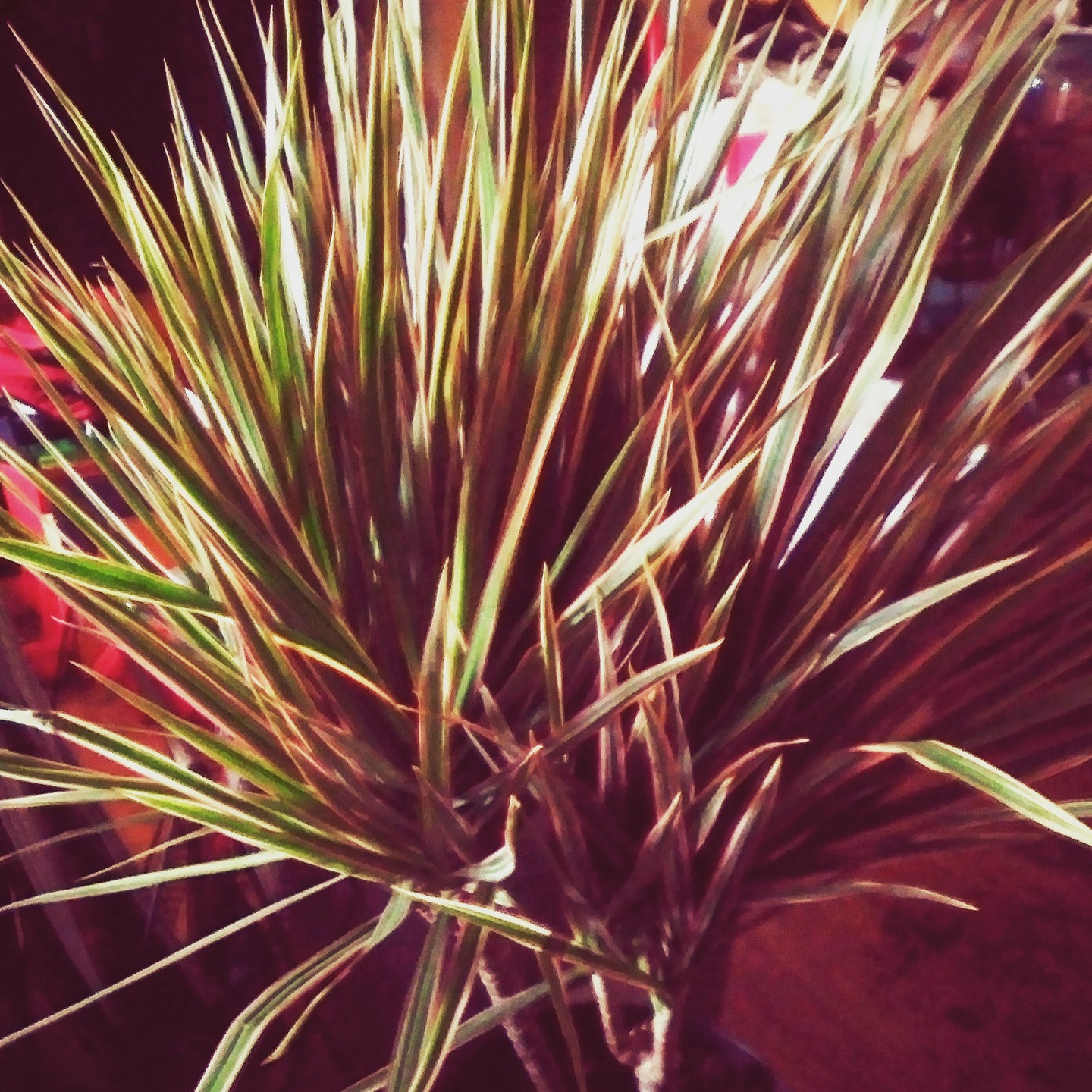
- Why It’s Great: The Dragon Tree is an elegant and resilient indoor plant, known for its slim, upright branches and slender, green leaves. It’s a great air purifier and suits modern and minimalistic decor.
- Light: Prefers moderate to bright, indirect light.
- Watering: Allow the top soil to dry out between waterings.
- Size: Can grow up to 6 feet tall.
- Soil: Well-draining potting soil.
- Feeding: Feed every 6 weeks with liquid foliage plant fertilizer in spring and summer.
- Flowering: Rarely flowers indoors.
32. Fiddle Leaf Fig (Ficus lyrata)
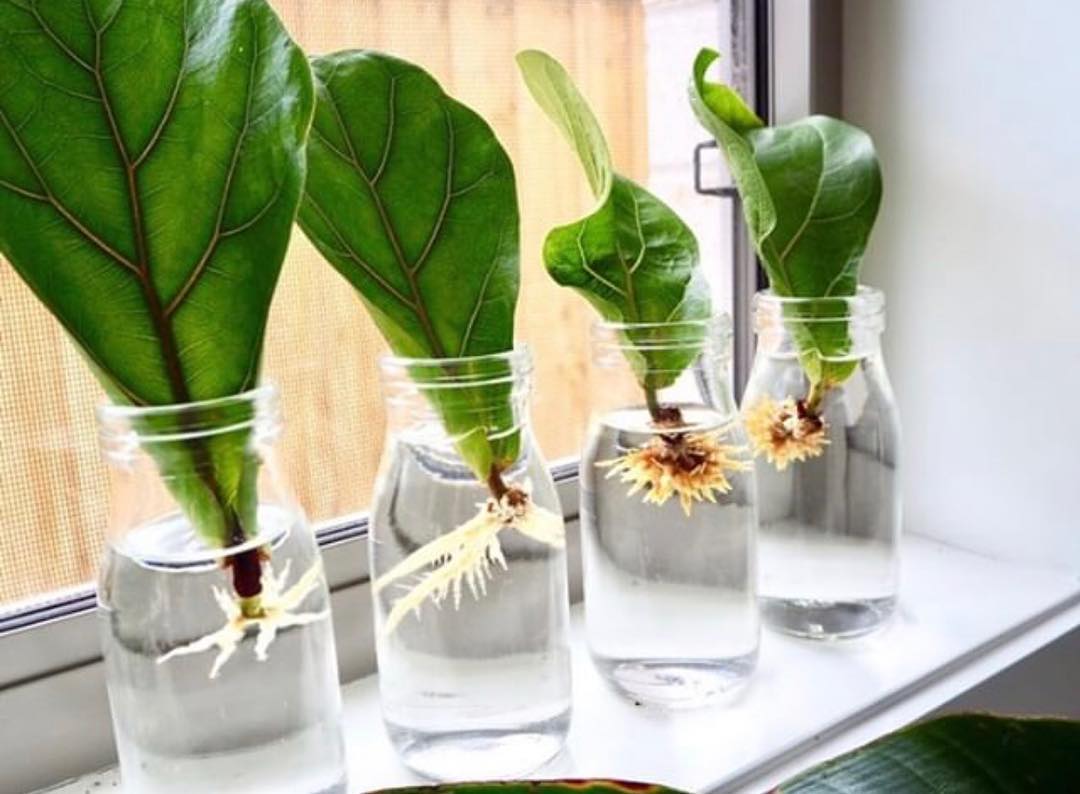
- Why It’s Great: The Fiddle Leaf Fig is a trendy and stylish plant, famous for its large, violin-shaped leaves. It’s a perfect focal point for any room, adding a lush and vibrant touch to your interior space.
- Light: Bright, indirect light.
- Watering: Water when the top inch of soil is dry, usually every 1-2 weeks.
- Size: Can grow up to 10 feet tall indoors.
- Soil: Fast-draining potting soil.
- Feeding: Feed with a liquid fertilizer every month during growing seasons.
- Flowering: Does not flower indoors.
33. Boston Fern (Nephrolepis exaltata)
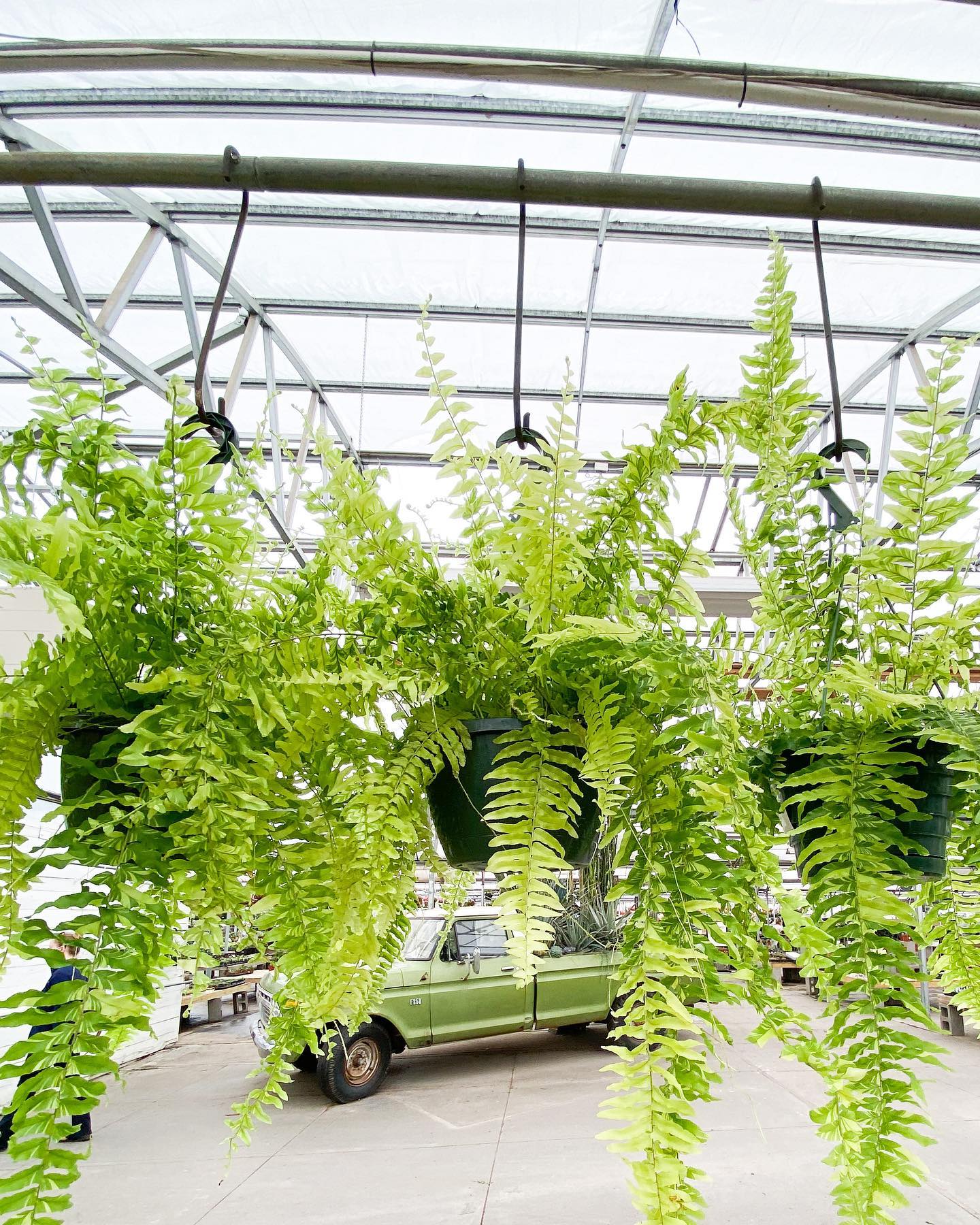
- Why It’s Great: Boston Ferns are classic houseplants with lush, feathery fronds that create a cozy and woodsy feel. They are excellent natural humidifiers and work well in bathrooms and kitchens.
- Light: Prefers bright, filtered light.
- Watering: Keep soil consistently moist; water about once a week.
- Size: Can reach 2-3 feet in width and length.
- Soil: Rich, organic, well-draining potting mix.
- Feeding: Feed monthly during growing season with a balanced liquid fertilizer.
- Flowering: Non-flowering plant.
34. Arrowhead Plant (Syngonium podophyllum)
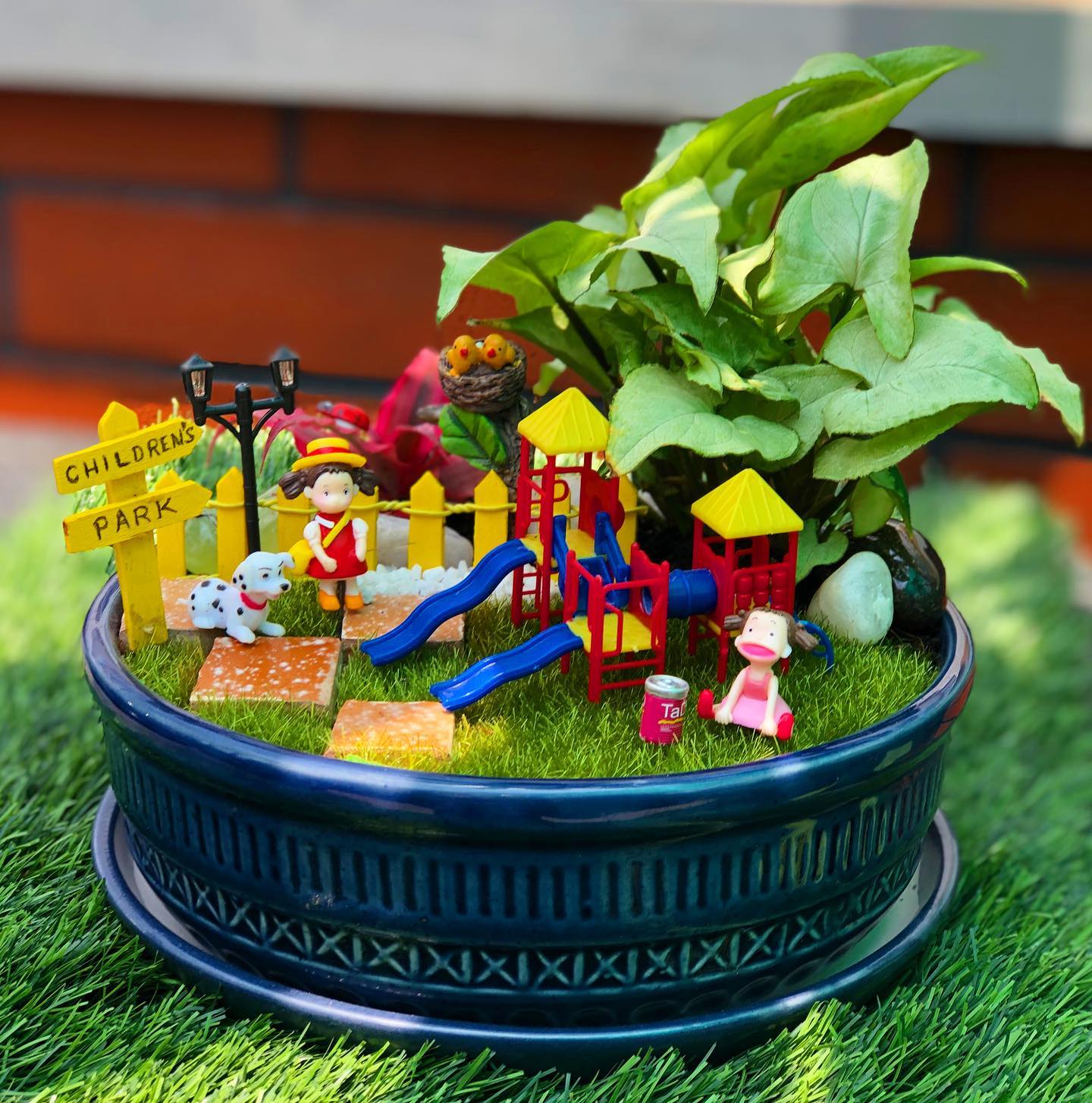
- Why It’s Great: The Arrowhead Plant, with its arrow-shaped leaves and varied colors, is a versatile and attractive option for indoor gardeners. It can be grown as a bushy plant or allowed to climb or trail, adapting to your space and style.
- Light: Prefers bright, indirect light but can tolerate low light.
- Watering: Water when the top inch of soil dries out.
- Size: Can trail or climb several feet.
- Soil: Well-draining potting mix.
- Feeding: Feed every month with half-strength liquid houseplant fertilizer.
- Flowering: Rarely flowers indoors.
35. Flaming Katy (Kalanchoe blossfeldiana)
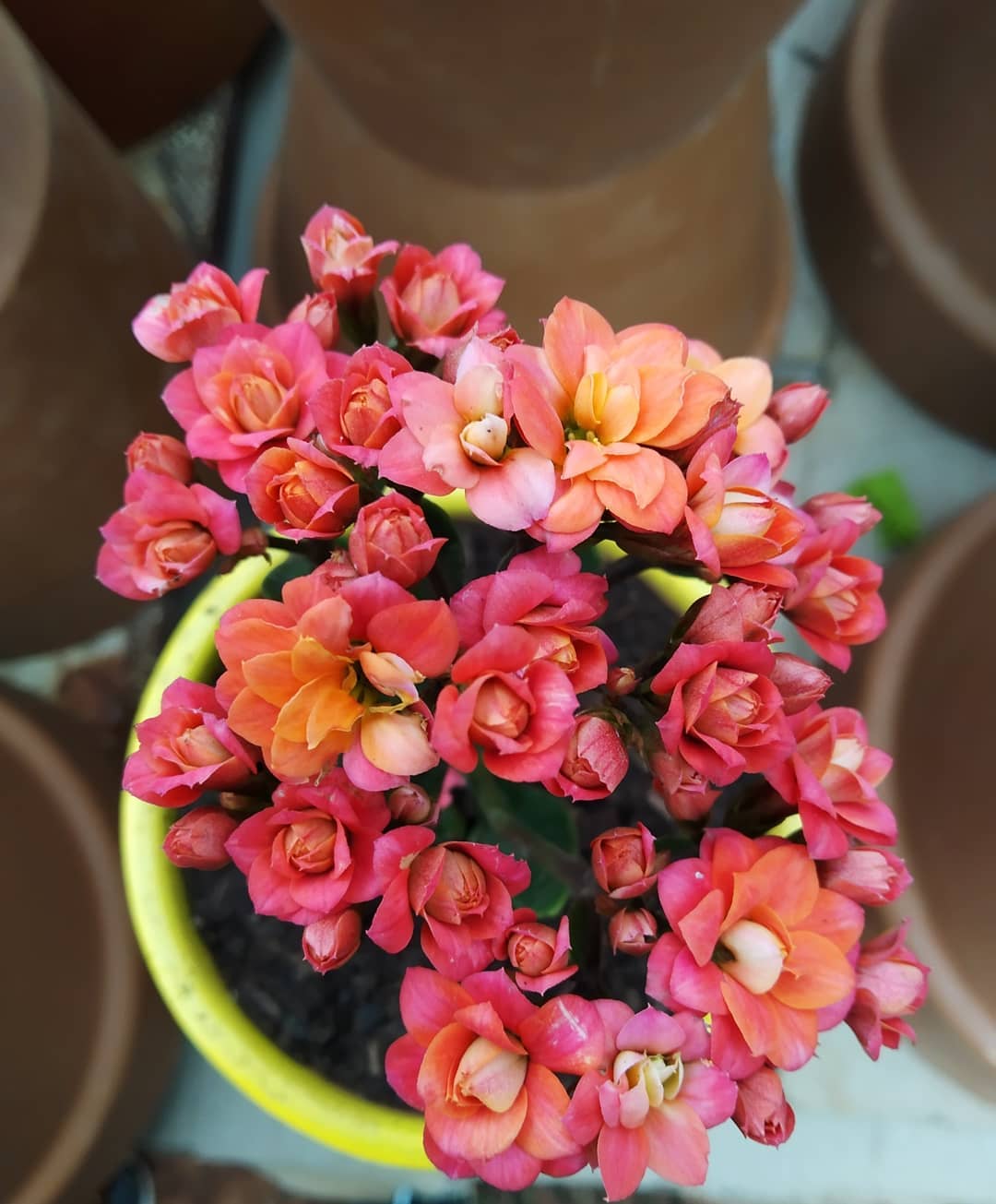
- Why It’s Great: Flaming Katy is a cheerful succulent known for its colorful blooms and glossy green leaves. It’s a popular choice for adding a splash of color to indoor spaces, especially during the gray winter months.
- Light: Bright, indirect sunlight.
- Watering: Allow soil to dry between waterings.
- Size: Grows about 12 inches tall.
- Soil: Well-draining succulent or cactus mix.
- Feeding: Feed once a month with a balanced liquid fertilizer during growing season.
- Flowering: Produces vibrant flowers in winter or spring.
36. Dwarf Umbrella Tree (Schefflera arboricola)
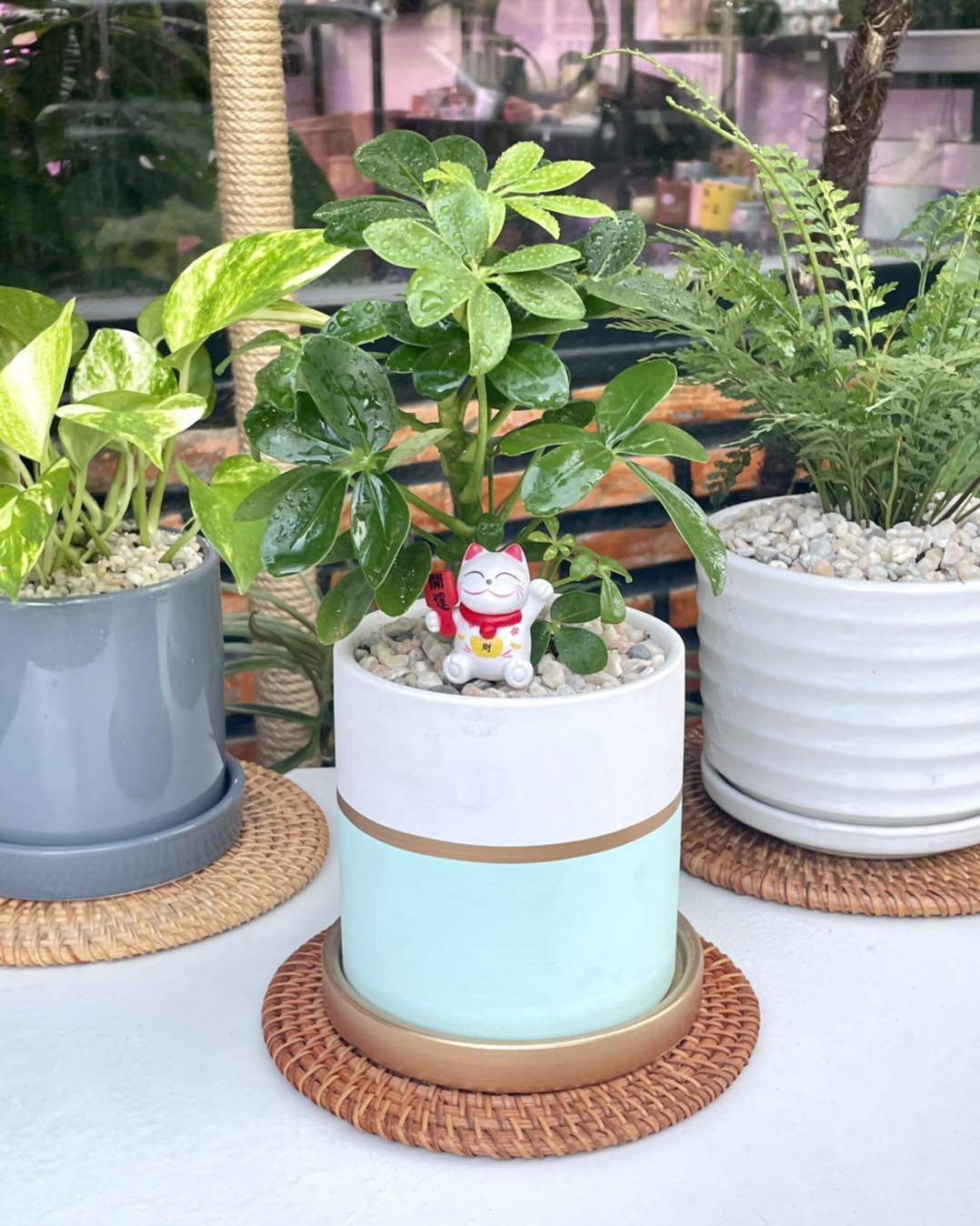
- Why It’s Great: The Dwarf Umbrella Tree is a hardy plant that brings a touch of the tropical rainforest into your home. With its umbrella-like leaf formation, it’s an attractive and easy-to-care-for choice for any indoor gardener.
- Light: Bright, indirect light.
- Watering: Water when the top inch of soil becomes dry.
- Size: Can grow up to 4-5 feet tall indoors.
- Soil: Well-draining potting soil.
- Feeding: Feed every 6-8 weeks with a balanced liquid fertilizer.
- Flowering: Rarely flowers indoors.
37. Parlor Palm (Chamaedorea elegans)
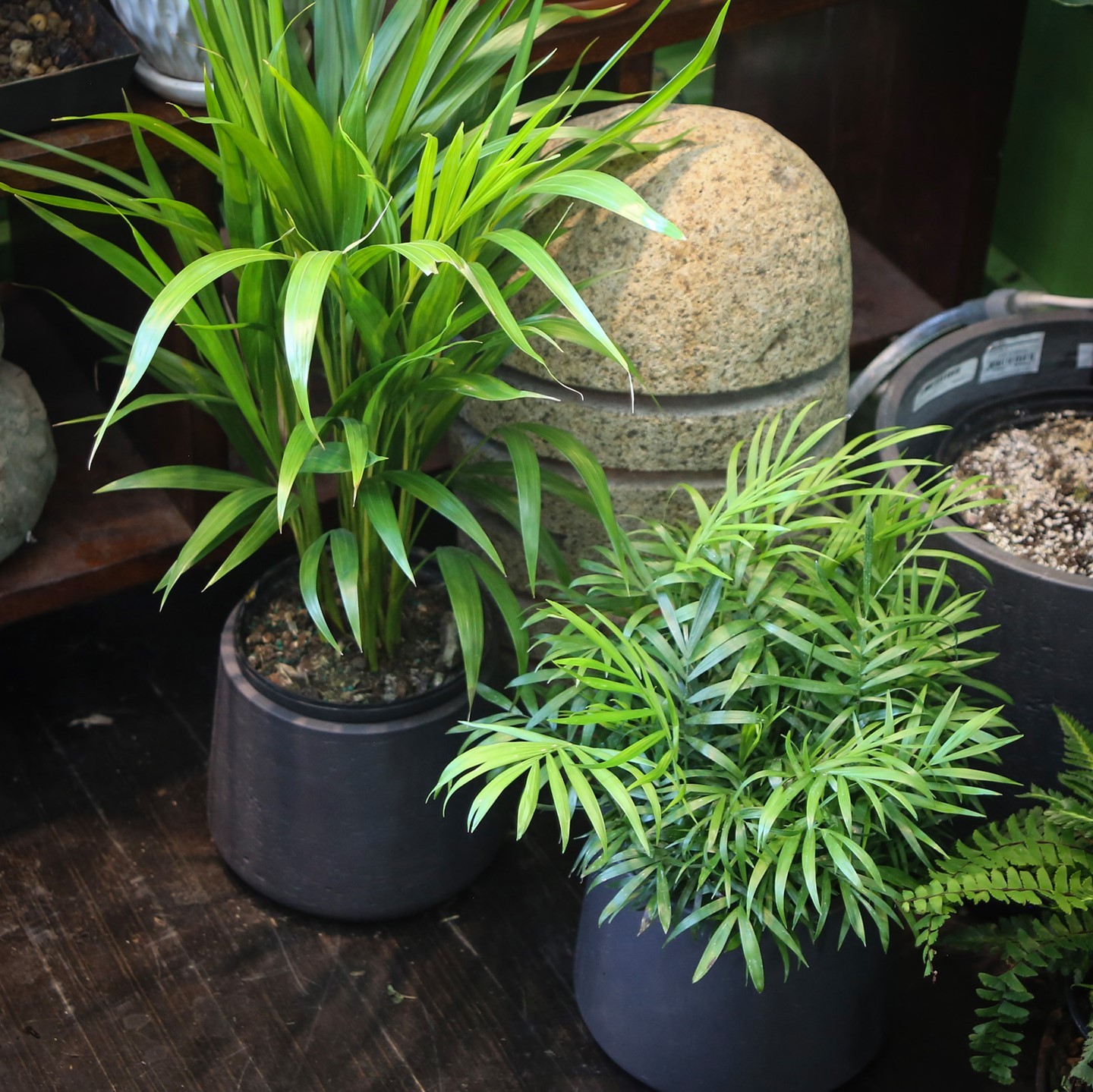
- Why It’s Great: The Parlor Palm is a classic and elegant palm that fits beautifully in smaller spaces. It’s one of the most popular palms for indoor use due to its ease of care and ability to adapt to lower light conditions.
- Light: Prefers moderate to low, indirect light.
- Watering: Keep soil evenly moist but not soggy.
- Size: Grows up to 4 feet tall.
- Soil: Well-draining potting mix.
- Feeding: Feed with a diluted liquid fertilizer once in spring and summer.
- Flowering: Can produce small yellow flowers in optimal conditions.
38. Cast Iron Plant (Aspidistra elatior)
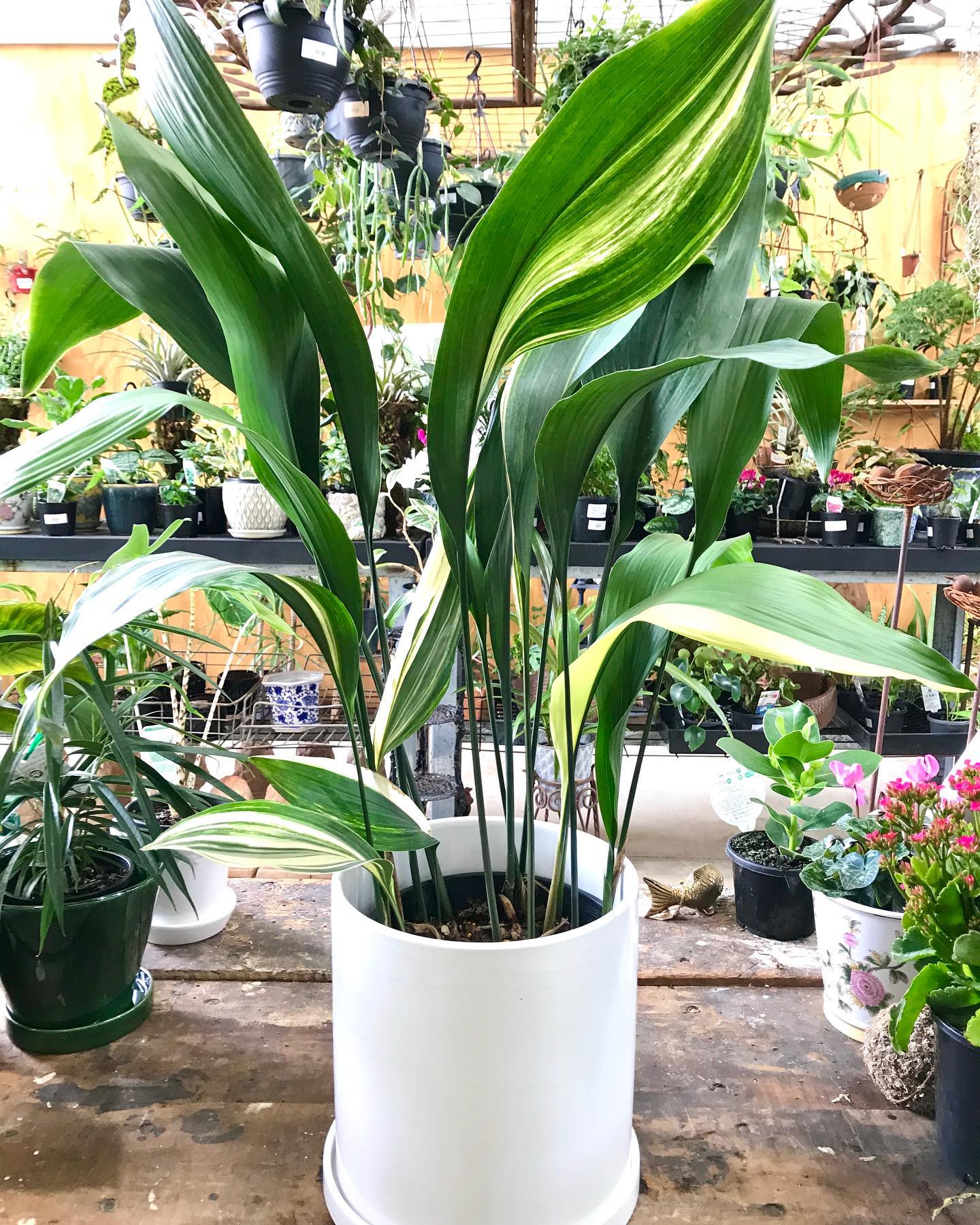
- Why It’s Great: The Cast Iron Plant is true to its name, being almost indestructible. It thrives on neglect and is perfect for those who want greenery without the hassle. Its lush, dark green leaves bring elegance to any corner.
- Light: Tolerates low light but prefers moderate, indirect light.
- Watering: Allow soil to dry out slightly between waterings.
- Size: Grows up to 2 feet tall.
- Soil: Well-draining, loamy soil.
- Feeding: Feed lightly with liquid fertilizer once or twice a year.
- Flowering: Rarely flowers indoors.
39. Chinese Money Plant (Pilea peperomioides)
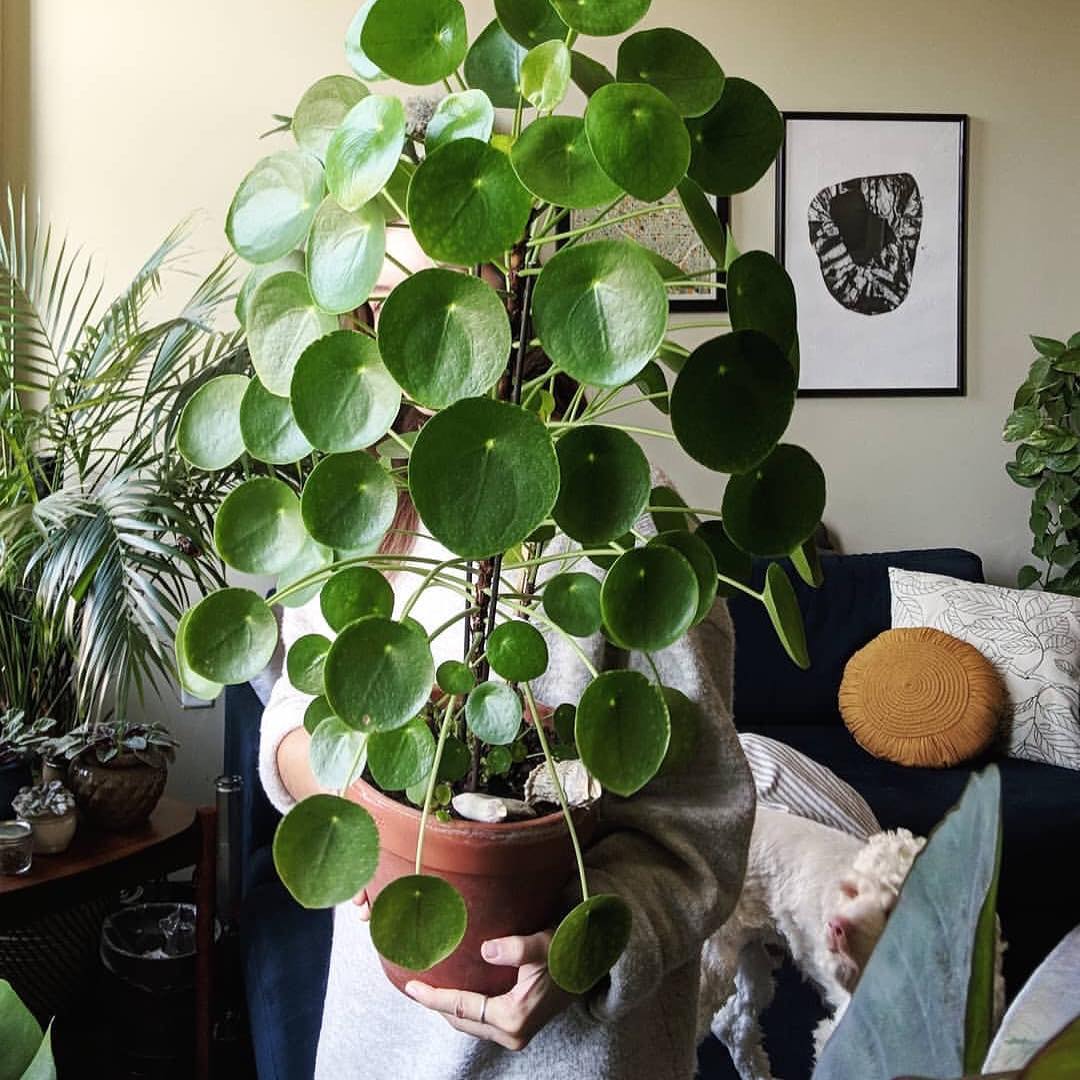
- Why It’s Great: The Chinese Money Plant, with its round, coin-like leaves, is not only cute but also considered a symbol of good fortune. It’s a trendy and easy-to-care-for plant, perfect for modern and minimalist interiors.
- Light: Bright, indirect light.
- Watering: Water when the topsoil starts to dry out.
- Size: Grows about 8-12 inches tall.
- Soil: Well-draining potting mix.
- Feeding: Feed with a diluted liquid houseplant fertilizer every month during the growing season.
- Flowering: Produces small white flowers on a stem.
40. Wax Plant (Hoya carnosa)
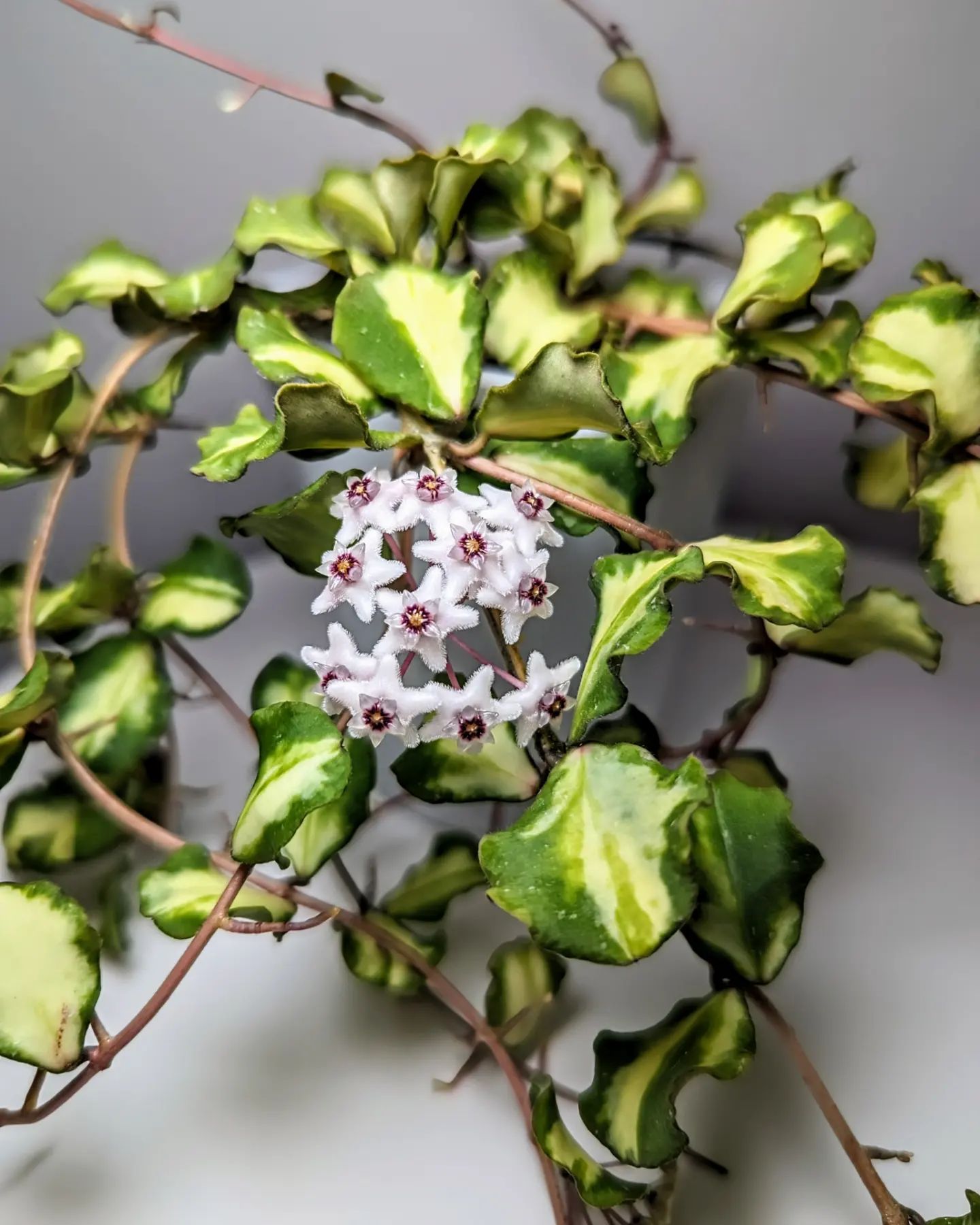
- Why It’s Great: The Wax Plant is known for its thick, waxy leaves and stunning star-shaped flowers. It’s a great hanging plant, adding a touch of the exotic to your home. Hoyas are also known for their sweet-smelling blooms, making them a delightful sensory addition.
- Light: Prefers bright, indirect light.
- Watering: Allow soil to dry out between waterings.
- Size: Vines can grow several feet long.
- Soil: Well-draining potting mix.
- Feeding: Feed with a balanced liquid fertilizer every few months during the growing season.
- Flowering: Produces clusters of star-shaped, fragrant flowers.
41. Bear Paw Fern (Polypodium aureum)
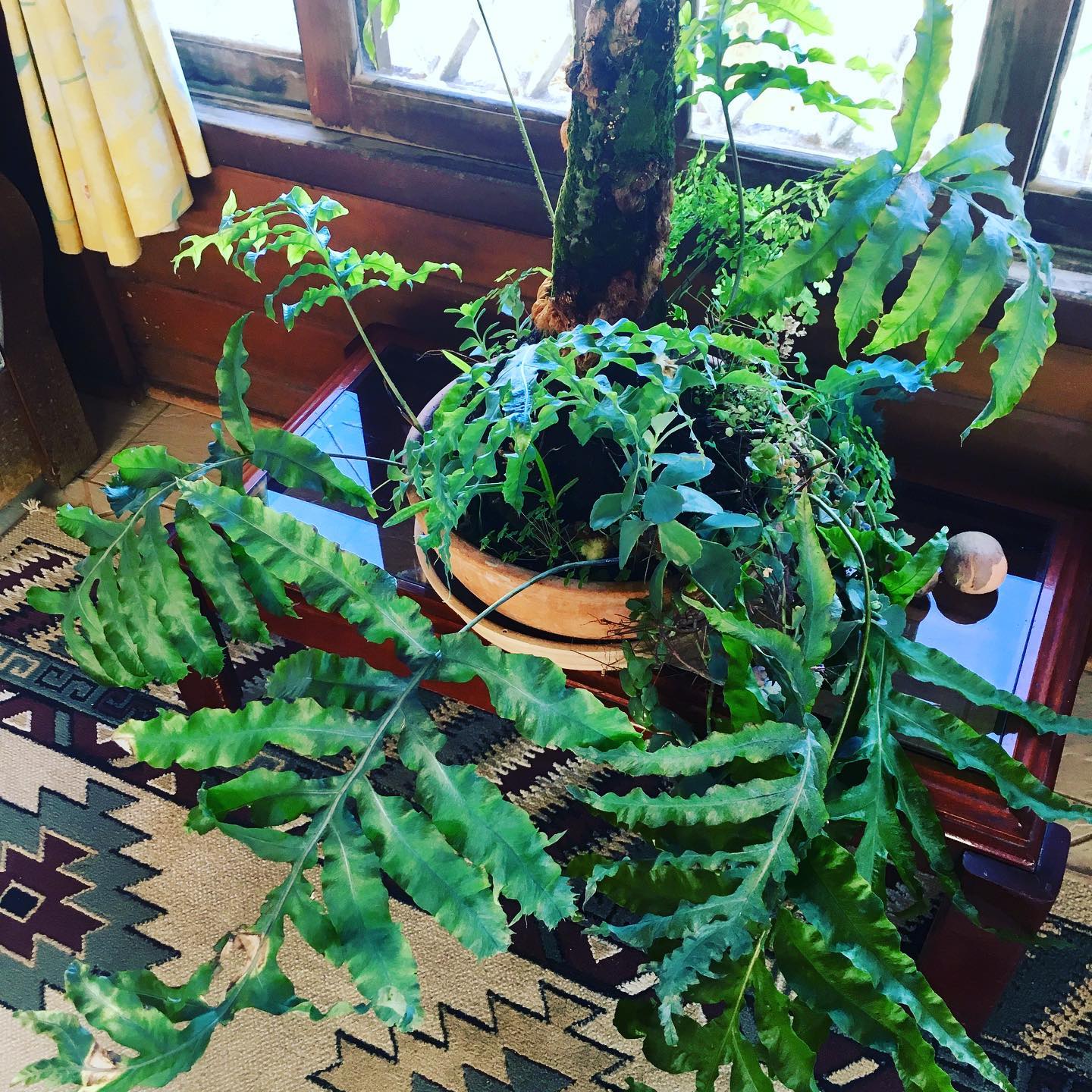
- Why It’s Great: The Bear Paw Fern, with its unique, paw-shaped fronds, adds an interesting texture to your indoor plant collection. It’s an easy-going fern that thrives in a variety of indoor environments and brings a touch of the forest into your home.
- Light: Prefers medium to bright, indirect light.
- Watering: Keep soil consistently moist, but not soggy.
- Size: Can grow up to 2 feet tall and wide.
- Soil: Rich, well-draining potting soil.
- Feeding: Feed monthly during the growing season with a balanced liquid fertilizer.
- Flowering: Non-flowering plant.
42. Asparagus Fern (Asparagus setaceus)
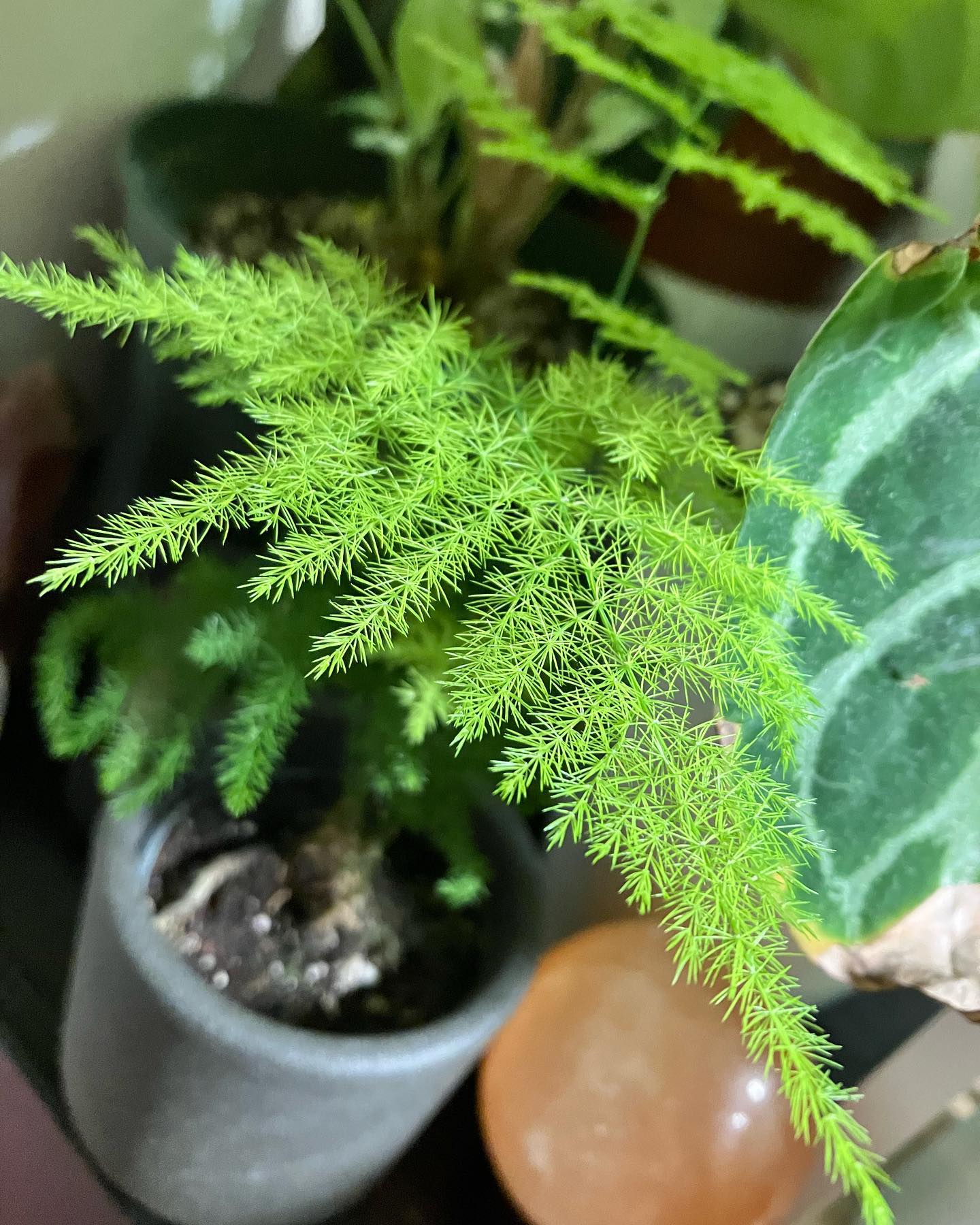
- Why It’s Great: The Asparagus Fern is a feathery, light plant that adds softness and a wild look to any space. Despite its name, it’s not a true fern but offers a similar delicate aesthetic with less fuss.
- Light: Bright, indirect light.
- Watering: Keep soil consistently moist.
- Size: Can spread up to 3 feet.
- Soil: Well-draining, humus-rich soil.
- Feeding: Feed with liquid fertilizer during the growing season.
- Flowering: Can produce small, white flowers, followed by red berries.
43. Croton (Codiaeum variegatum)
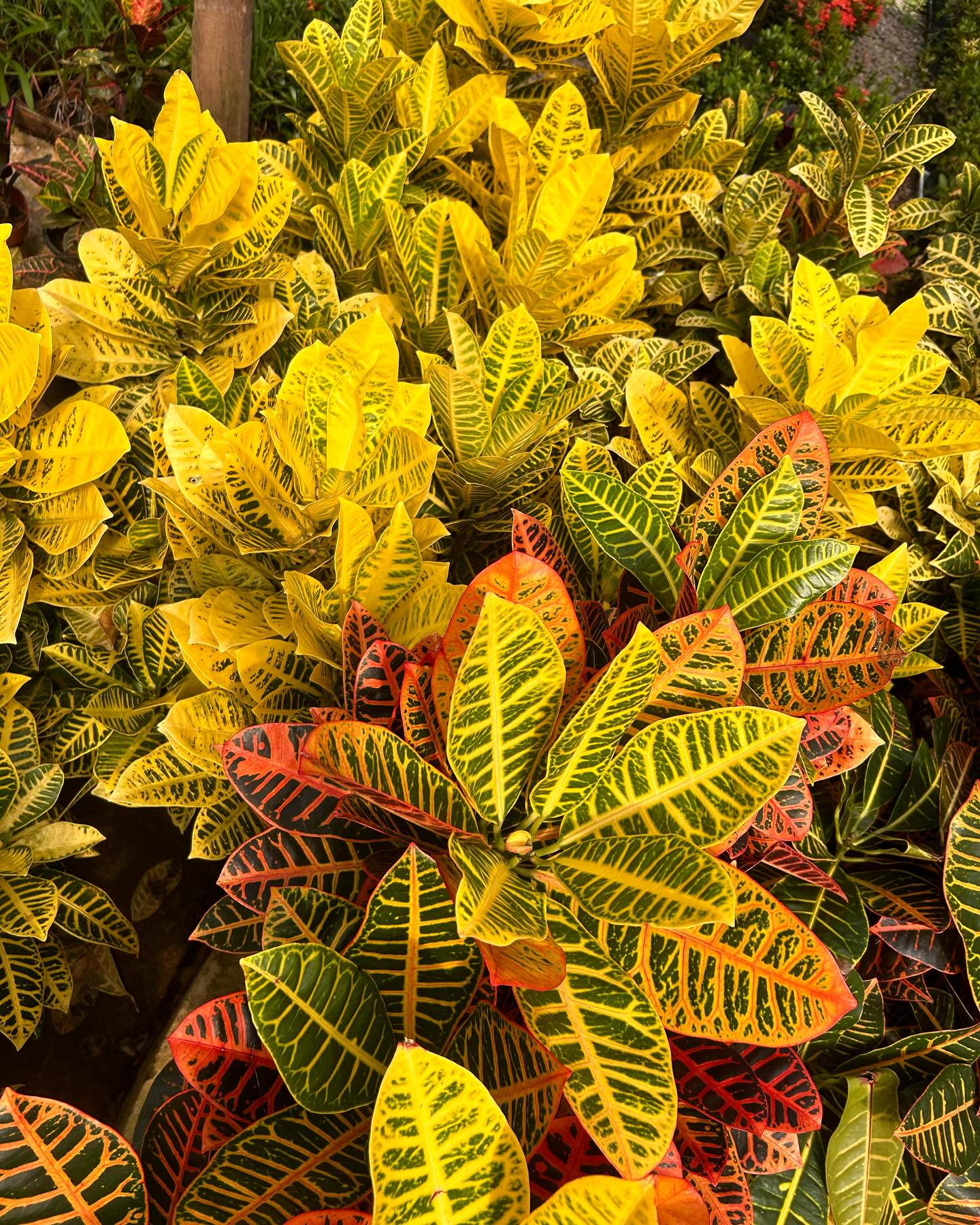
- Why It’s Great: Crotons are celebrated for their vibrant, multicolored foliage. Each leaf is a splash of yellow, red, orange, and green, making them a living work of art and a bright addition to any room.
- Light: Bright, indirect sunlight.
- Watering: Keep soil evenly moist but not waterlogged.
- Size: Can grow up to 3-4 feet tall.
- Soil: Well-draining potting soil.
- Feeding: Feed every 2-3 months with a balanced liquid fertilizer.
- Flowering: Rarely flowers indoors.
44. Golden Barrel Cactus (Echinocactus grusonii)
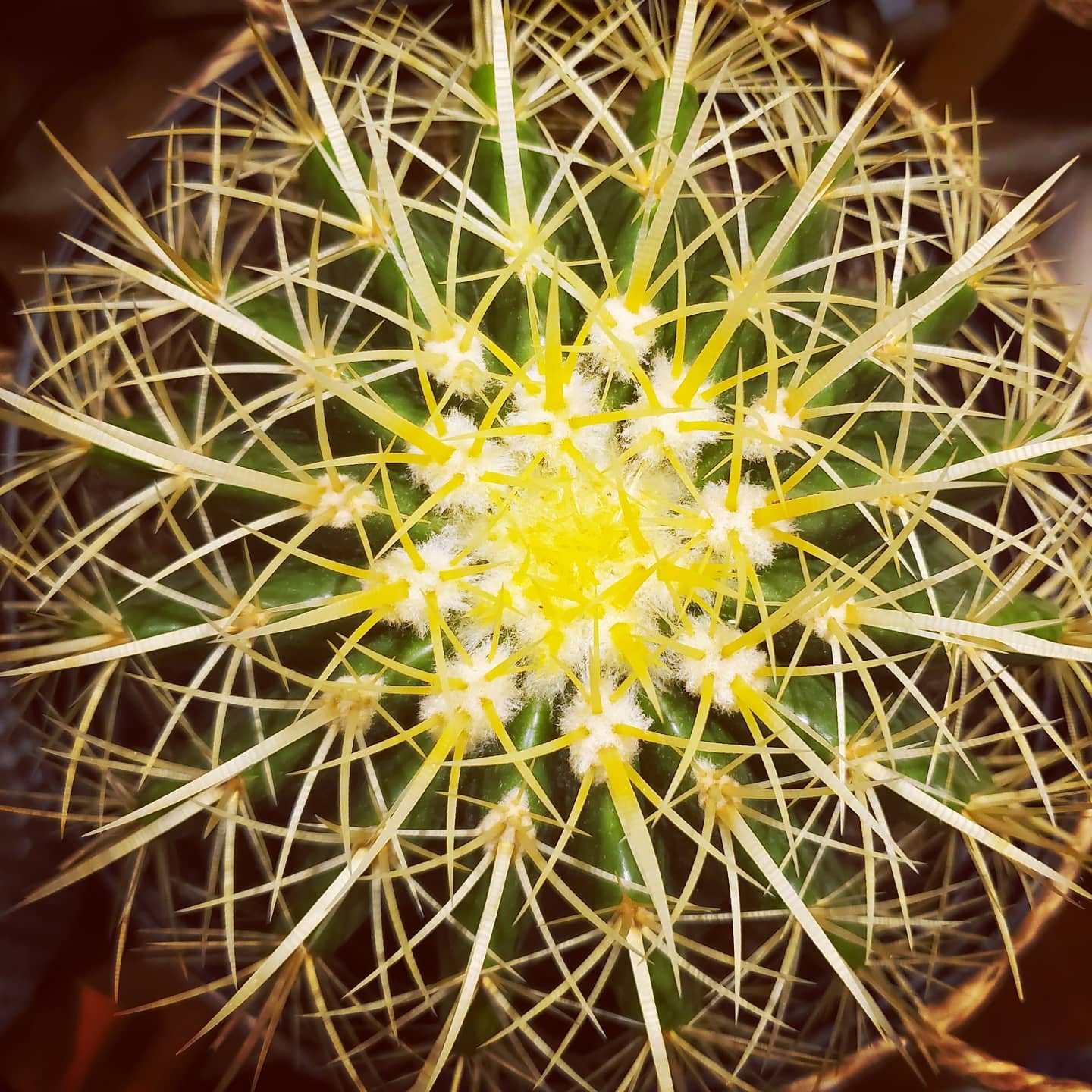
- Why It’s Great: The Golden Barrel Cactus is a striking and sculptural plant, perfect for adding a touch of the desert to your home. Its spherical shape and golden spines make it a standout in any cactus collection.
- Light: Full sun to partial shade.
- Watering: Water every 3-4 weeks in summer, less in winter.
- Size: Can grow up to 2 feet in diameter.
- Soil: Well-draining cactus mix.
- Feeding: Feed with cactus fertilizer during the growing season.
- Flowering: Blooms yellow flowers but rarely indoors.
45. Lady Palm (Rhapis excelsa)
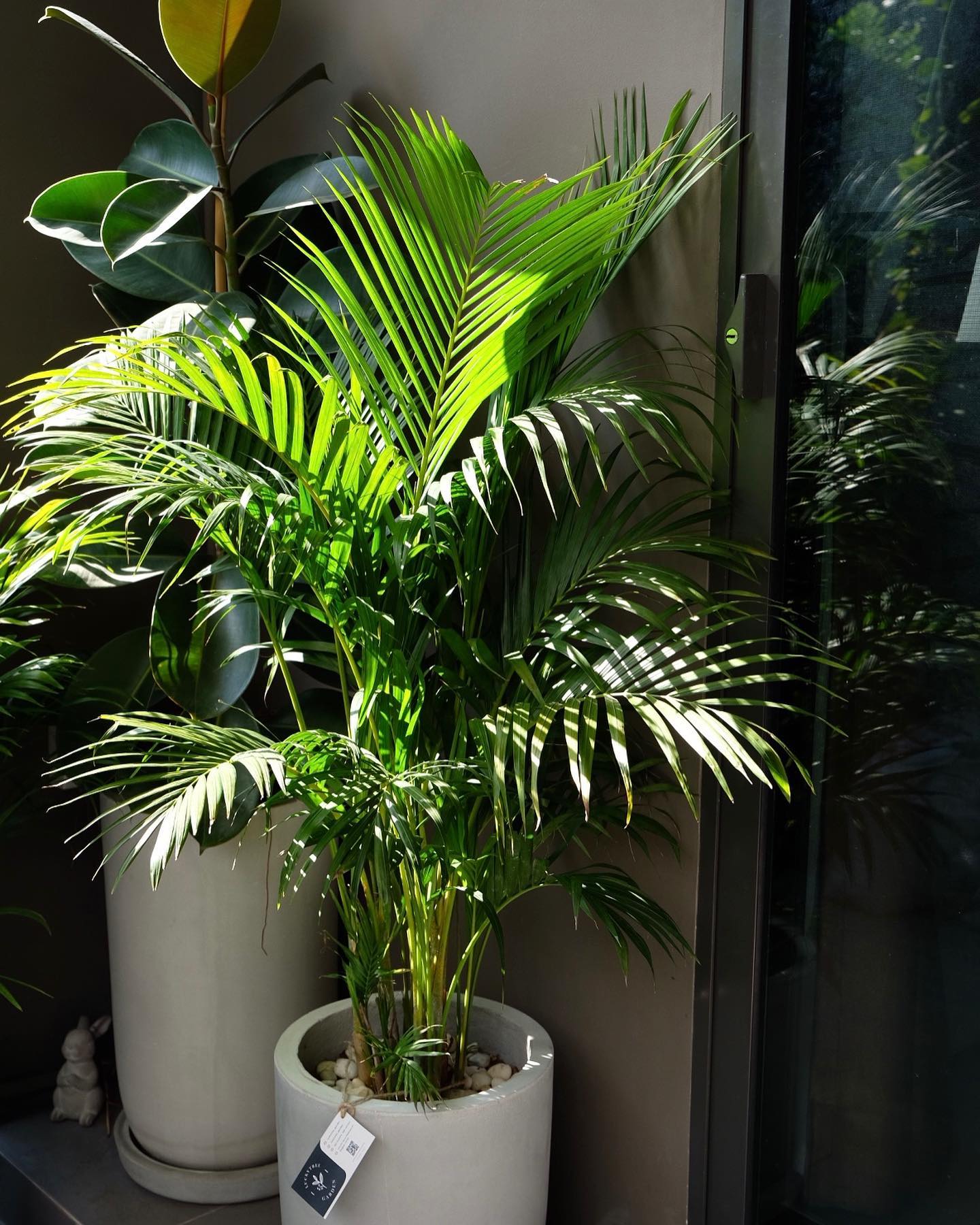
- Why It’s Great: The Lady Palm is an elegant, slow-growing palm that adds a sophisticated touch to any indoor space. It’s great for creating a tropical feel and is effective at purifying indoor air.
- Light: Prefers low to medium, indirect light.
- Watering: Water when the top inch of soil feels dry.
- Size: Can grow up to 6 feet tall.
- Soil: Well-draining potting mix.
- Feeding: Feed with a balanced liquid fertilizer in spring and summer.
- Flowering: Rarely flowers indoors.
46. Rattlesnake Plant (Calathea lancifolia)

- Why It’s Great: The Rattlesnake Plant is celebrated for its striking leaf patterns, resembling a rattlesnake’s skin. It’s a great choice for adding a bold, graphic element to your indoor plant collection, and it’s also known for its air-purifying qualities.
- Light: Prefers medium, indirect sunlight.
- Watering: Keep soil consistently moist.
- Size: Grows up to 30 inches tall.
- Soil: Well-draining, rich potting soil.
- Feeding: Feed every month during the growing season with diluted liquid fertilizer.
- Flowering: Occasionally produces small yellow flowers.
47. Pencil Cactus (Euphorbia tirucalli)
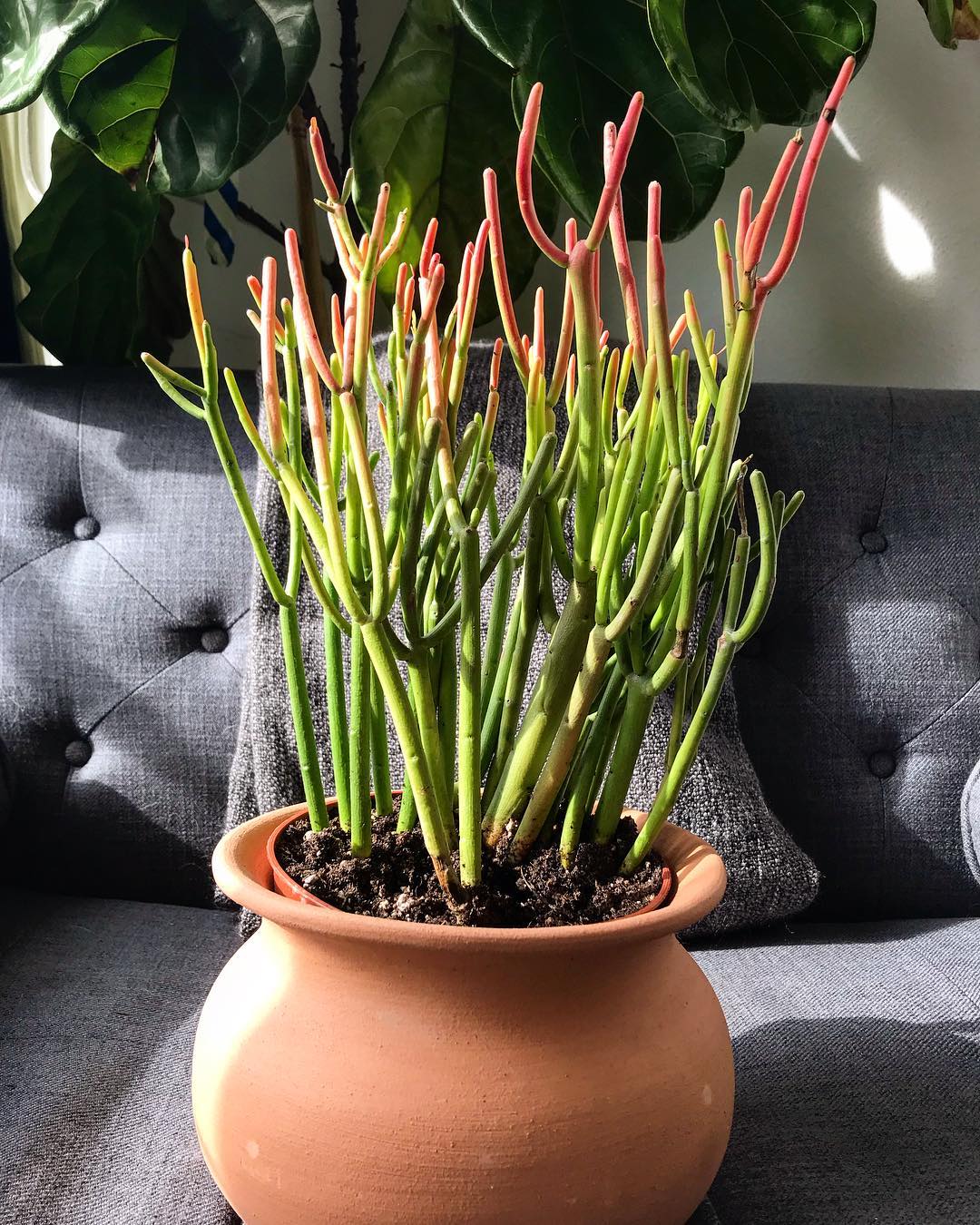
- Why It’s Great: The Pencil Cactus is a unique and striking succulent, with thin, pencil-like branches reaching up towards the sky. It’s a fantastic architectural plant that adds height and interest to any indoor garden.
- Light: Bright, direct sunlight.
- Watering: Water sparingly; allow the soil to dry out completely between waterings.
- Size: Can grow up to 6 feet tall indoors.
- Soil: Well-draining cactus or succulent mix.
- Feeding: Minimal feeding required.
- Flowering: Rarely flowers indoors.
48. Swiss Cheese Plant (Monstera deliciosa)
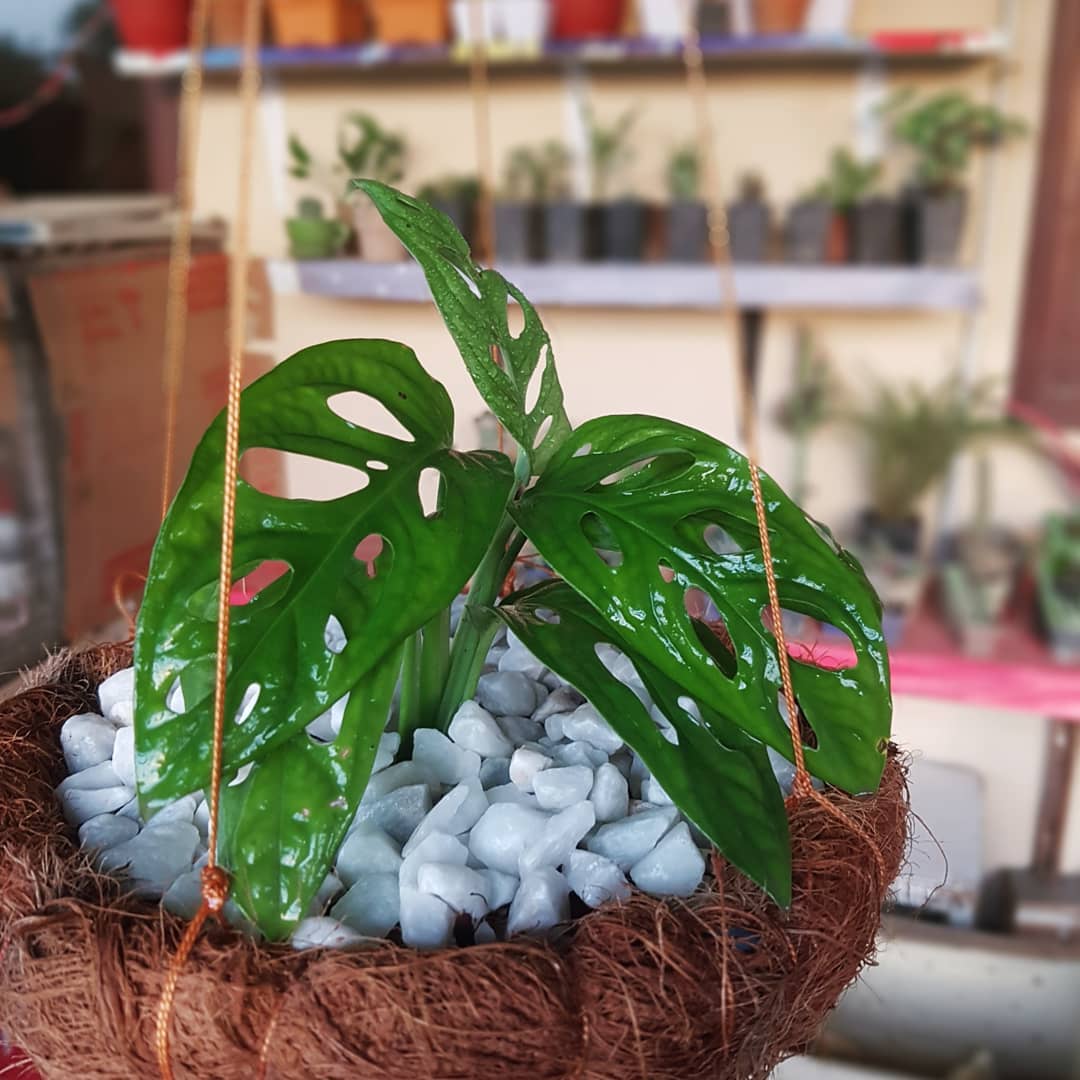
- Why It’s Great: The Swiss Cheese Plant is famous for its large, glossy leaves with unique holes, resembling Swiss cheese. It’s a fast-growing and easy-to-care-for plant that instantly adds a tropical and lush feel to your space.
- Light: Prefers bright to medium indirect light.
- Watering: Water when the top inch of soil is dry.
- Size: Can grow several feet tall with proper support.
- Soil: Peat-based, well-draining potting mix.
- Feeding: Feed every month with liquid fertilizer during the growing season.
- Flowering: Rarely flowers indoors.
49. Madagascar Dragon Tree (Dracaena marginata)
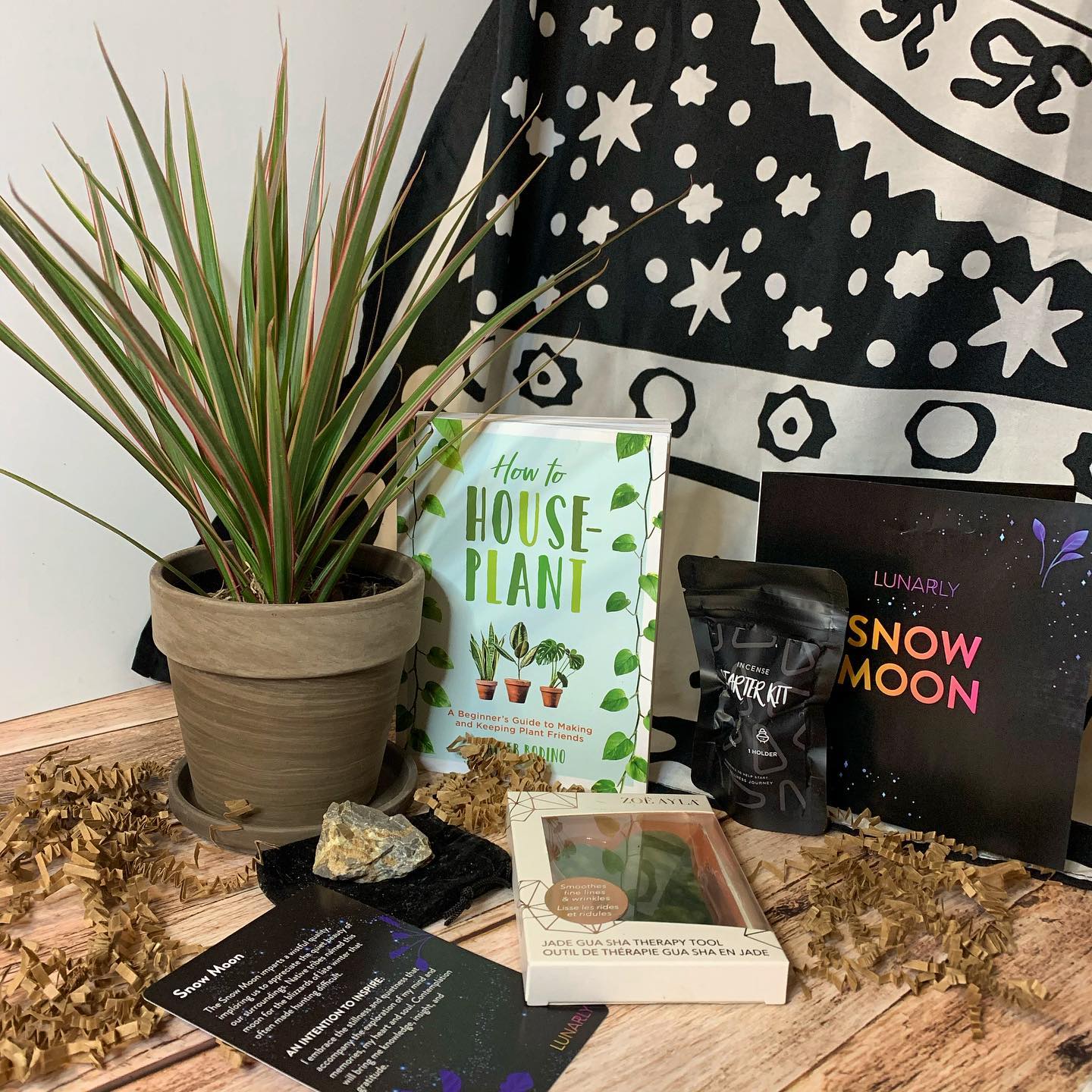
- Why It’s Great: The Madagascar Dragon Tree is a dramatic and stylish plant, with slender, upright branches and narrow, red-edged leaves. It’s a resilient and air-purifying plant that adapts well to indoor conditions.
- Light: Prefers bright, indirect light but can tolerate lower light levels.
- Watering: Allow the top few inches of soil to dry out before watering.
- Size: Can grow up to 6 feet tall.
- Soil: Well-draining potting soil.
- Feeding: Feed with a liquid fertilizer every 6 weeks in spring and summer.
- Flowering: Rarely flowers indoors.
50. Desert Rose (Adenium obesum)
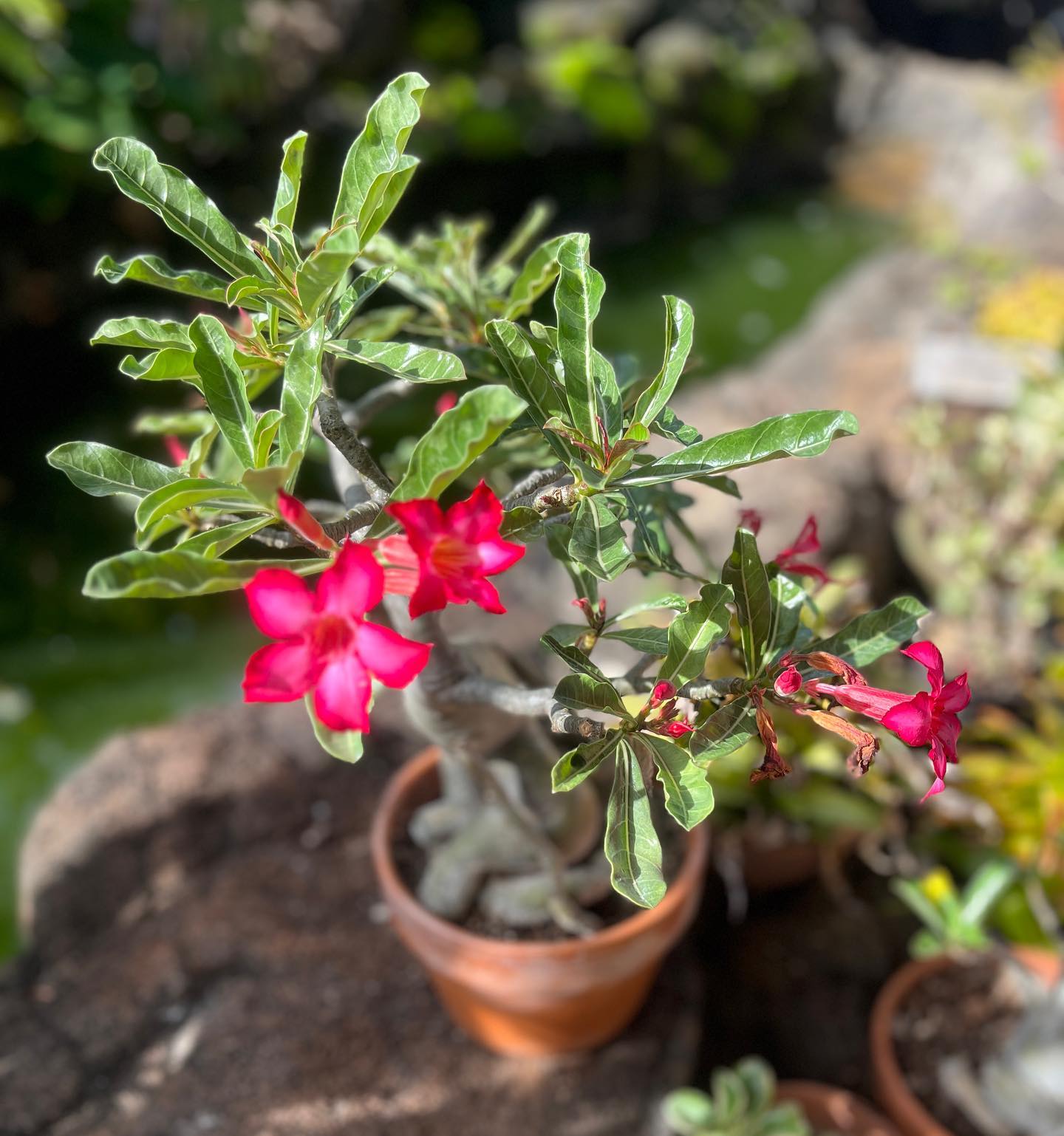
- Why It’s Great: The Desert Rose is a stunning succulent with a bulbous trunk and beautiful, trumpet-shaped flowers. It’s an excellent choice for those who want the beauty of exotic blooms with the ease of succulent care.
- Light: Full sun to bright, indirect light.
- Watering: Allow soil to dry out between waterings.
- Size: Can grow up to 3 feet tall.
- Soil: Well-draining sandy soil.
- Feeding: Feed with a balanced liquid fertilizer during the growing season.
- Flowering: Produces pink or red flowers in the warmer months.
51. Fishbone Cactus (Epiphyllum anguliger)
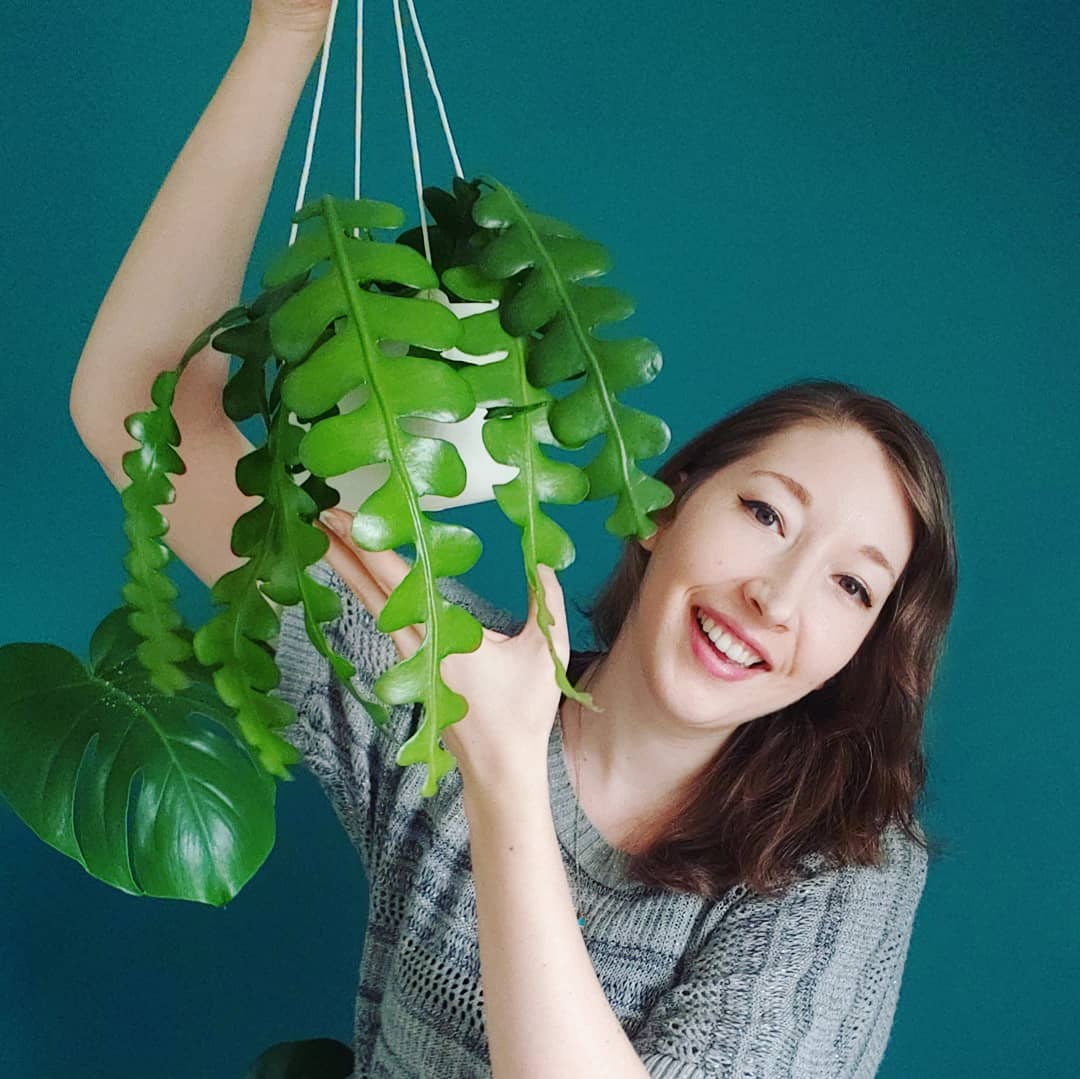
- Why It’s Great: The Fishbone Cactus, known for its zigzag-shaped leaves, is a unique and intriguing plant. It’s perfect for those who love the unusual and is a great conversation starter, especially when it blooms at night with its fragrant flowers.
- Light: Bright, indirect light.
- Watering: Allow the soil to slightly dry out between waterings.
- Size: Can trail or climb several feet.
- Soil: Well-draining cactus or orchid mix.
- Feeding: Feed with a diluted cactus fertilizer during the growing season.
- Flowering: Produces large, white, and fragrant flowers at night.
52. Coral Cactus (Euphorbia lactea)
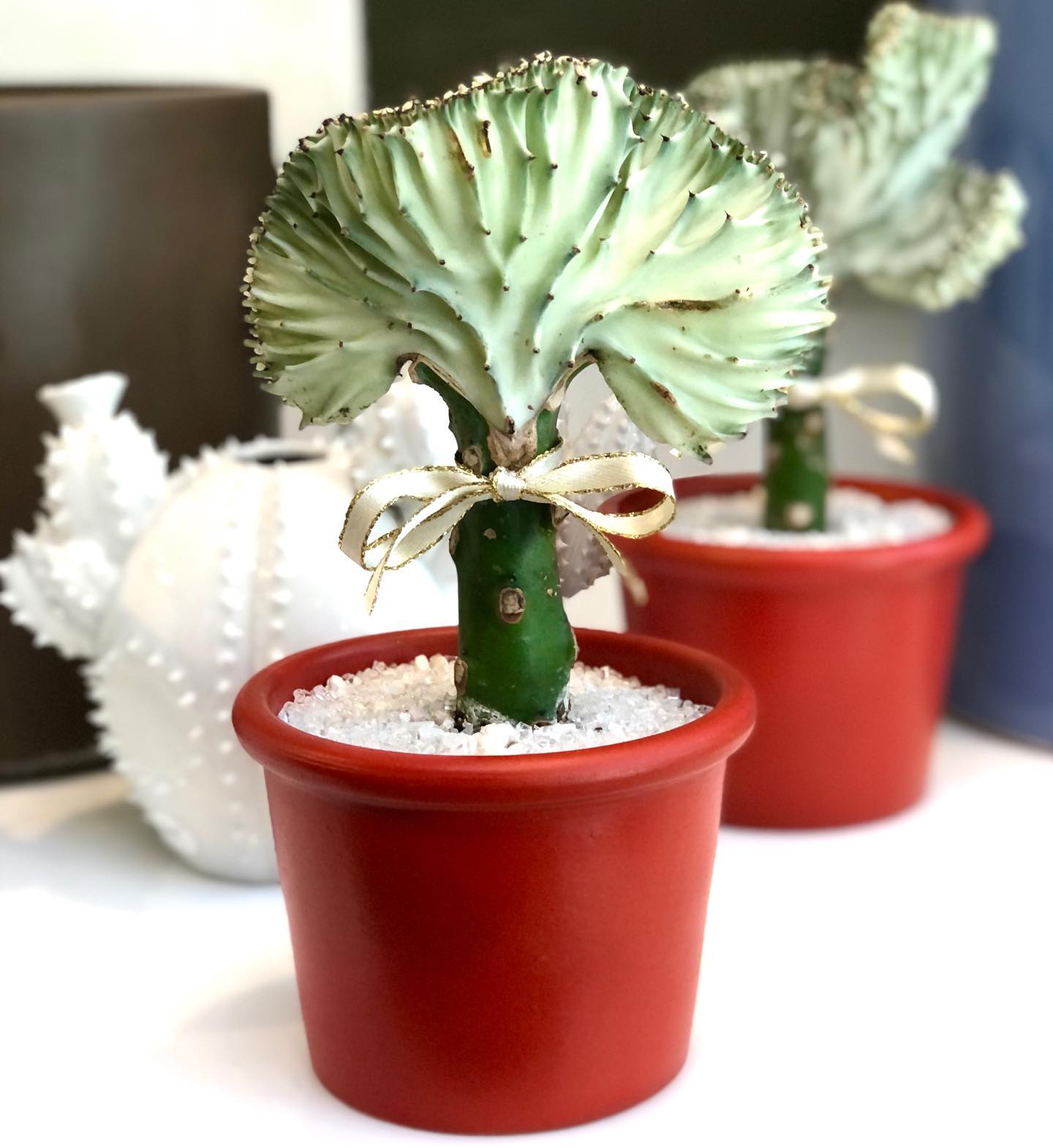
- Why It’s Great: The Coral Cactus stands out with its unique, coral-like structure. It’s a fascinating and sculptural plant, ideal for adding a touch of artistic flair to your indoor space.
- Light: Bright, indirect sunlight.
- Watering: Water sparingly; allow the soil to dry out completely.
- Size: Can grow up to 2 feet tall.
- Soil: Well-draining cactus mix.
- Feeding: Minimal feeding required.
- Flowering: Does not typically flower indoors.
53. Panda Plant (Kalanchoe tomentosa)
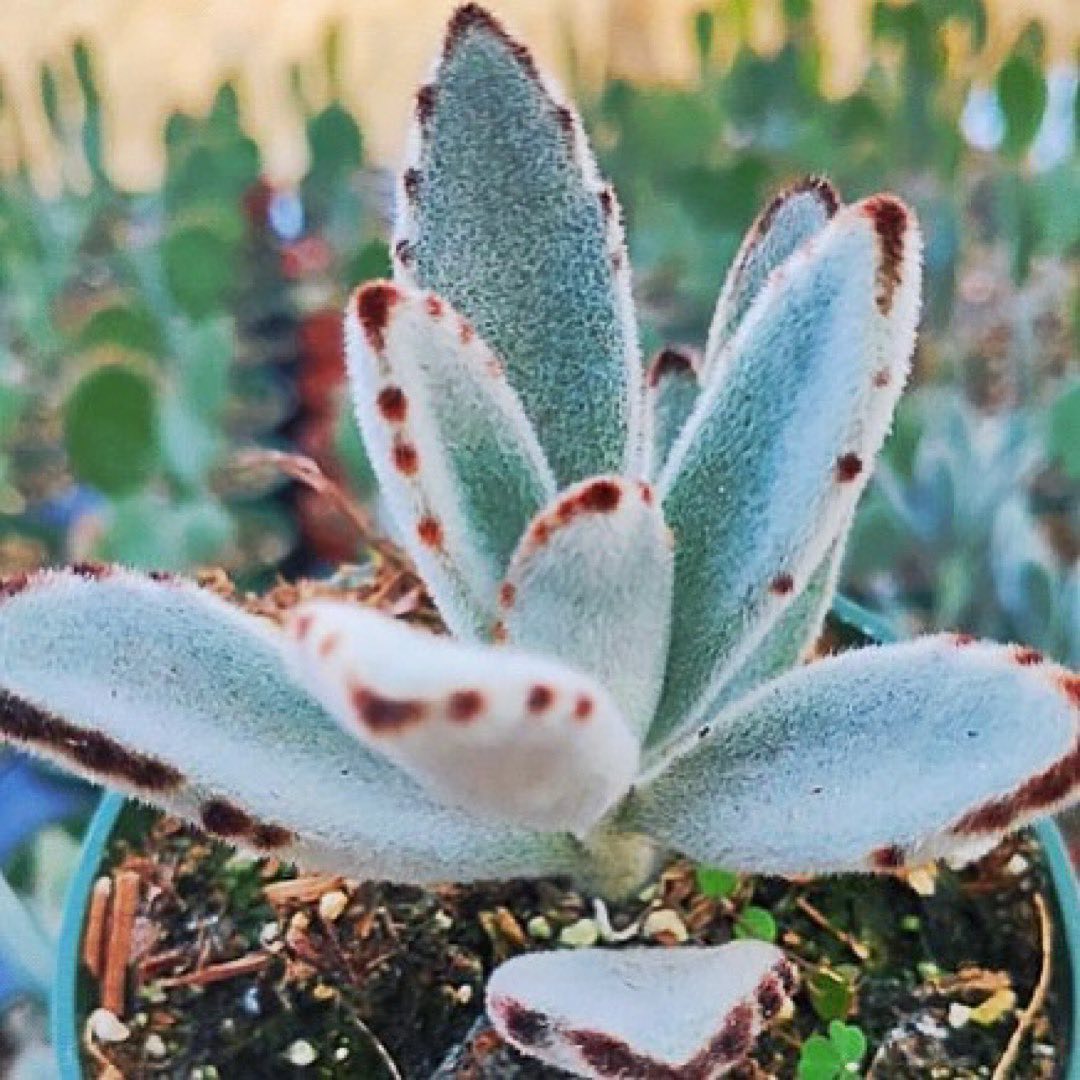
- Why It’s Great: The Panda Plant is adorable with its fuzzy, gray-green leaves tipped with rust-colored spots. It’s a delightful and easy-to-care-for succulent, perfect for adding softness and charm to any room.
- Light: Bright, indirect light.
- Watering: Water every 2-3 weeks, allowing the soil to dry out.
- Size: Grows up to 2 feet tall.
- Soil: Well-draining succulent or cactus mix.
- Feeding: Feed with a diluted liquid fertilizer in spring and summer.
- Flowering: Rarely flowers indoors.
54. Prayer Plant (Maranta leuconeura)
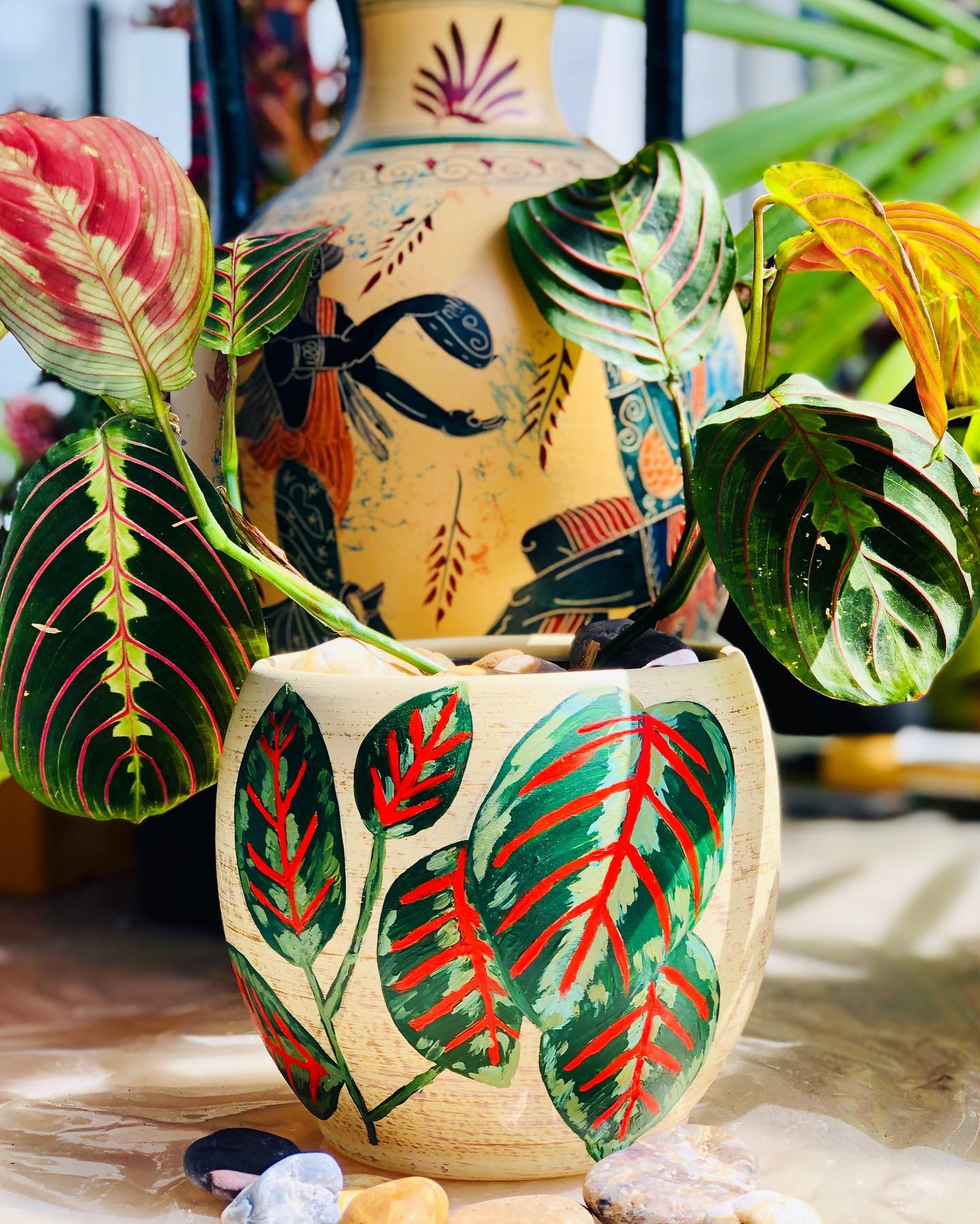
- Why It’s Great: The Prayer Plant is celebrated for its striking leaf patterns and the way its leaves fold up at night, as if in prayer. It’s a dynamic and colorful addition to your indoor garden, bringing movement and interest.
- Light: Prefers bright, indirect light.
- Watering: Keep soil consistently moist.
- Size: Grows about 12 inches tall.
- Soil: Well-draining, rich potting soil.
- Feeding: Feed every two weeks with diluted liquid fertilizer during the growing season.
- Flowering: Produces small white flowers, though infrequently.
55. English Ivy (Hedera helix)
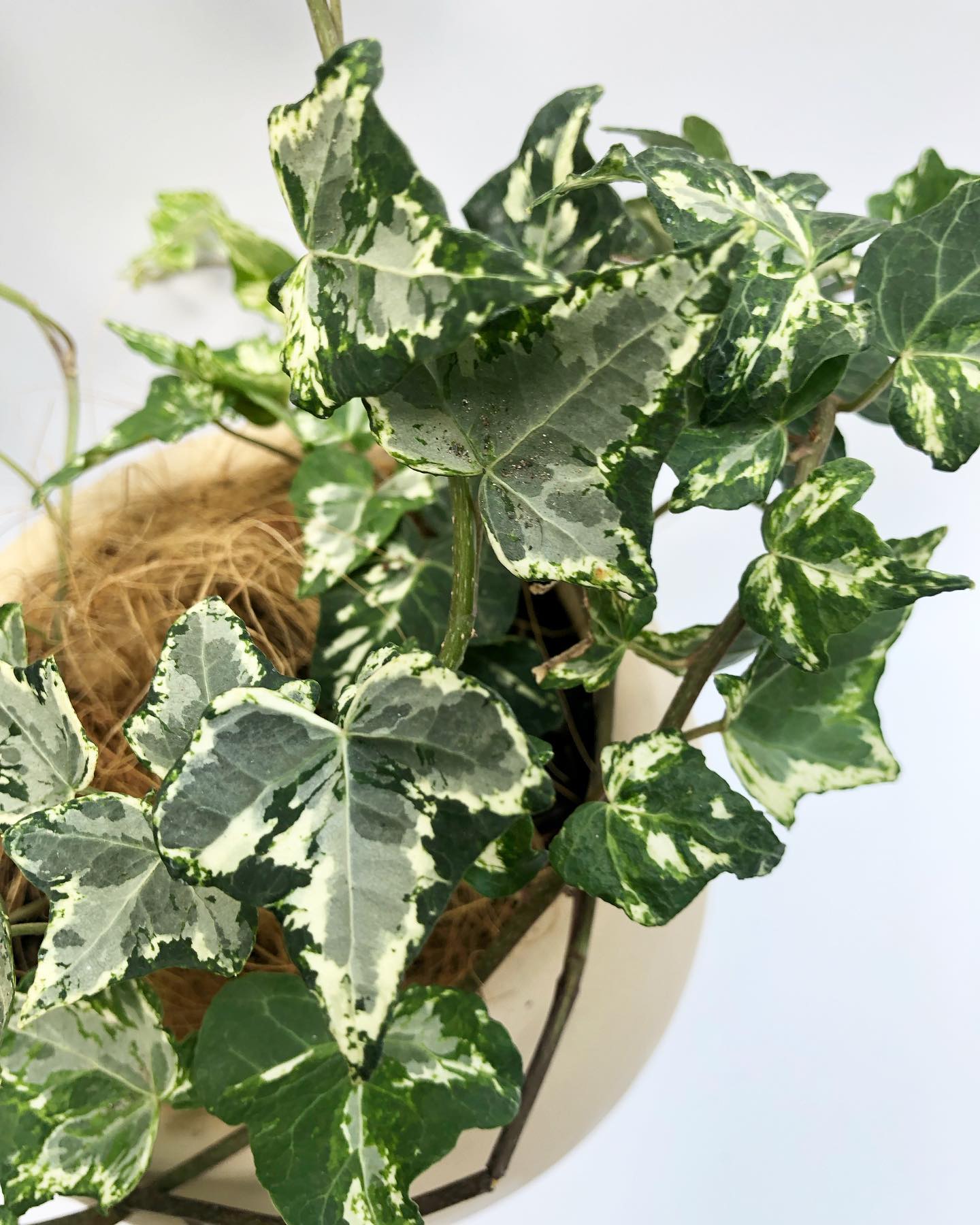
- Why It’s Great: English Ivy is a classic and versatile plant, ideal for creating a lush, green backdrop or for trailing from hanging baskets. It’s also known for its air-purifying properties, making it as functional as it is beautiful.
- Light: Thrives in medium to bright, indirect light.
- Watering: Keep soil evenly moist but not waterlogged.
- Size: Vines can grow several feet long.
- Soil: Well-draining potting mix.
- Feeding: Feed with a balanced liquid fertilizer monthly during the growing season.
- Flowering: Rarely flowers indoors.
56. Mistletoe Cactus (Rhipsalis baccifera)
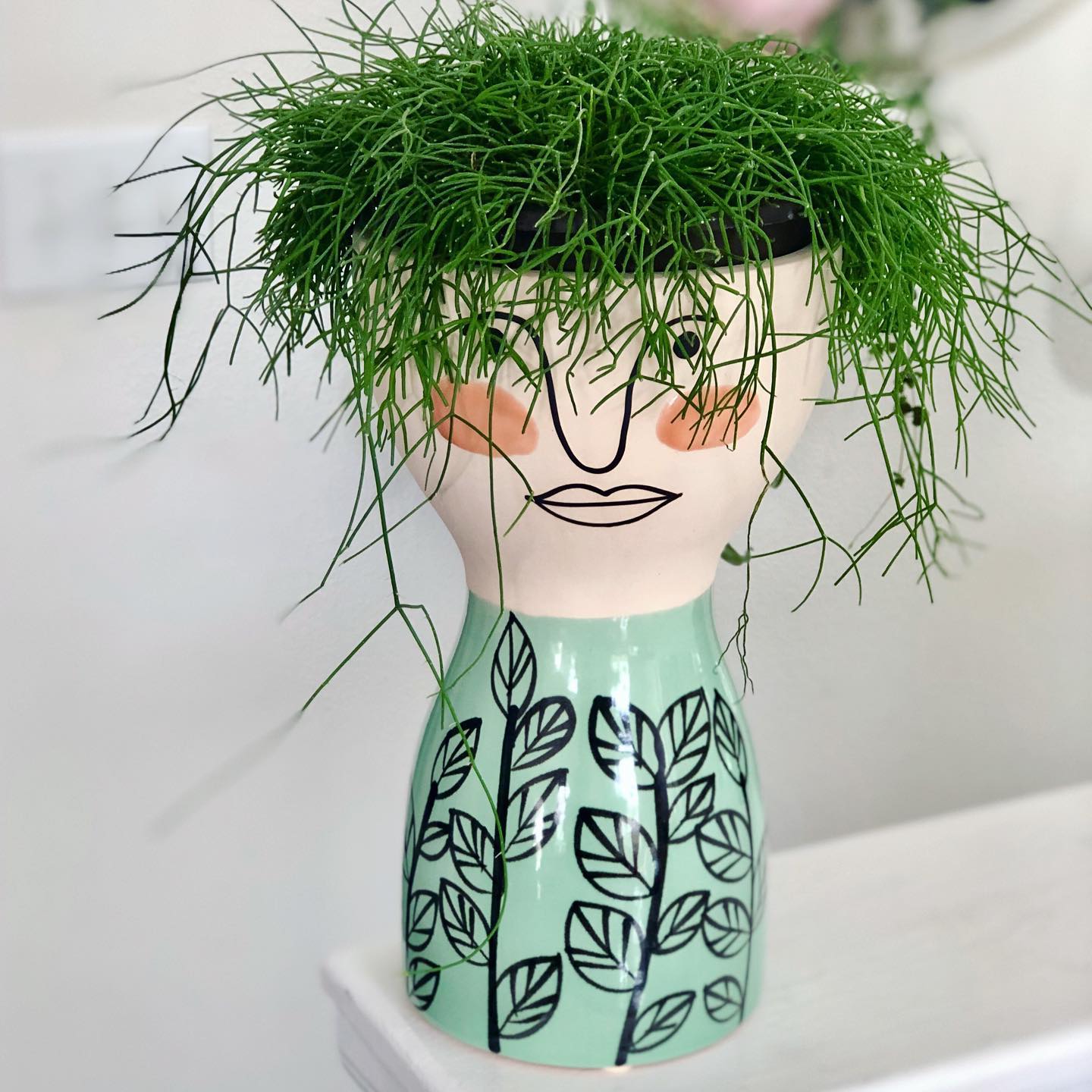
- Why It’s Great: The Mistletoe Cactus is a unique, trailing cactus with slender, spaghetti-like stems. It’s perfect for a hanging basket, adding a soft, cascading element to your indoor jungle.
- Light: Prefers bright, indirect light.
- Watering: Water when the top inch of soil is dry.
- Size: Stems can trail up to several feet.
- Soil: Well-draining cactus or orchid mix.
- Feeding: Feed with cactus fertilizer in spring and summer.
- Flowering: Produces small white or pink flowers.
57. String of Bananas (Senecio radicans)
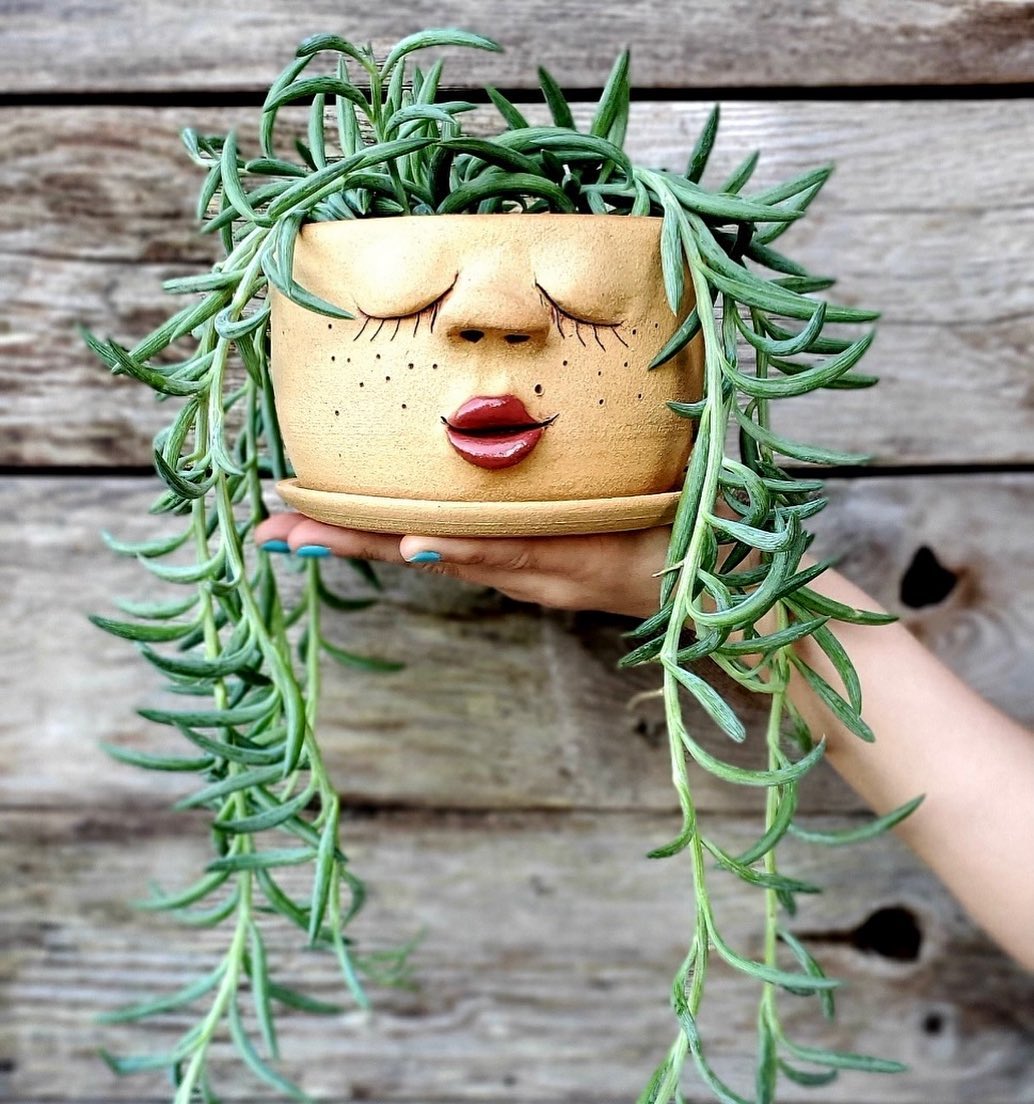
- Why It’s Great: The String of Bananas is a quirky and playful succulent, with its banana-shaped leaves dangling from trailing vines. It’s an excellent choice for hanging planters, adding a touch of whimsy and fun.
- Light: Bright, indirect light.
- Watering: Allow soil to dry out between waterings.
- Size: Trails can grow several feet long.
- Soil: Well-draining succulent mix.
- Feeding: Feed with diluted liquid fertilizer every few months.
- Flowering: Produces small, lavender or white flowers.
58. Norfolk Island Pine (Araucaria heterophylla)
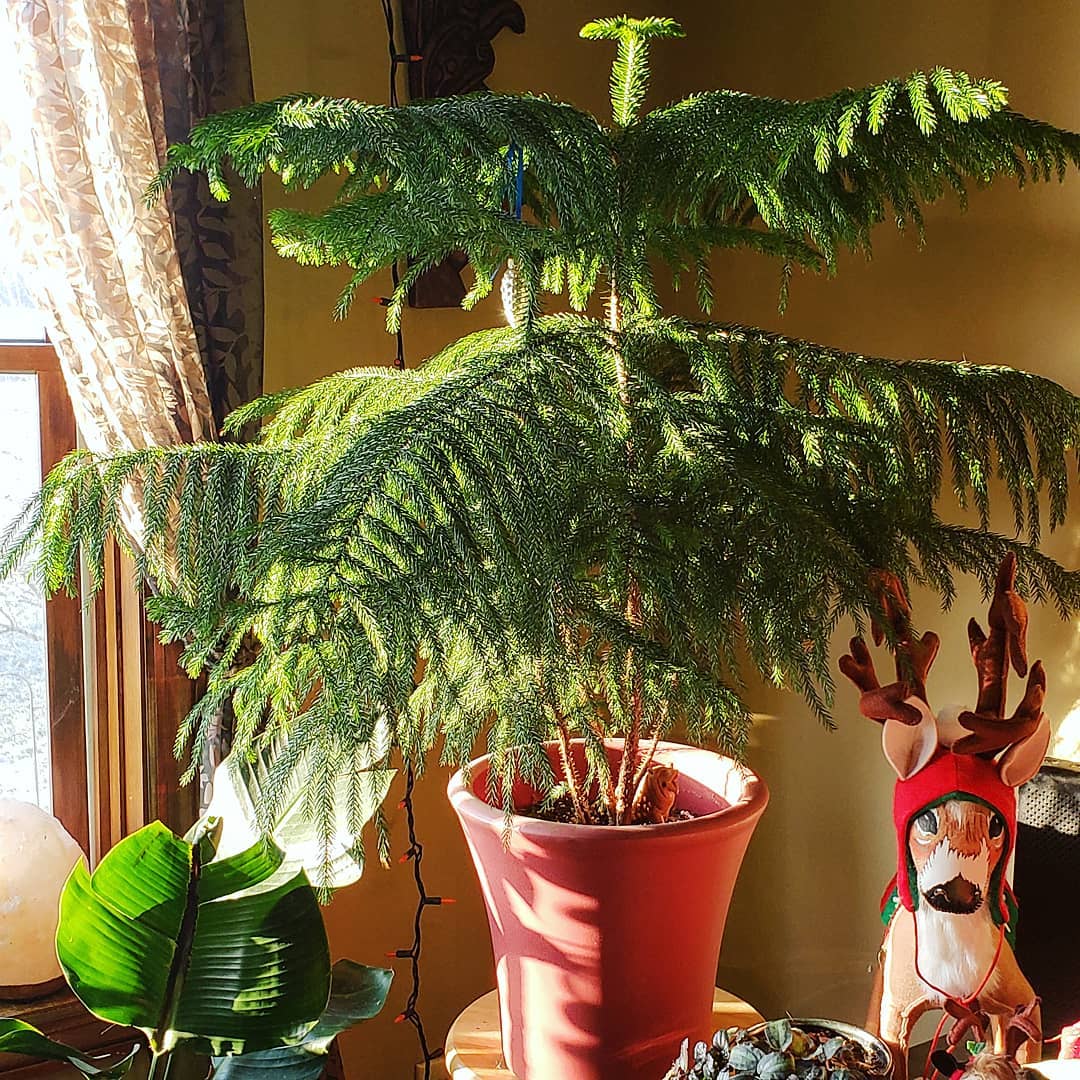
- Why It’s Great: The Norfolk Island Pine adds a touch of evergreen elegance to your home, resembling a miniature Christmas tree. It’s perfect for those who love the look of a conifer but have limited outdoor space.
- Light: Bright, indirect light.
- Watering: Keep soil evenly moist, but not soggy.
- Size: Can grow up to 6 feet indoors.
- Soil: Well-draining potting mix.
- Feeding: Feed with a balanced liquid fertilizer every few months.
- Flowering: Does not flower.
59. Silver Dollar Plant (Xerosicyos danguyi)
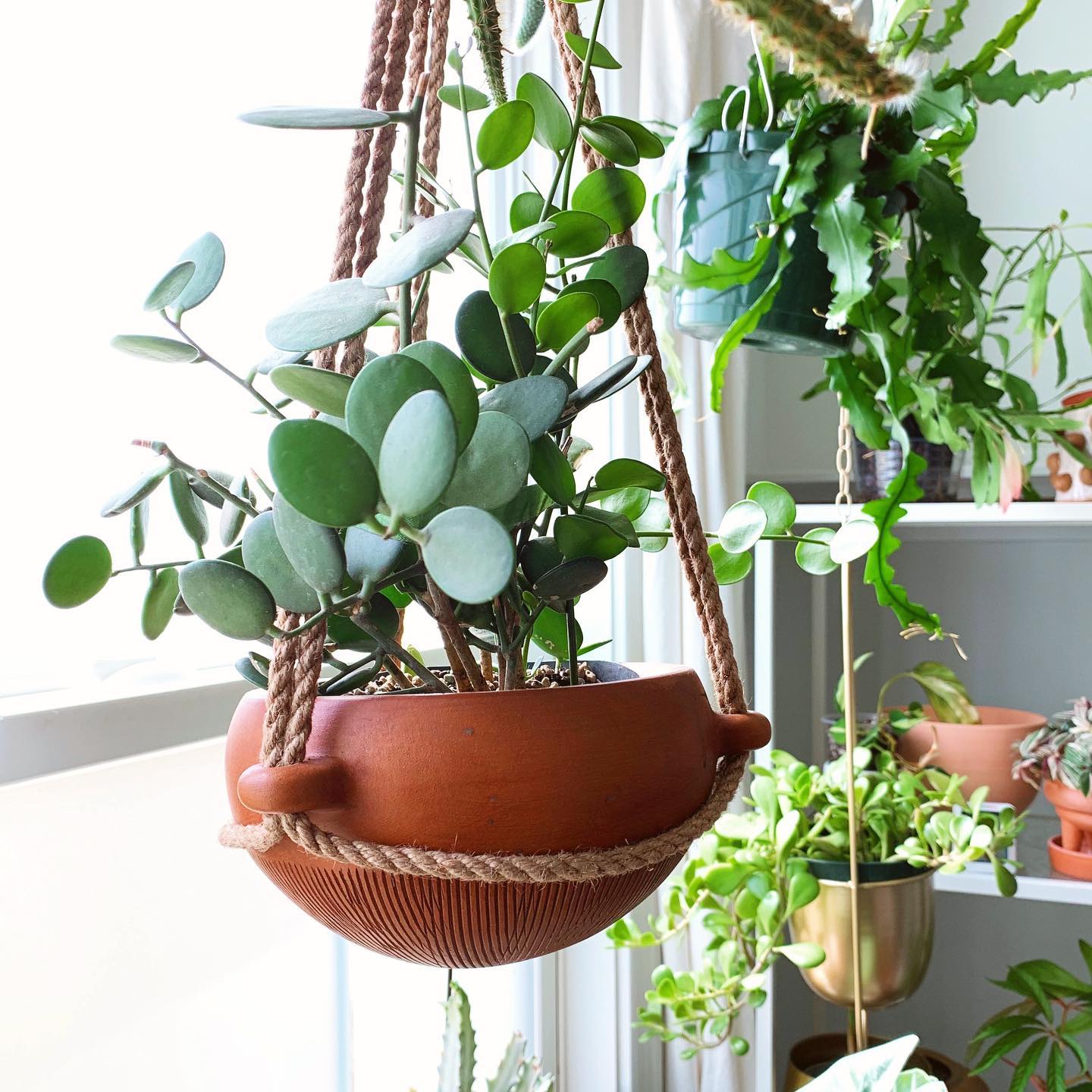
- Why It’s Great: The Silver Dollar Plant is an intriguing succulent with round, coin-like leaves. Its unique appearance and climbing habit make it a great addition to vertical spaces in your home.
- Light: Prefers bright, indirect light.
- Watering: Water every 2-3 weeks, allowing soil to dry out between waterings.
- Size: Can climb or trail up to several feet.
- Soil: Well-draining succulent or cactus mix.
- Feeding: Minimal feeding; once or twice a year.
- Flowering: Rarely flowers indoors.
60. African Milk Tree (Euphorbia trigona)
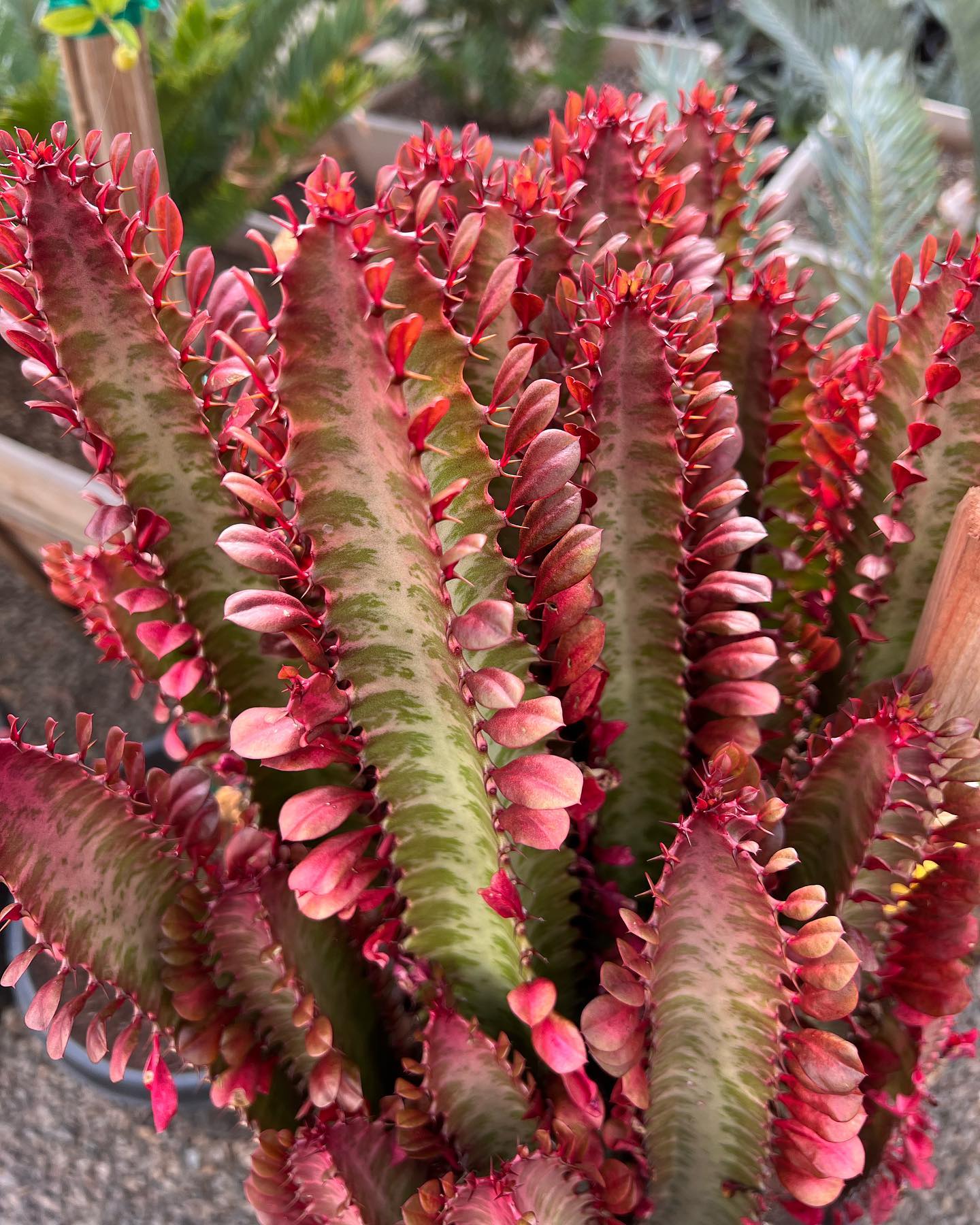
- Why It’s Great: The African Milk Tree is a striking succulent with a cactus-like appearance. It’s known for its vertical growth and deep green leaves edged with thorns, adding an architectural element to your indoor plant collection.
- Light: Bright, indirect sunlight.
- Watering: Water sparingly; allow the soil to dry out completely.
- Size: Can grow up to 8 feet tall indoors.
- Soil: Well-draining cactus mix.
- Feeding: Feed with a diluted liquid fertilizer once during spring and summer.
- Flowering: Does not typically flower indoors.
61. Peperomia (Various species)
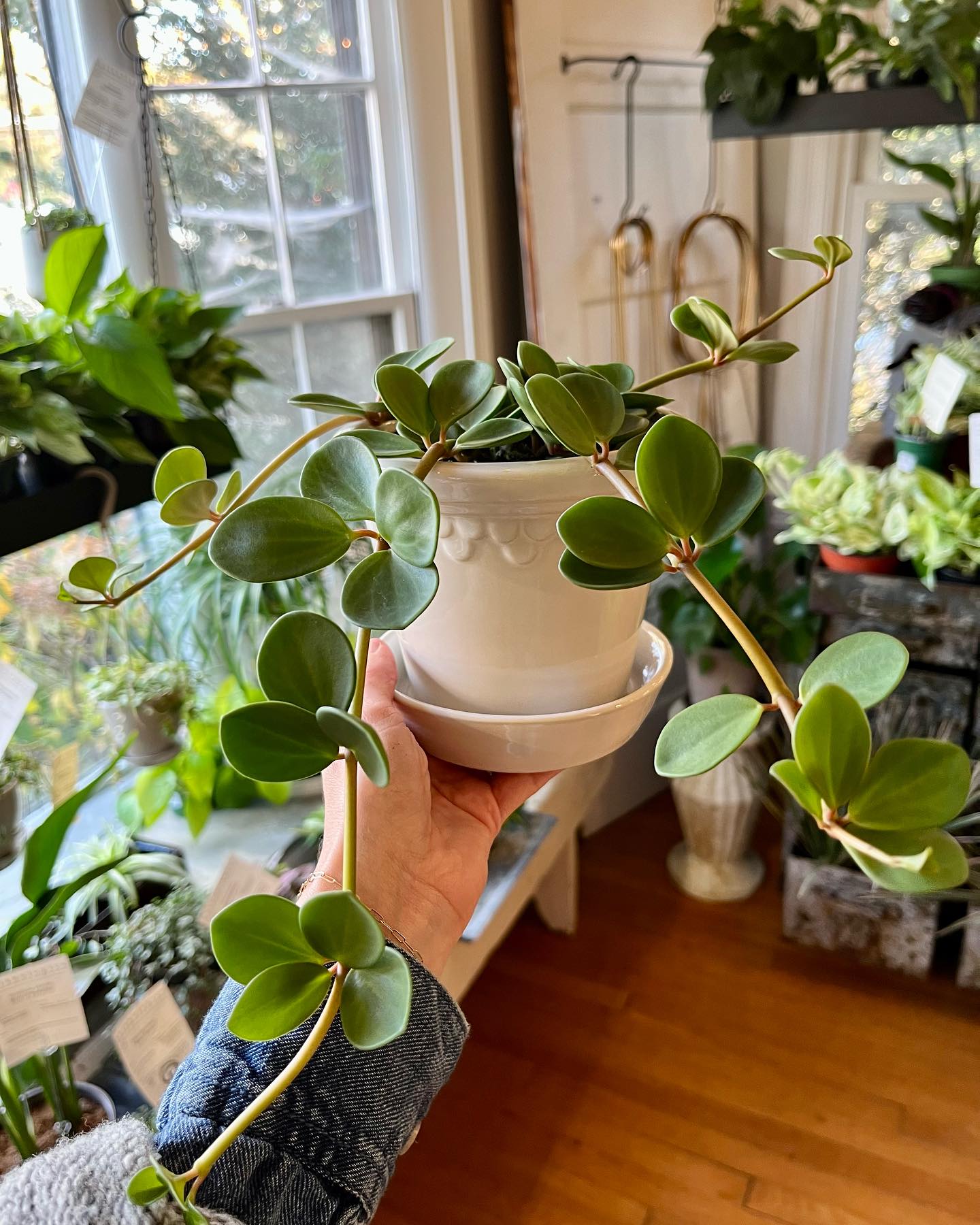
- Why It’s Great: Peperomias are charming and compact houseplants, known for their variety of textures and colors. These plants are ideal for small spaces and add a touch of lushness to your home with minimal care.
- Light: Prefers medium to bright, indirect light.
- Watering: Allow the topsoil to dry out between waterings.
- Size: Usually stays under 12 inches tall.
- Soil: Well-draining potting mix.
- Feeding: Feed with a diluted liquid fertilizer every month during the growing season.
- Flowering: Some species produce small, interesting flowers.
62. String of Beads (Senecio rowleyanus)
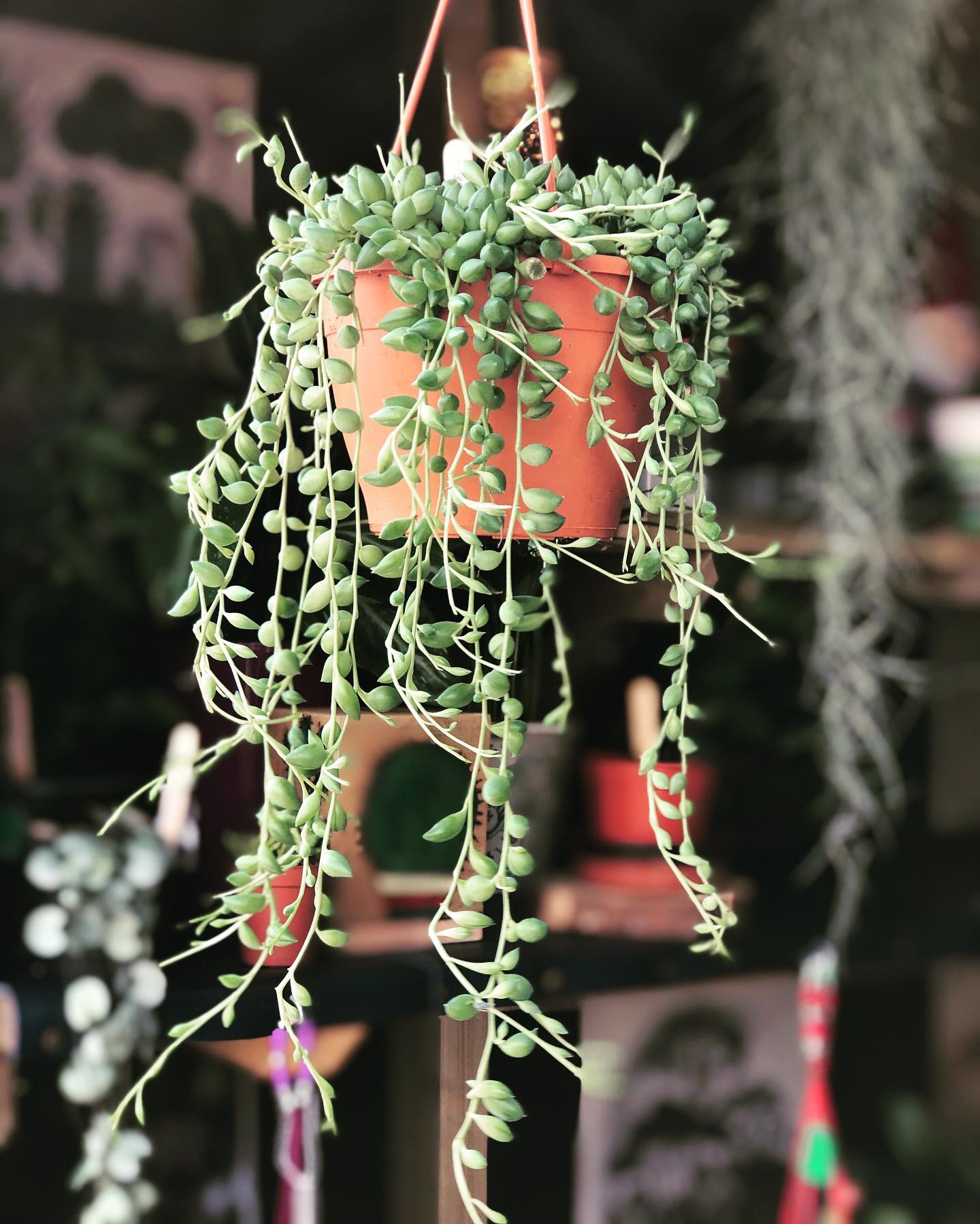
- Why It’s Great: The String of Beads, also known as the String of Pearls, is an eye-catching succulent with pea-like leaves strung along trailing stems. It’s perfect for hanging baskets and adds a unique, cascading element to any indoor garden.
- Light: Bright, indirect light.
- Watering: Water every 2-3 weeks, allowing soil to dry out.
- Size: Can trail up to 3 feet long.
- Soil: Well-draining succulent mix.
- Feeding: Light feeding with succulent fertilizer during growing season.
- Flowering: Produces small white flowers.
63. Century Plant (Agave americana)
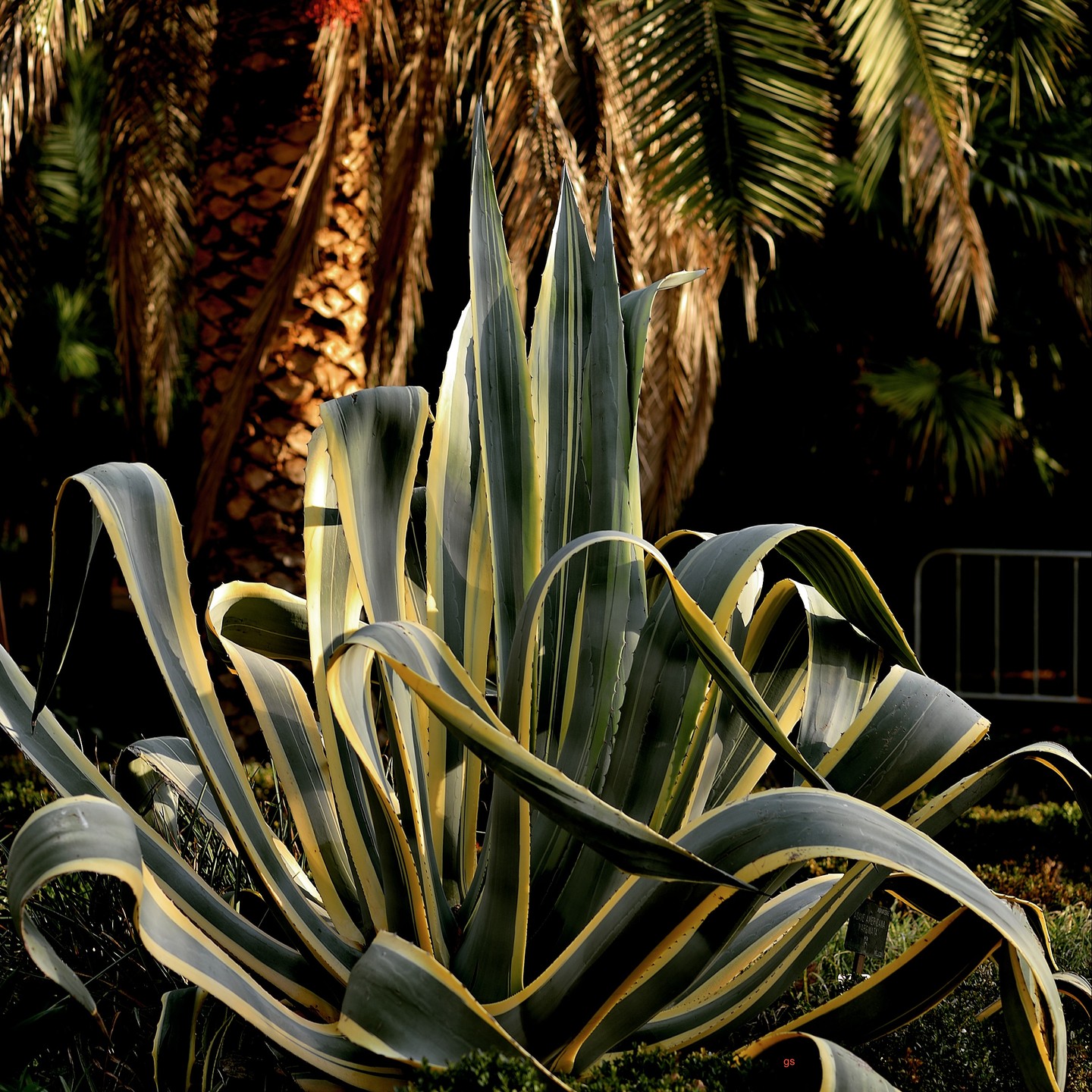
- Why It’s Great: The Century Plant is a majestic and sculptural succulent, making a bold statement with its large, spiky leaves. It’s a dramatic addition to any indoor space, bringing an element of the desert indoors.
- Light: Full sun to partial shade.
- Watering: Water sparingly, allowing soil to completely dry out.
- Size: Can grow several feet tall and wide.
- Soil: Well-draining soil mix.
- Feeding: Minimal feeding required.
- Flowering: Rarely flowers, but when it does, the flower spike is spectacular.
64. Heartleaf Philodendron (Philodendron hederaceum)
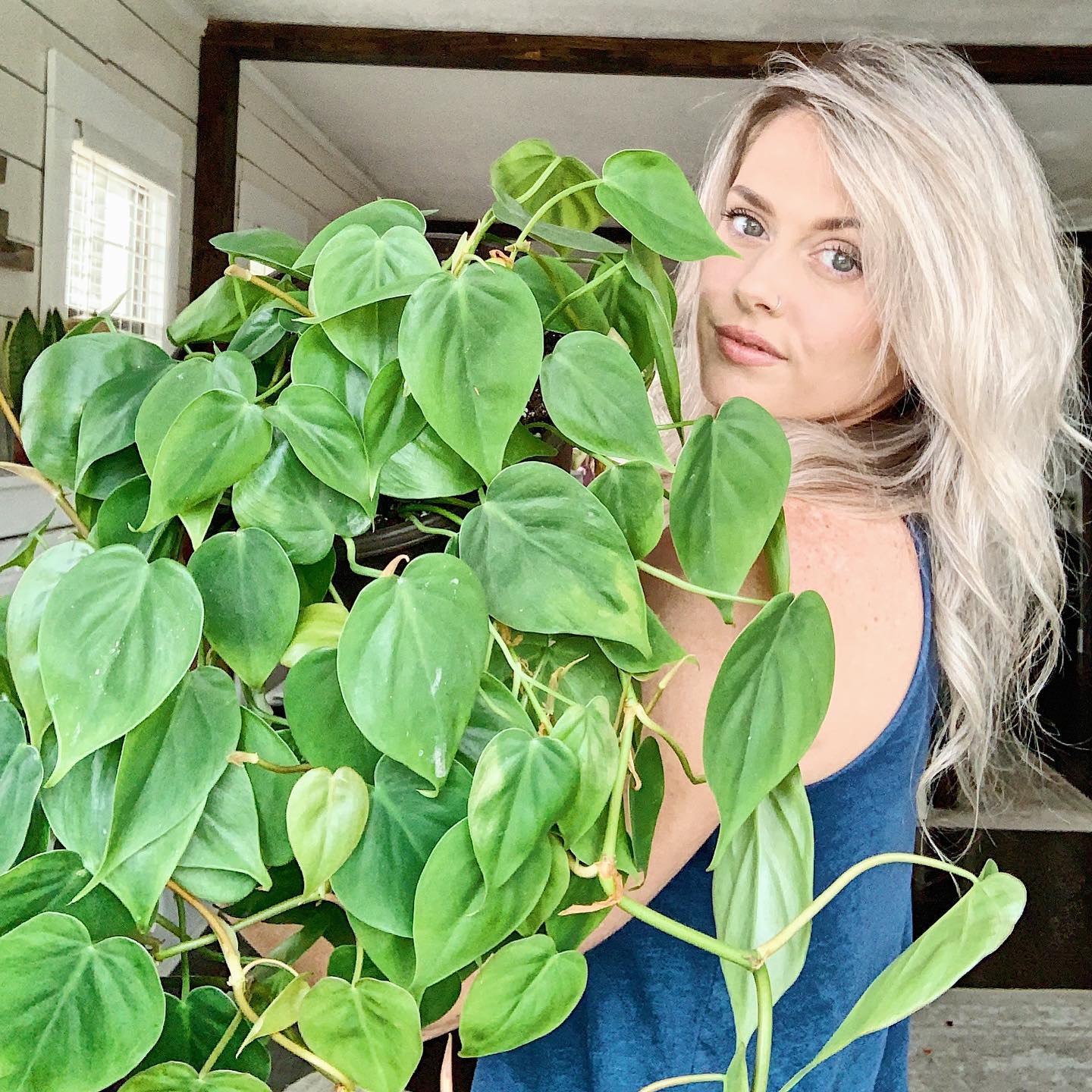
- Why It’s Great: The Heartleaf Philodendron is a classic and versatile houseplant, beloved for its heart-shaped leaves and trailing vines. It’s perfect for adding a touch of greenery to shelves or hanging baskets.
- Light: Thrives in medium to low, indirect light.
- Watering: Water when the top inch of soil dries out.
- Size: Vines can reach several feet in length.
- Soil: Well-draining, rich potting soil.
- Feeding: Feed with a liquid fertilizer every month during the growing season.
- Flowering: Rarely flowers indoors.
65. Moon Cactus (Gymnocalycium mihanovichii)
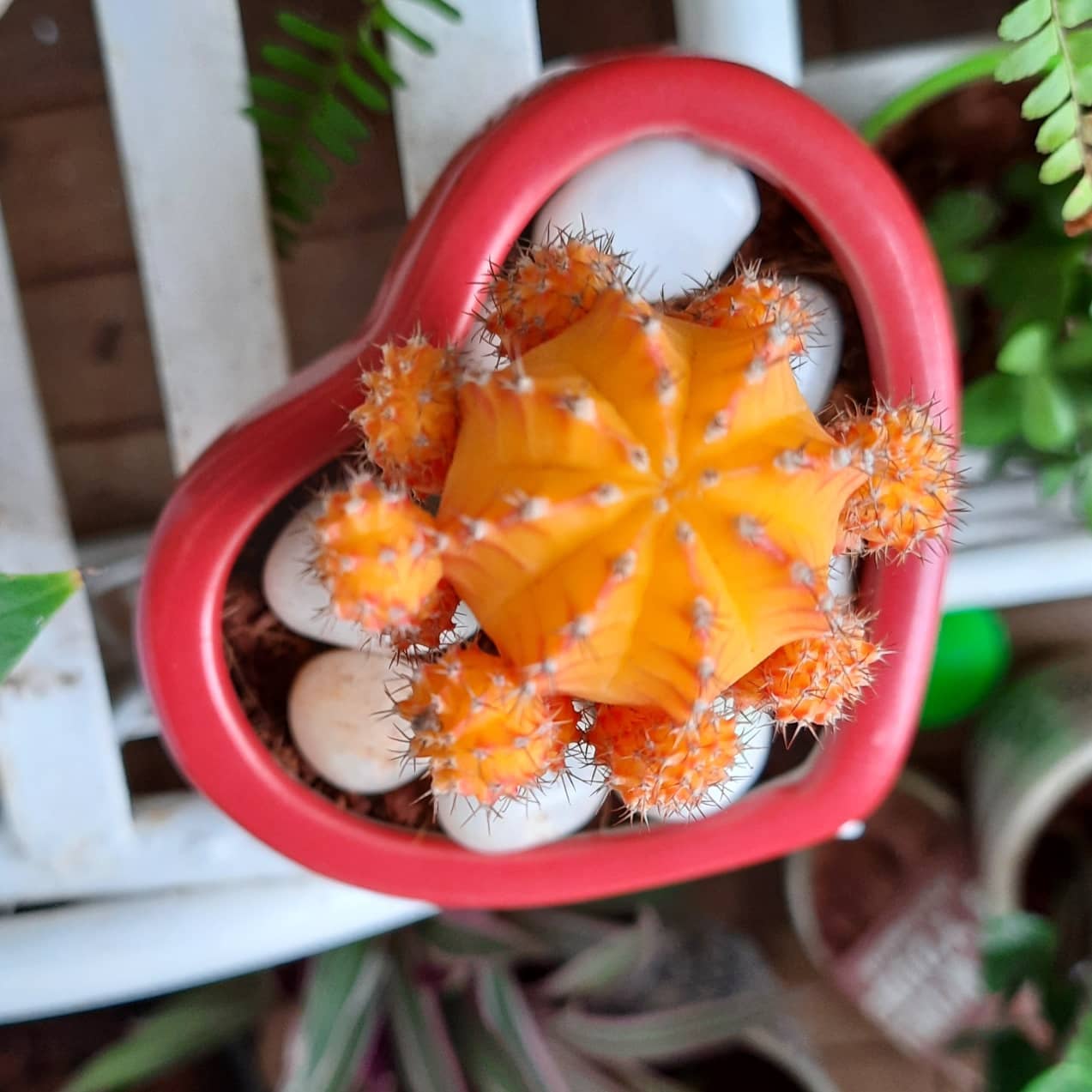
- Why It’s Great: The Moon Cactus is known for its vibrant, colorful graft on top of a green cactus base. It adds a pop of color to your cactus collection and is a fun, quirky plant that’s sure to brighten up any space.
- Light: Bright, indirect light.
- Watering: Water sparingly, only when the soil is completely dry.
- Size: Typically stays under 6 inches tall.
- Soil: Well-draining cactus mix.
- Feeding: Minimal feeding; can be fertilized once in the growing season.
- Flowering: The grafted top does not flower; the base may produce flowers.
66. Devil’s Backbone (Kalanchoe daigremontiana)
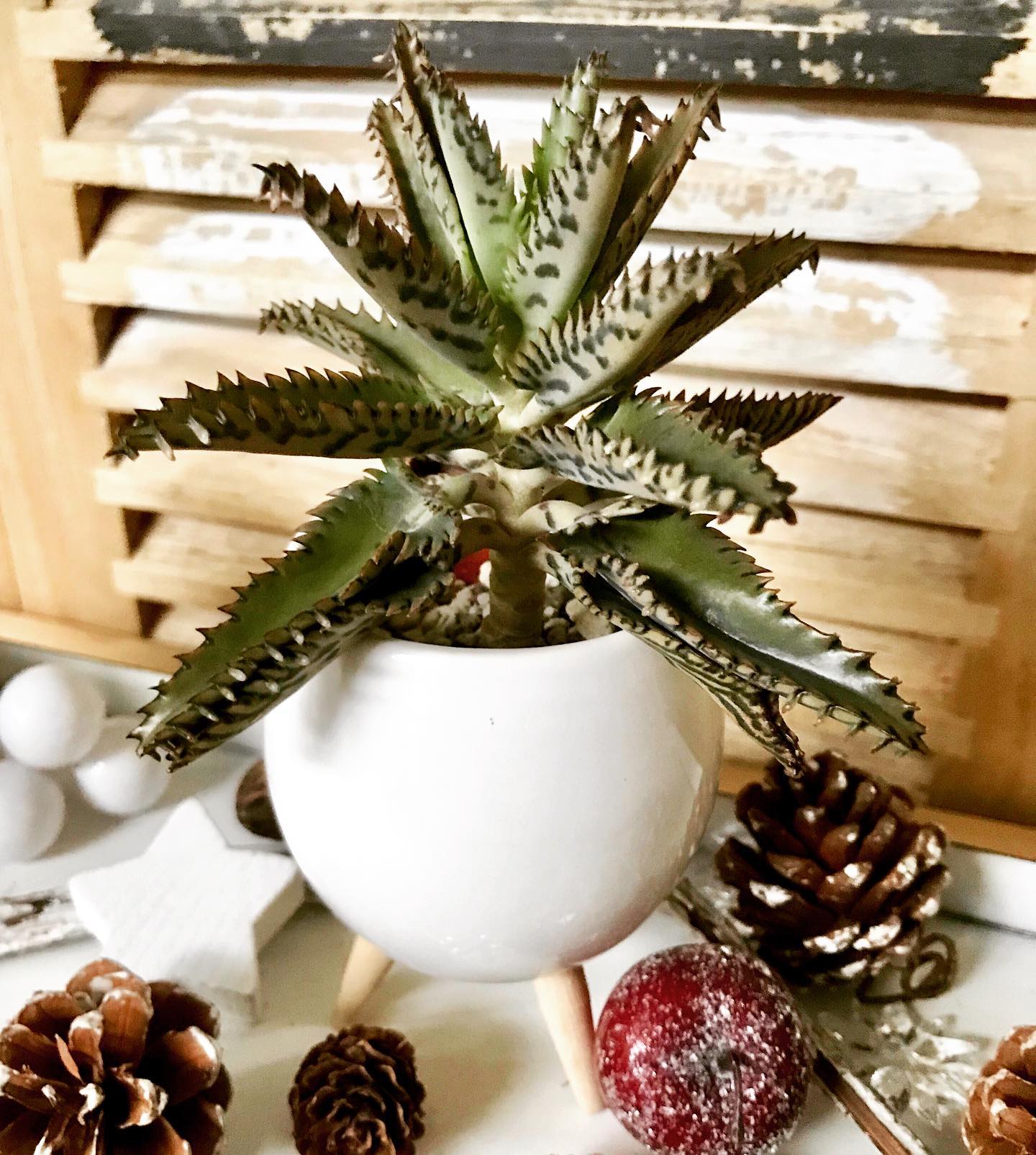
- Why It’s Great: Devil’s Backbone, with its zigzag stems and patterned leaves, is a fascinating and easy-care succulent. It’s known for producing tiny plantlets along its edges, which can fall off and root on their own.
- Light: Bright, indirect sunlight.
- Watering: Allow the soil to dry out between waterings.
- Size: Can grow up to 2 feet tall.
- Soil: Well-draining succulent mix.
- Feeding: Feed with a diluted liquid fertilizer during the growing season.
- Flowering: Produces small, tubular flowers.
67. Aeonium (Various species)
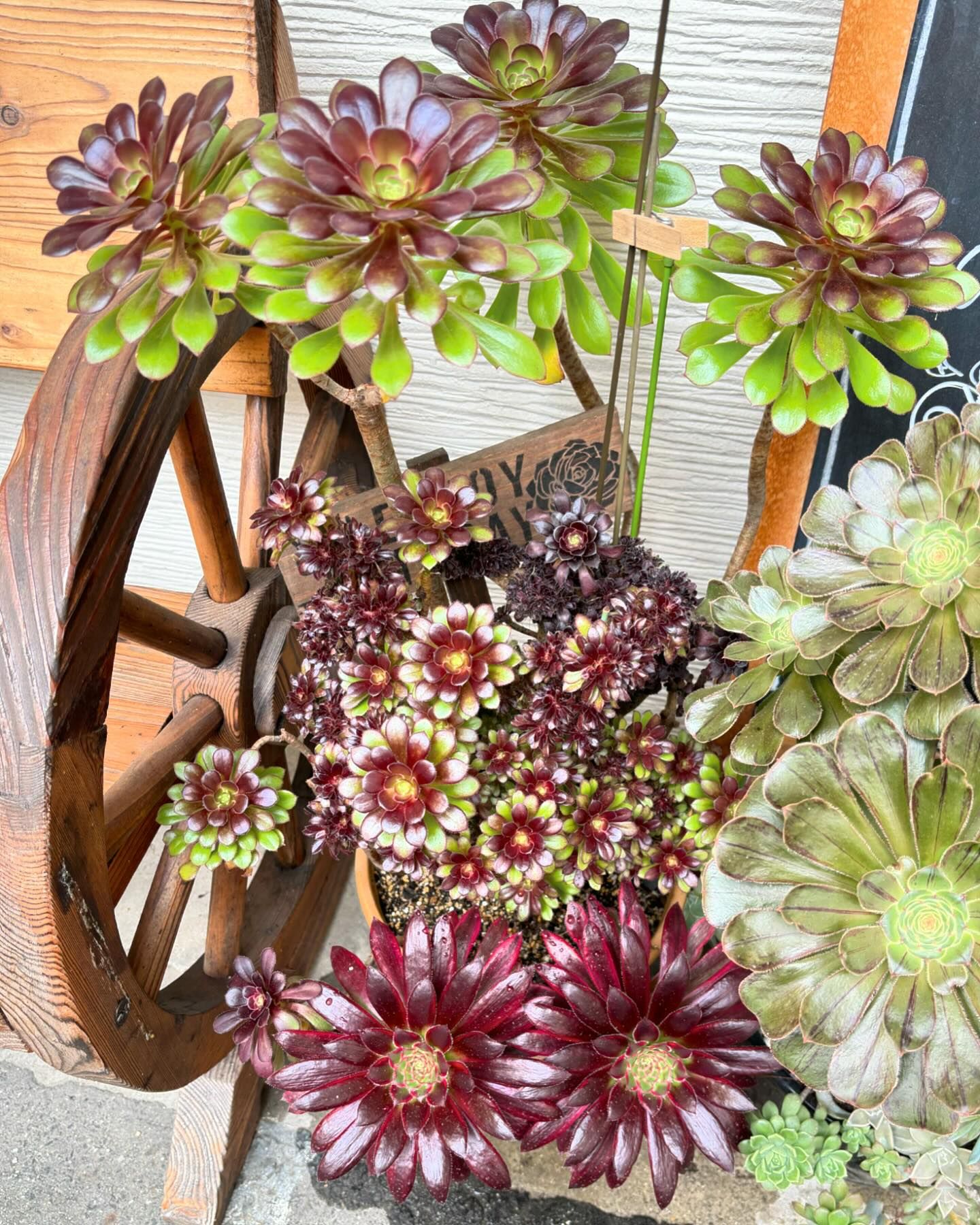
- Why It’s Great: Aeoniums are striking succulents with rosettes of leaves on long stems. They come in various colors and add an architectural element to your indoor garden, especially when they bloom with their stunning flowers.
- Light: Prefers bright, indirect light.
- Watering: Allow soil to dry out between waterings.
- Size: Varies by species; some can grow up to 3 feet tall.
- Soil: Well-draining succulent mix.
- Feeding: Light feeding with succulent fertilizer during growing season.
- Flowering: Produces large, showy flower clusters.
68. Firestick Plant (Euphorbia tirucalli)
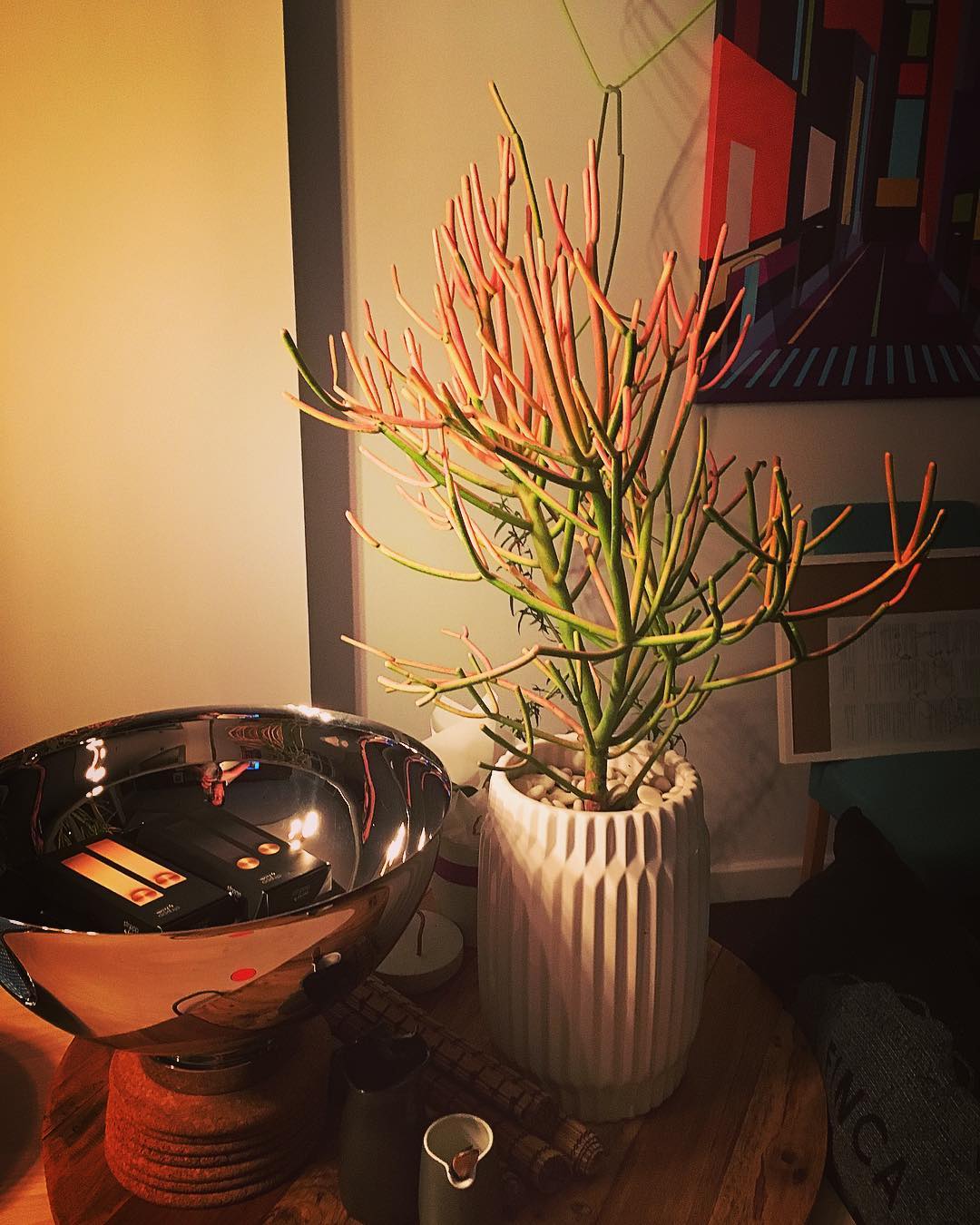
- Why It’s Great: The Firestick Plant is notable for its striking, coral-like branches that turn bright red in the sun. It’s a bold and colorful choice that adds a dramatic touch to any indoor plant collection.
- Light: Bright, direct sunlight.
- Watering: Water sparingly, allowing the soil to dry out completely.
- Size: Can grow up to 6 feet tall indoors.
- Soil: Well-draining soil.
- Feeding: Minimal feeding; once or twice a year.
- Flowering: Rarely flowers indoors.
69. Orchid Cactus (Epiphyllum oxypetalum)
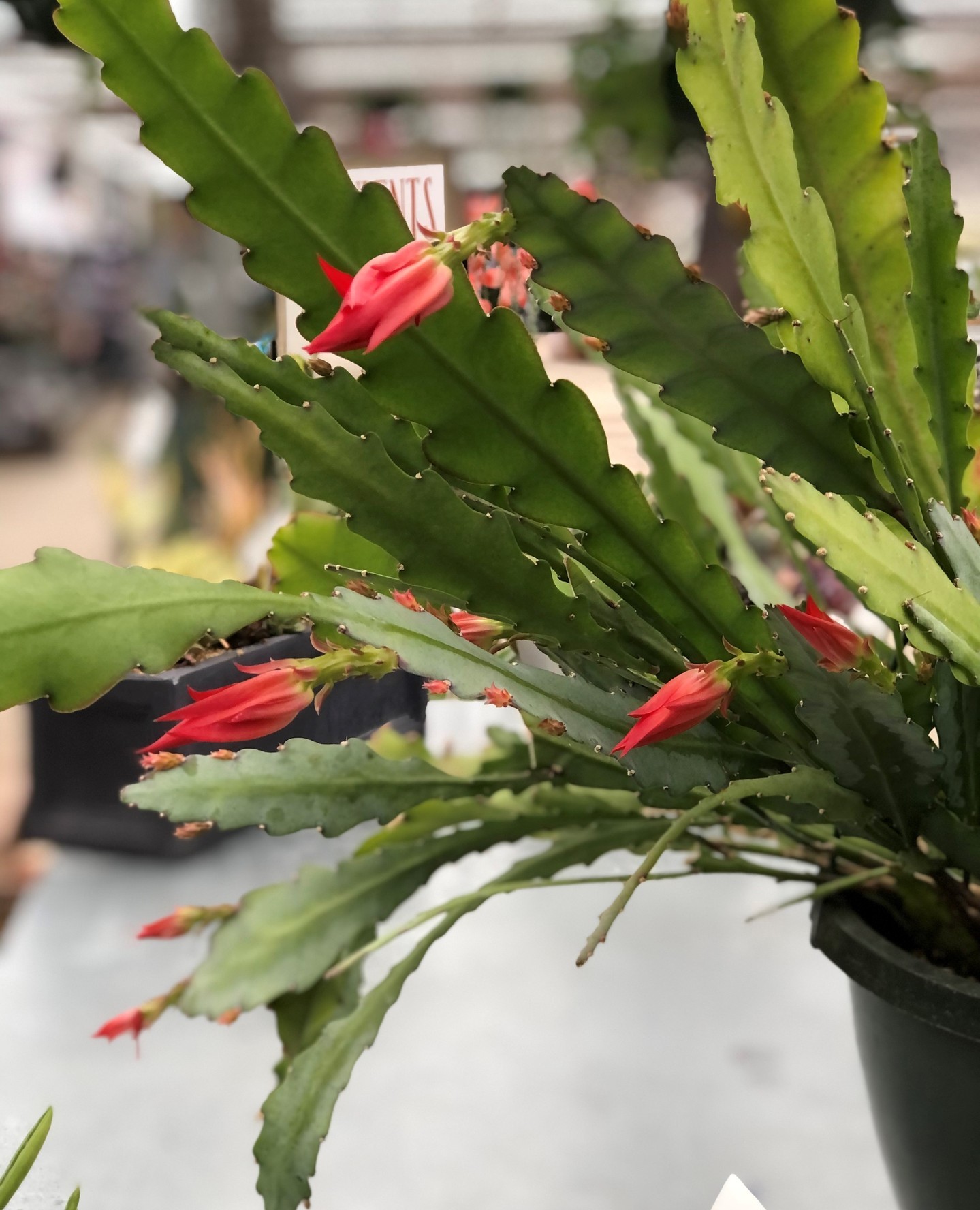
- Why It’s Great: The Orchid Cactus is celebrated for its stunning, large flowers that bloom at night. Its broad, flat stems and spectacular blooms make it a unique and exotic addition to any indoor garden.
- Light: Bright, indirect light.
- Watering: Keep soil slightly moist during growing season.
- Size: Can reach several feet in length.
- Soil: Well-draining, rich potting mix.
- Feeding: Feed with a balanced liquid fertilizer every month in spring and summer.
- Flowering: Produces large, fragrant, white flowers.
70. Bird’s Nest Fern (Asplenium nidus)
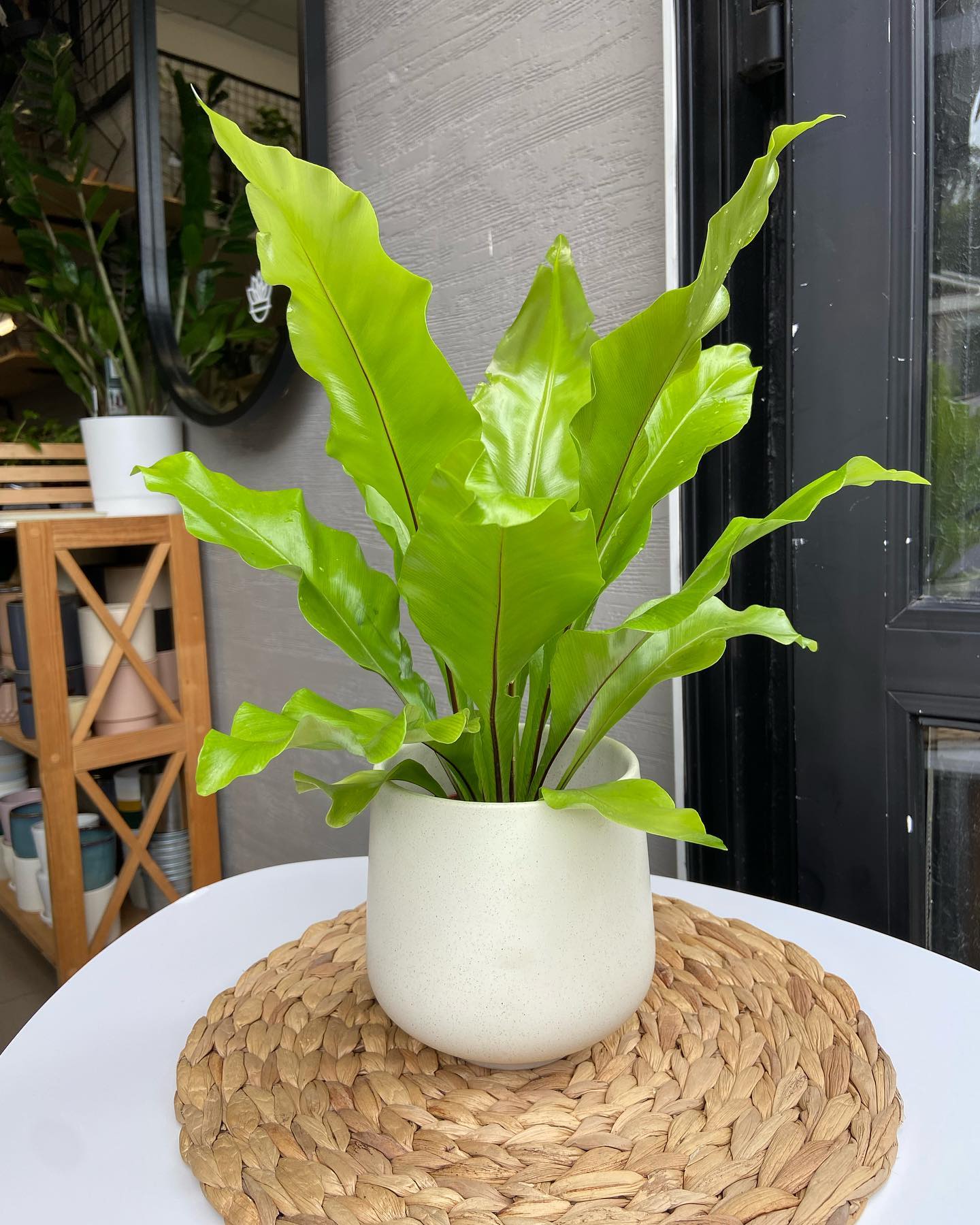
- Why It’s Great: The Bird’s Nest Fern is an attractive plant with broad, ripple-edged fronds that emerge from a central rosette, resembling a bird’s nest. It’s perfect for adding a lush, tropical feel to any indoor setting.
- Light: Prefers medium to bright, indirect light.
- Watering: Keep soil consistently moist.
- Size: Can grow up to 2 feet tall and wide.
- Soil: Rich, well-draining potting mix.
- Feeding: Feed every month during growing season with a balanced liquid fertilizer.
- Flowering: Non-flowering plant.
71. Clivia (Clivia miniata)
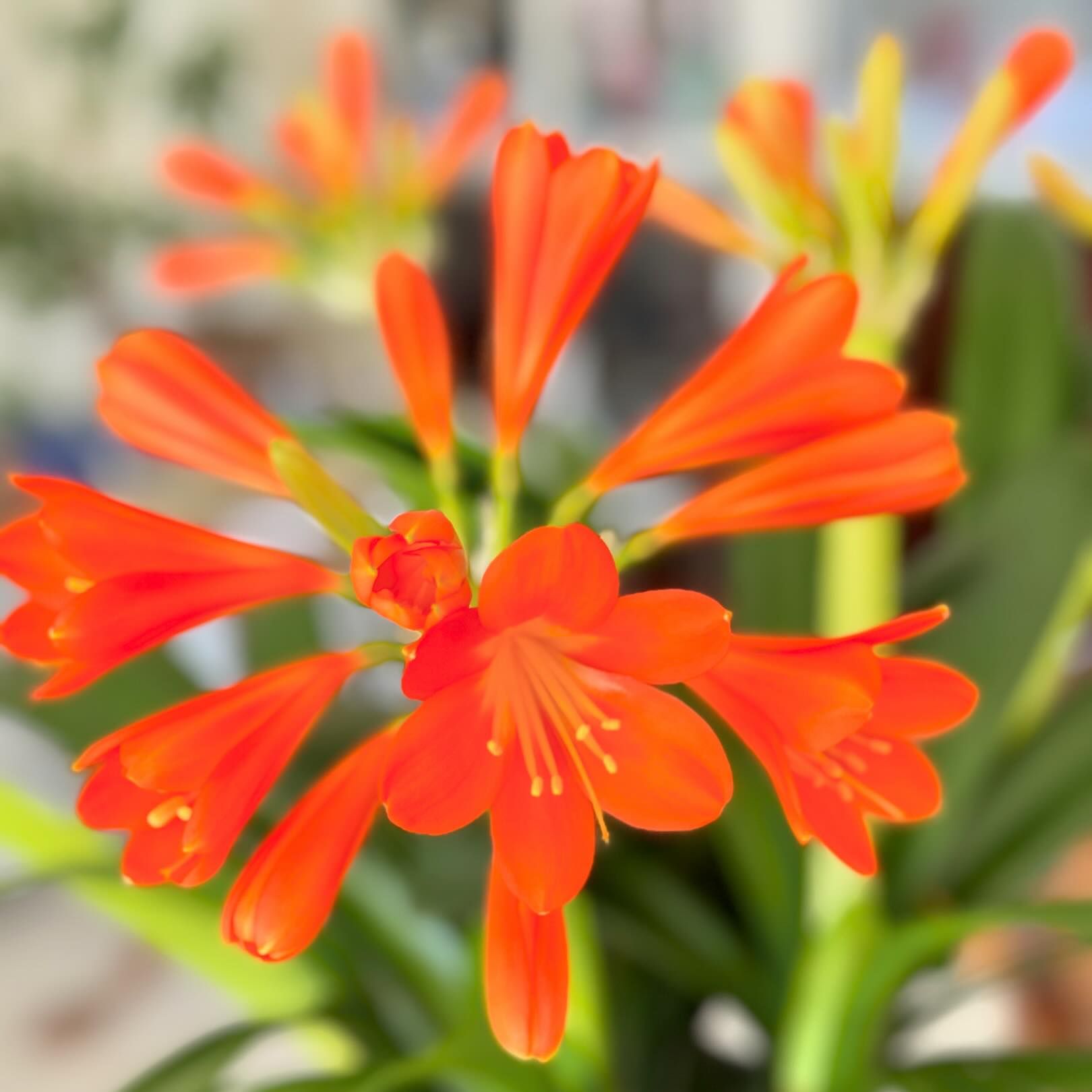
- Why It’s Great: Clivia, with its bright orange or yellow flowers, is a stunning and easy-to-care-for plant. Known for its ability to thrive in low light conditions, it brings a splash of color to darker corners of your home.
- Light: Prefers low to medium, indirect light.
- Watering: Water sparingly, allowing soil to dry out between waterings.
- Size: Grows up to 2 feet tall.
- Soil: Well-draining, rich potting mix.
- Feeding: Feed with a balanced liquid fertilizer in spring and summer.
- Flowering: Produces vibrant orange or yellow flowers in late winter or early spring.
72. Barrel Cactus (Echinocactus)
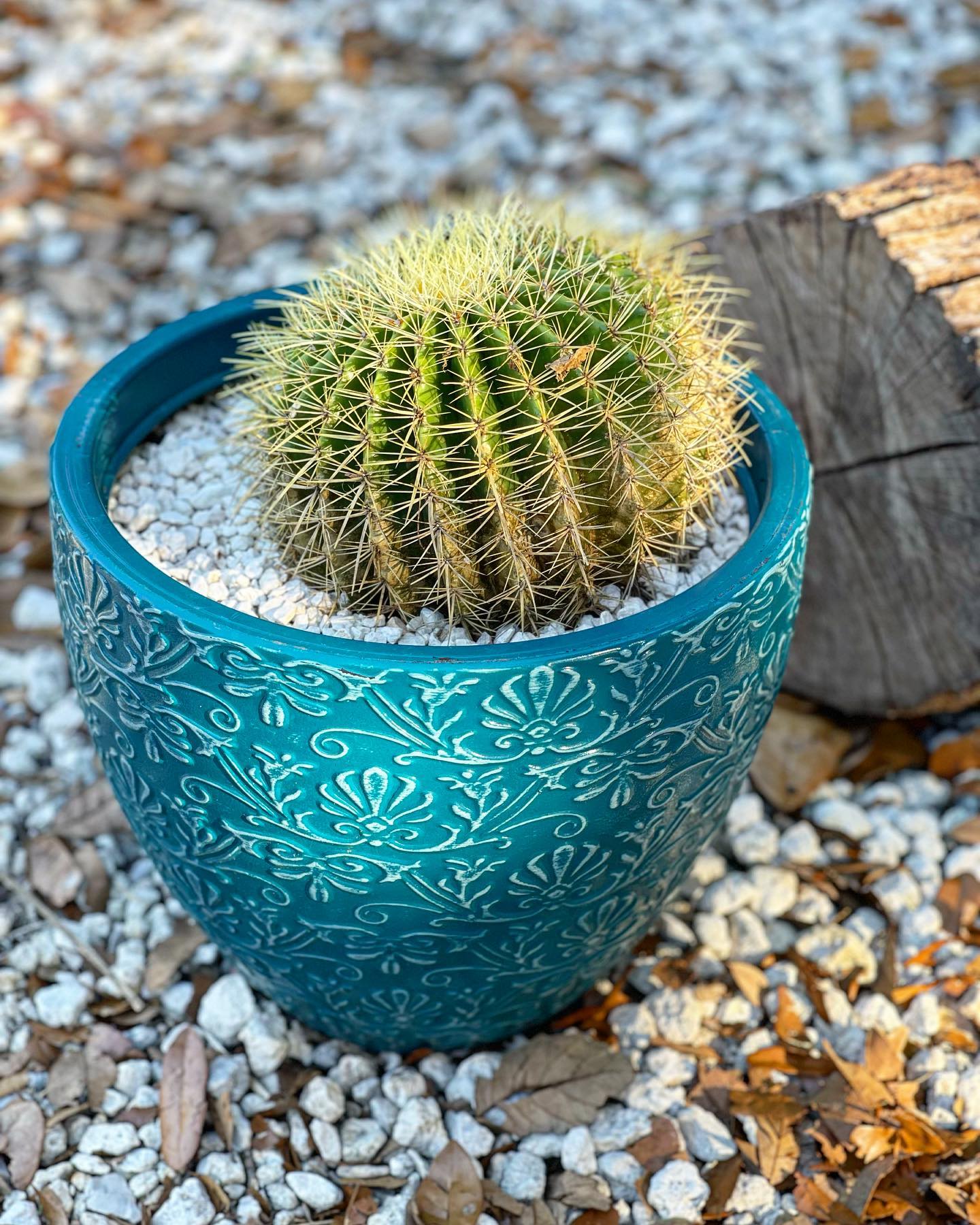
- Why It’s Great: The Barrel Cactus is a classic cactus with a rounded, barrel-like shape and prominent ribs lined with spines. It’s a perfect choice for adding a touch of the rugged desert to your indoor space.
- Light: Prefers bright, direct sunlight.
- Watering: Water every 3-4 weeks in summer; less frequently in winter.
- Size: Can grow up to several feet in diameter.
- Soil: Well-draining cactus mix.
- Feeding: Feed with cactus fertilizer during the growing season.
- Flowering: Produces flowers at the top of the cactus, but rarely indoors.
73. Starfish Plant (Cryptanthus bivittatus)
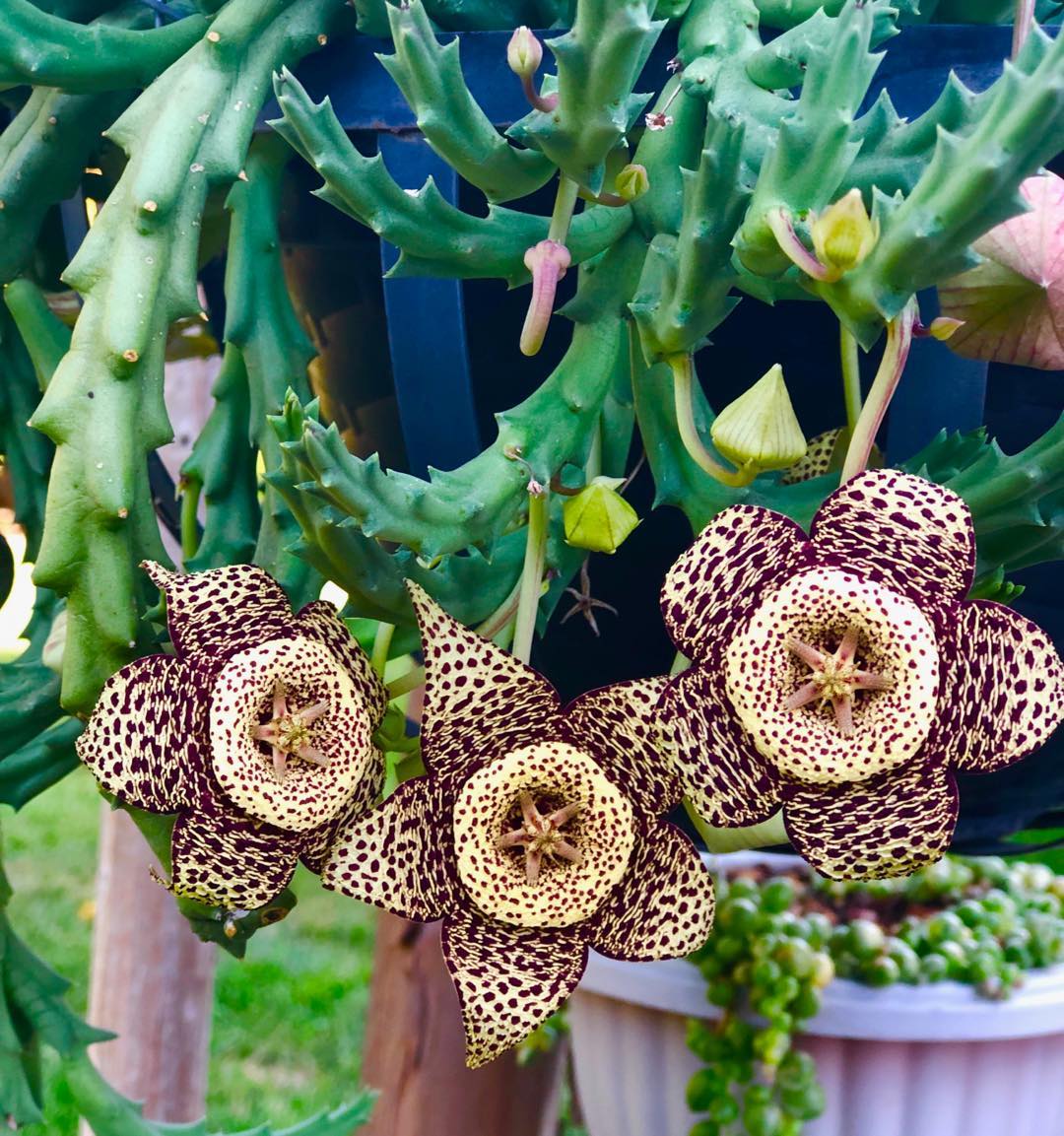
- Why It’s Great: The Starfish Plant is a striking bromeliad with a star-shaped rosette of leaves. Its colorful, patterned foliage makes it a standout addition to any indoor plant collection.
- Light: Bright, indirect light.
- Watering: Keep soil consistently moist.
- Size: Grows up to 6 inches tall.
- Soil: Well-draining, rich potting mix.
- Feeding: Feed with a diluted liquid fertilizer during the growing season.
- Flowering: Produces a small flower in the center of the rosette.
74. Spike Moss (Selaginella)
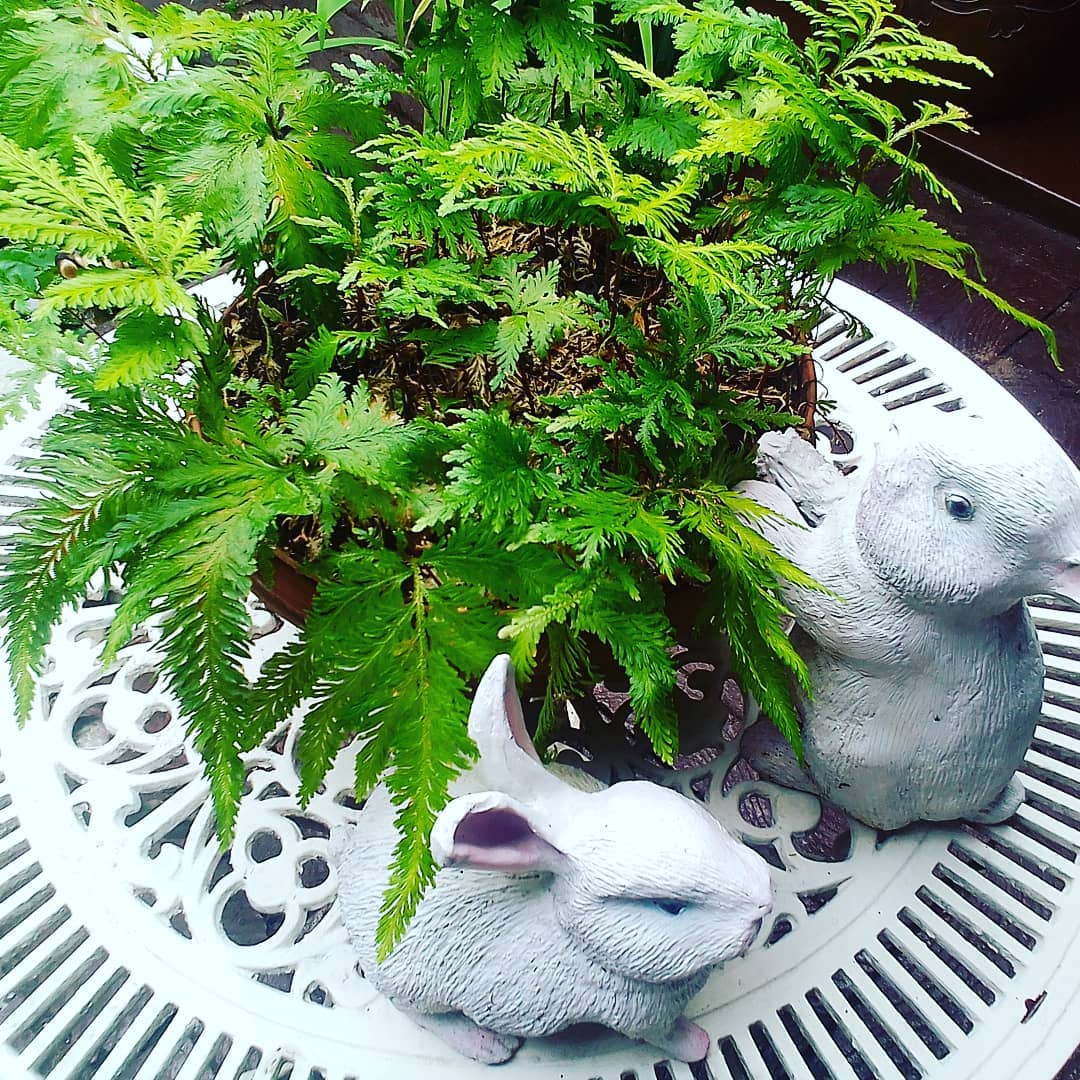
- Why It’s Great: Spike Moss, also known as “Frosty Fern,” is a lush, moss-like plant with feathery foliage. It’s great for terrariums and adds a soft, green touch to any indoor environment.
- Light: Prefers bright, indirect light.
- Watering: Keep soil consistently moist.
- Size: Typically stays under 12 inches.
- Soil: Moist, well-draining soil.
- Feeding: Minimal feeding required.
- Flowering: Non-flowering plant.
75. King Sago Palm (Cycas revoluta)
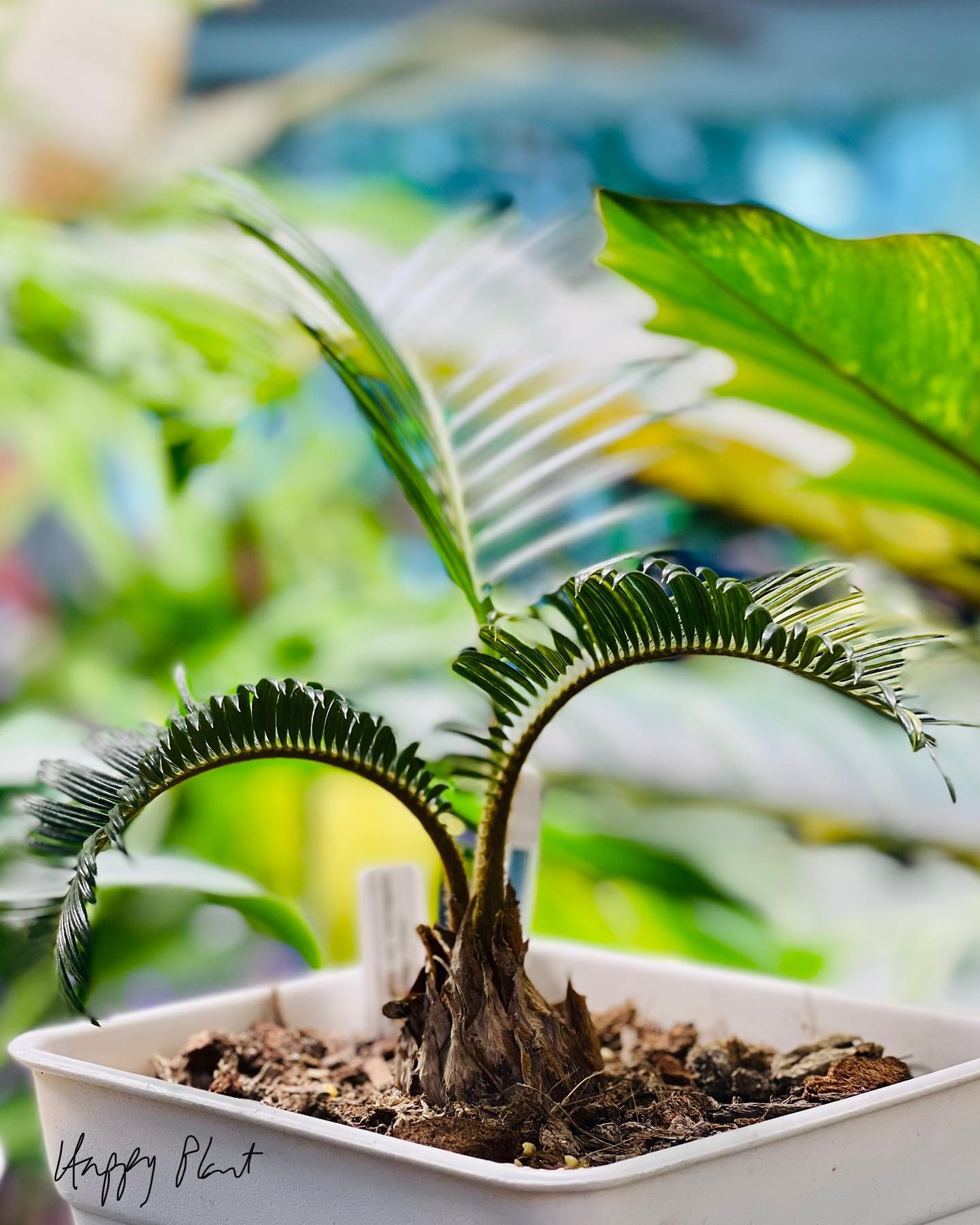
- Why It’s Great: The King Sago Palm, though not a true palm, is a prehistoric plant that adds an ancient and exotic touch to your space. Its slow growth and ease of care make it a long-lasting and striking addition.
- Light: Bright, indirect light.
- Watering: Allow soil to dry out between waterings.
- Size: Can grow up to 6 feet tall.
- Soil: Well-draining potting mix.
- Feeding: Feed with a balanced fertilizer during the growing season.
- Flowering: Produces cones; not typically grown for its flowers.
76. Donkey’s Tail (Sedum morganianum)
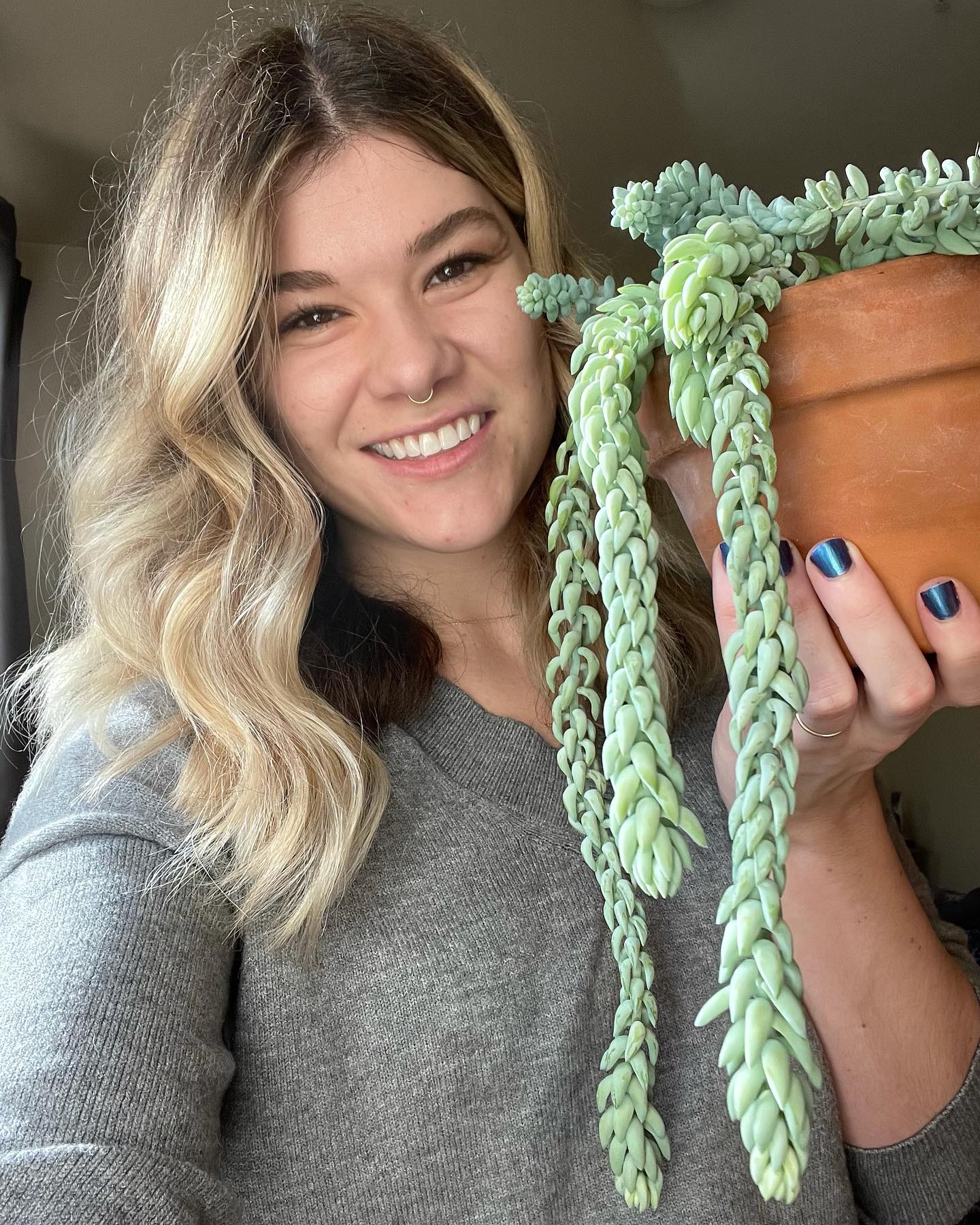
- Why It’s Great: Also known as “Burro’s Tail,” this succulent is loved for its trailing stems covered with dense, plump leaves. It’s perfect for hanging baskets, where its tails can elegantly cascade down.
- Light: Bright, indirect light.
- Watering: Water every 2-3 weeks, allowing soil to dry out.
- Size: Trails can grow up to 4 feet long.
- Soil: Well-draining succulent mix.
- Feeding: Light feeding with succulent fertilizer during growing season.
- Flowering: Produces small pink or red flowers.
77. Crown of Thorns (Euphorbia milii)
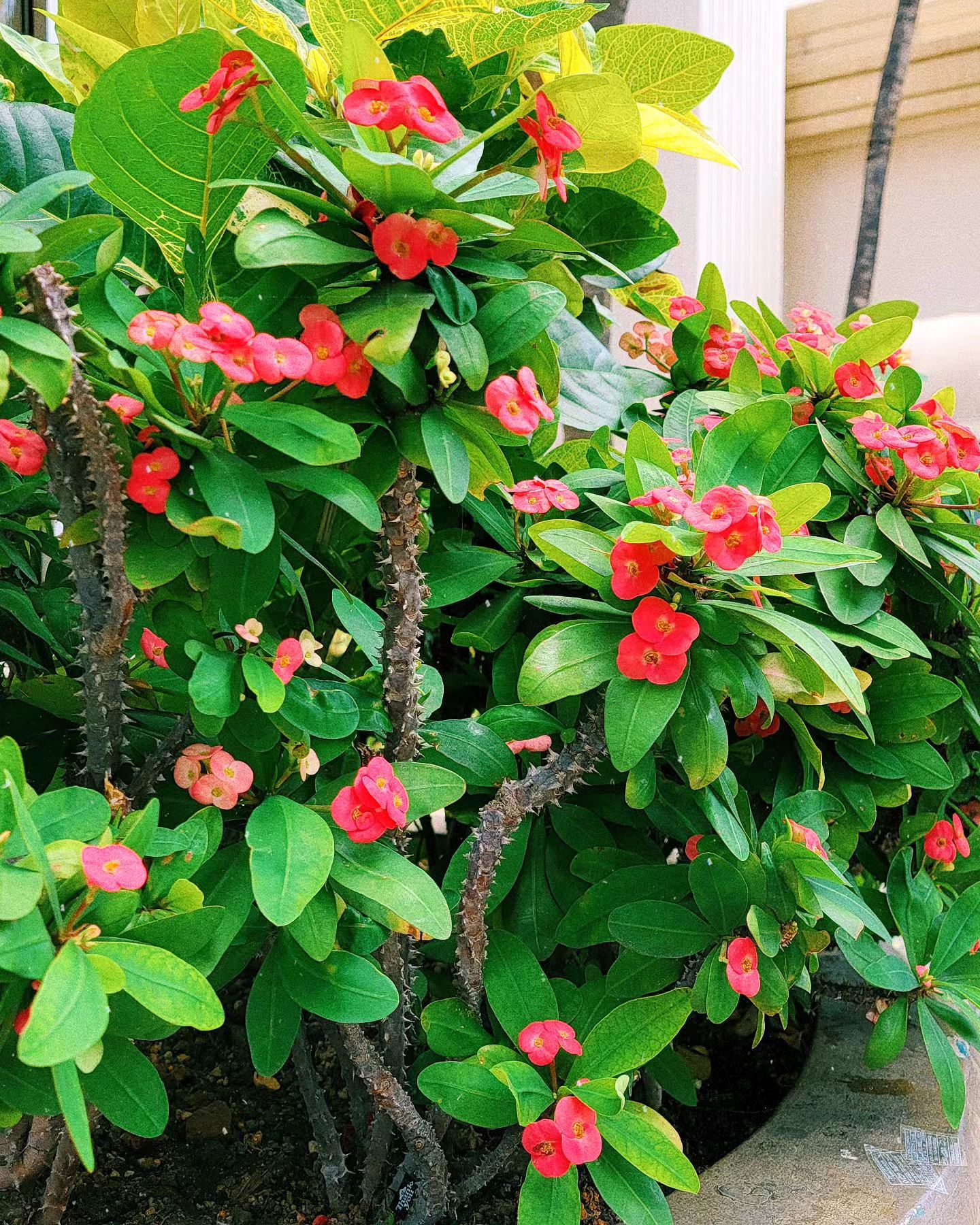
- Why It’s Great: The Crown of Thorns is a tough and resilient plant with bright, cheerful flowers. Its combination of spiky stems and vibrant blooms brings a unique aesthetic to your indoor plant collection.
- Light: Bright, direct sunlight.
- Watering: Water sparingly, allowing soil to dry out.
- Size: Can grow up to 3 feet tall.
- Soil: Well-draining soil mix.
- Feeding: Feed with a diluted liquid fertilizer every couple of months.
- Flowering: Produces small flowers throughout the year.
78. Rubber Tree (Ficus elastica)
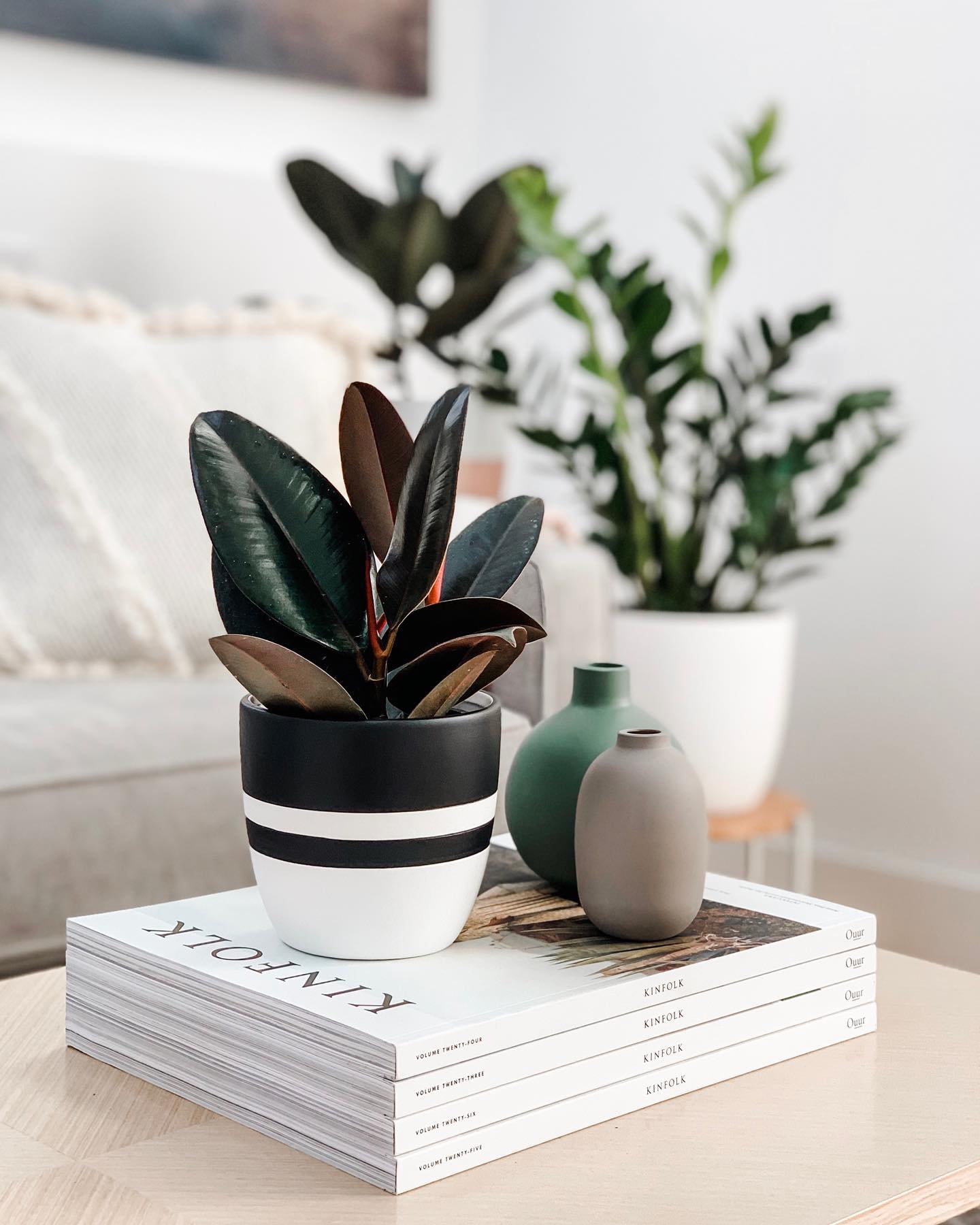
- Why It’s Great: The Rubber Tree is a popular indoor plant, known for its large, glossy leaves and robust growth. It’s an excellent plant for adding a touch of the tropics to your home and for purifying the air.
- Light: Bright, indirect light.
- Watering: Water when the top inch of soil is dry.
- Size: Can grow up to 10 feet tall indoors.
- Soil: Well-draining potting soil.
- Feeding: Feed with a diluted liquid fertilizer every month during the growing season.
- Flowering: Rarely flowers indoors.
79. Ghost Plant (Graptopetalum paraguayense)
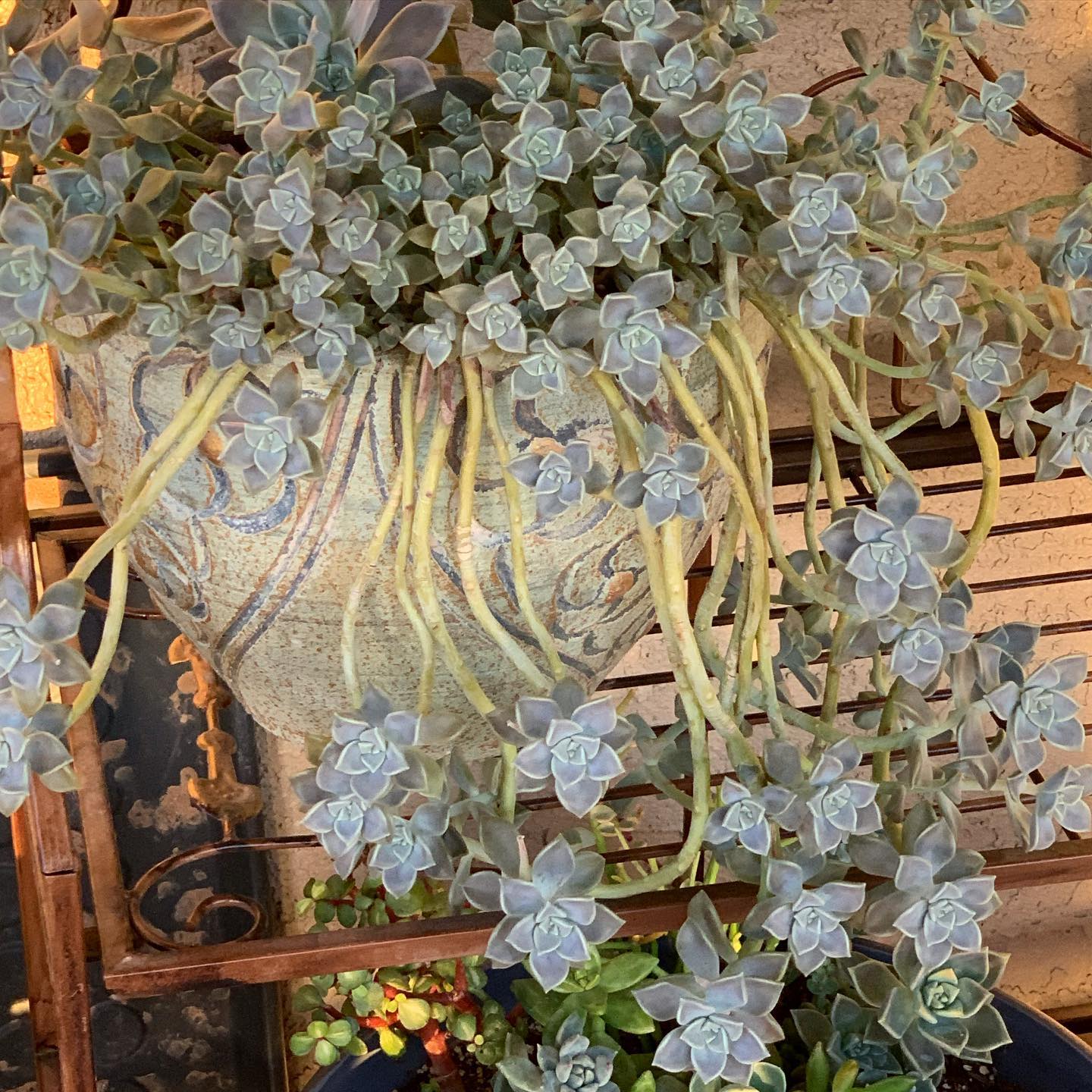
- Why It’s Great: The Ghost Plant is a fascinating succulent with a rosette shape and leaves that can vary in color from pale blue to pink. It’s known for its easy propagation and ability to adapt to various environments.
- Light: Bright, indirect light.
- Watering: Water every 2-3 weeks, allowing soil to dry out.
- Size: Can spread up to 3 feet wide.
- Soil: Well-draining succulent mix.
- Feeding: Minimal feeding required.
- Flowering: Produces small yellow flowers.
80. Areca Palm (Dypsis lutescens)
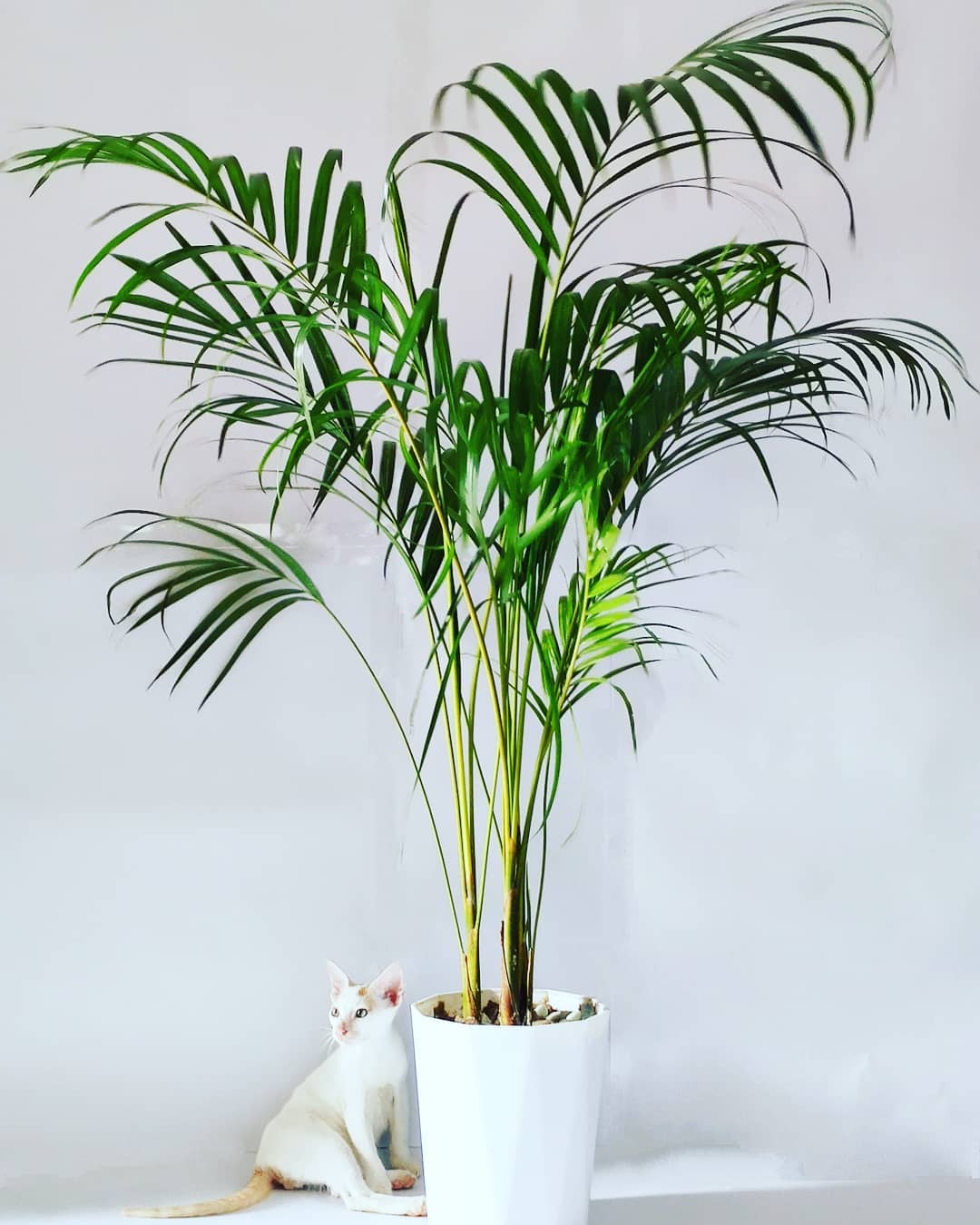
- Why It’s Great: The Areca Palm, also known as the Butterfly Palm, is a graceful and airy palm that adds a tropical flair to any room. It’s not only beautiful but also one of the best air-purifying plants.
- Light: Bright, indirect light.
- Watering: Keep soil evenly moist, but not soggy.
- Size: Can grow up to 6-7 feet tall.
- Soil: Well-draining, peat-based potting mix.
- Feeding: Feed with a palm fertilizer every couple of months during the growing season.
- Flowering: Rarely flowers indoors.
81. Weeping Fig (Ficus benjamina)
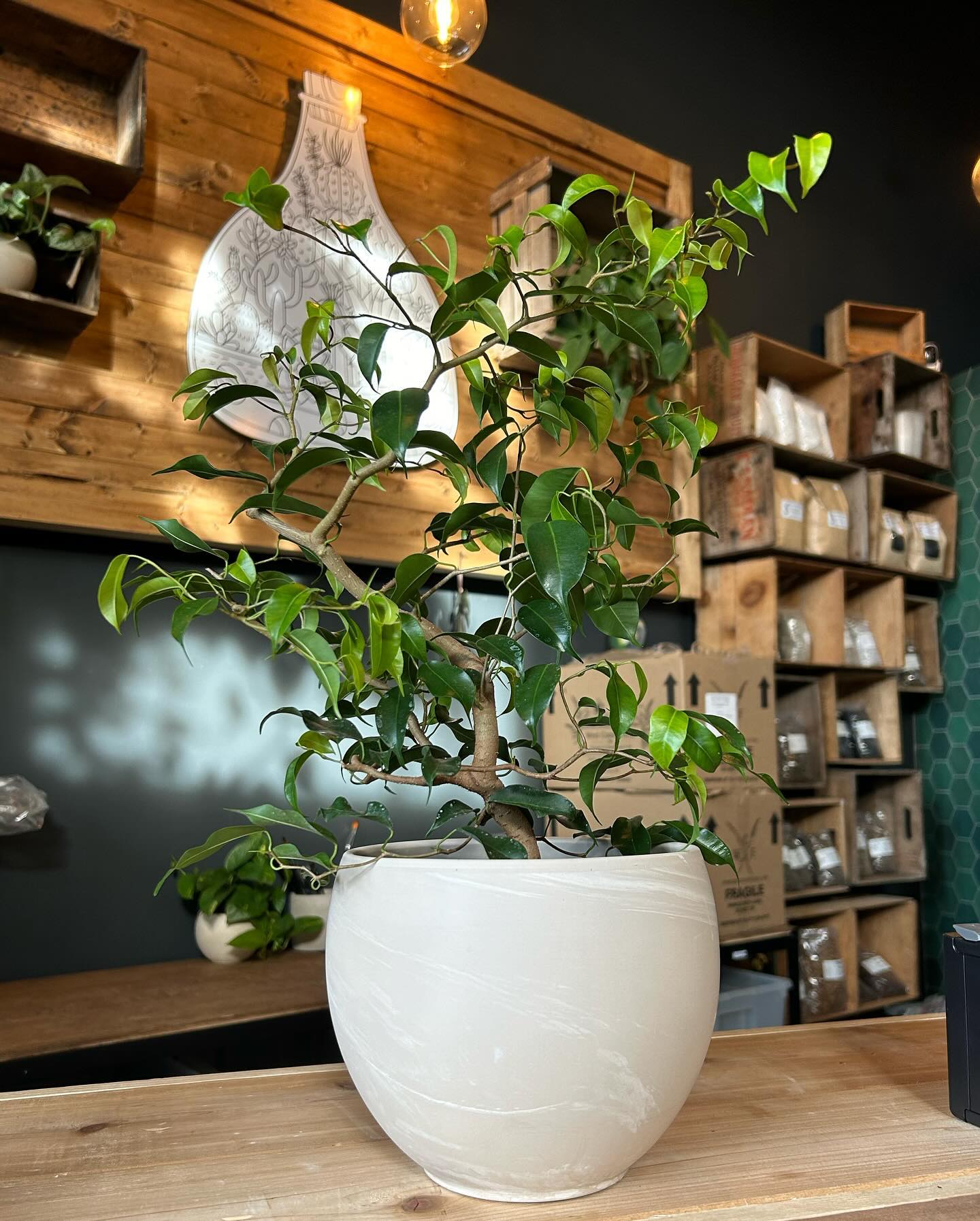
- Why It’s Great: The Weeping Fig is a classic indoor tree, known for its elegant, drooping branches and shiny green leaves. It’s excellent for filling vertical space and adds a graceful touch to any room.
- Light: Bright, indirect light.
- Watering: Water when the top inch of soil is dry.
- Size: Can grow up to 6 feet tall indoors.
- Soil: Well-draining potting soil.
- Feeding: Feed with liquid fertilizer every month during spring and summer.
- Flowering: Rarely flowers indoors.
82. Peruvian Apple Cactus (Cereus repandus)
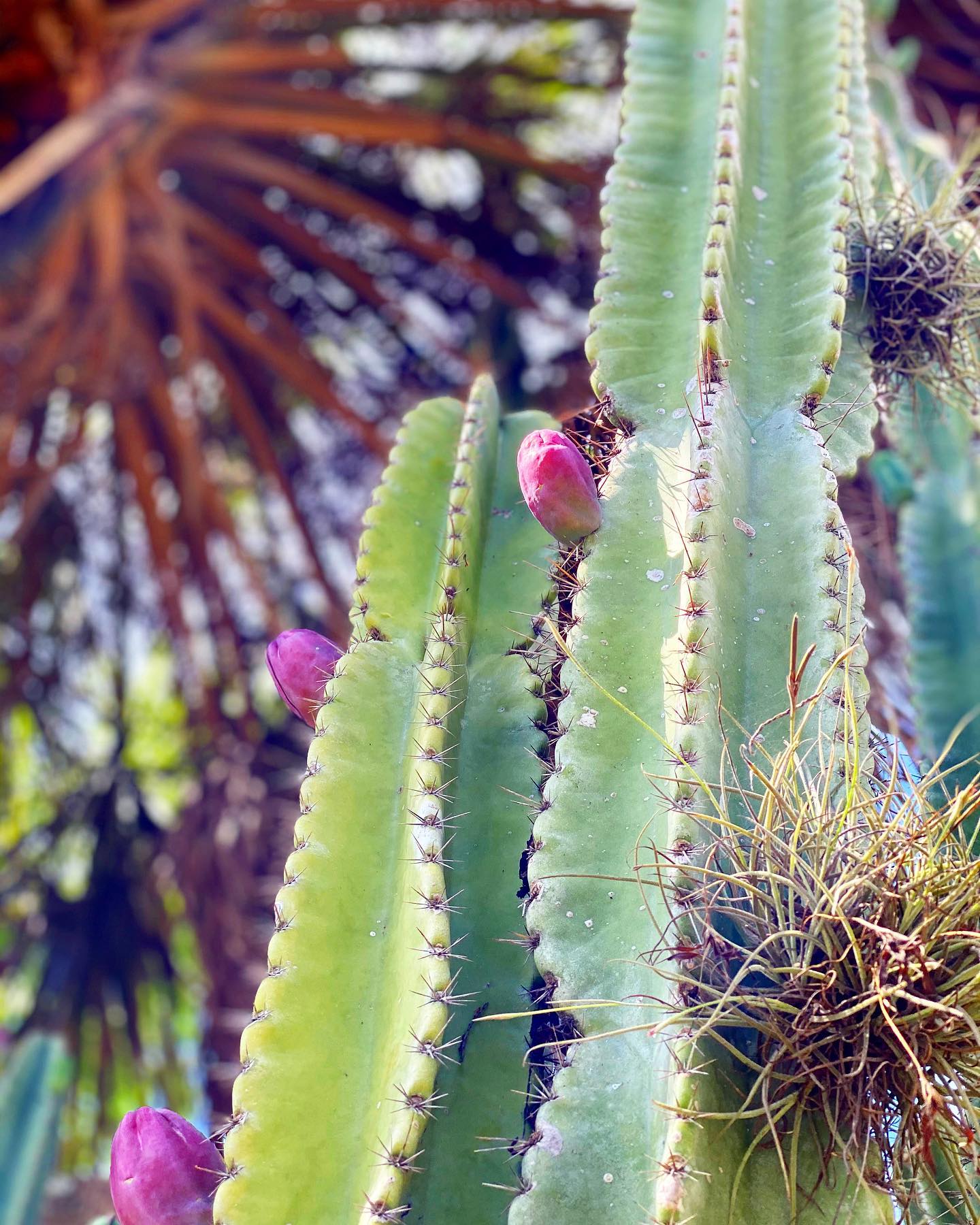
- Why It’s Great: The Peruvian Apple Cactus stands tall and proud, adding a desert vibe to your home. Its segmented, columnar stems are a striking architectural feature, and it occasionally produces edible fruits.
- Light: Full sun to bright, indirect light.
- Watering: Water every 3-4 weeks, allowing soil to dry out between waterings.
- Size: Can grow several feet tall indoors.
- Soil: Well-draining cactus mix.
- Feeding: Feed with a cactus fertilizer during the growing season.
- Flowering: Blooms at night with large, white flowers, though rarely indoors.
83. Spotted Begonia (Begonia maculata)
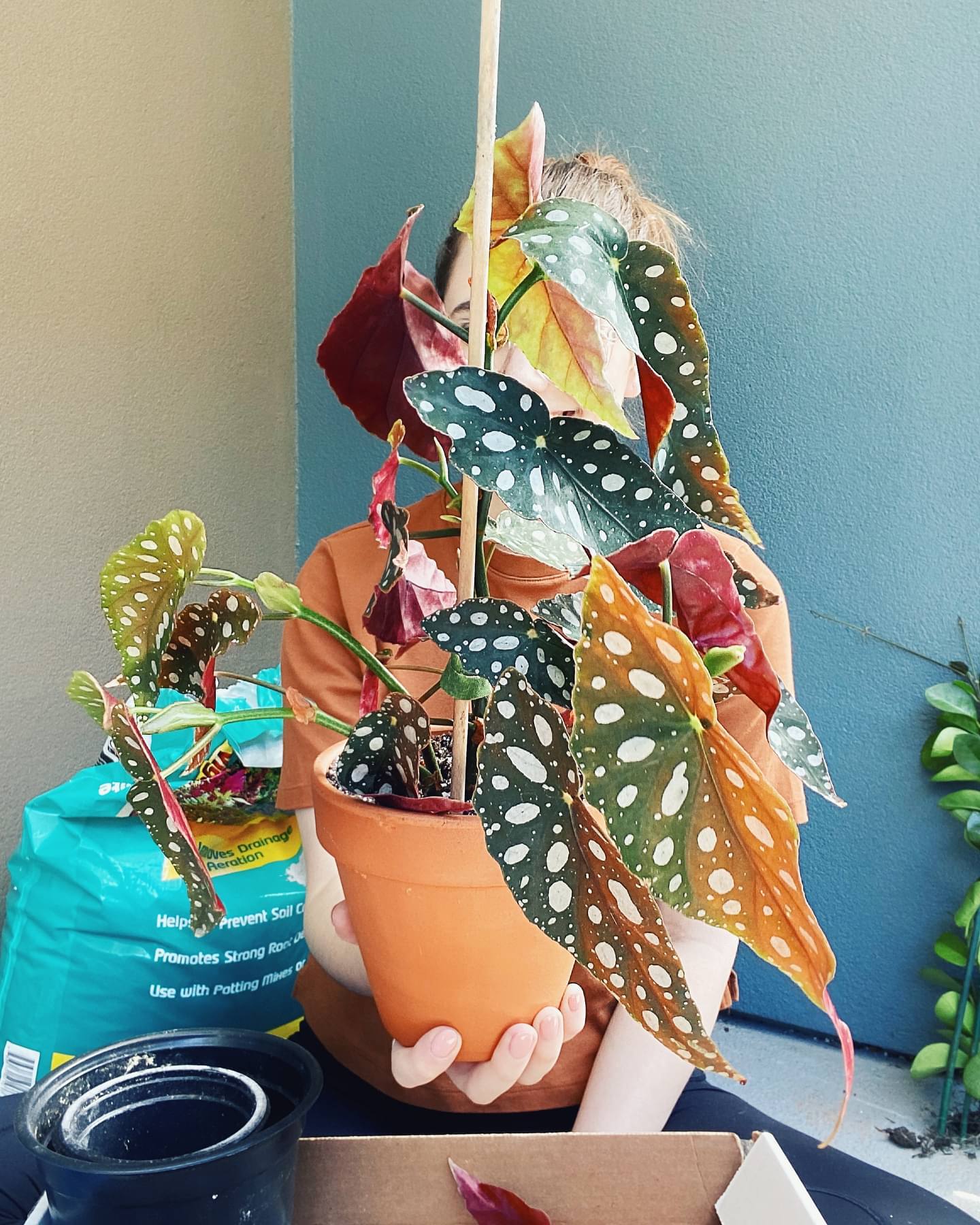
- Why It’s Great: The Spotted Begonia, with its wing-shaped leaves and silver polka dots, is a visually stunning plant. Its cascading clusters of white flowers add extra charm, making it a perfect plant for brightening up indoor spaces.
- Light: Bright, indirect light.
- Watering: Keep soil evenly moist, but not waterlogged.
- Size: Can grow up to 5 feet tall.
- Soil: Well-draining, rich potting mix.
- Feeding: Feed with a balanced liquid fertilizer every two weeks during the growing season.
- Flowering: Produces white flowers with yellow centers.
84. Ponytail Palm (Beaucarnea recurvata)
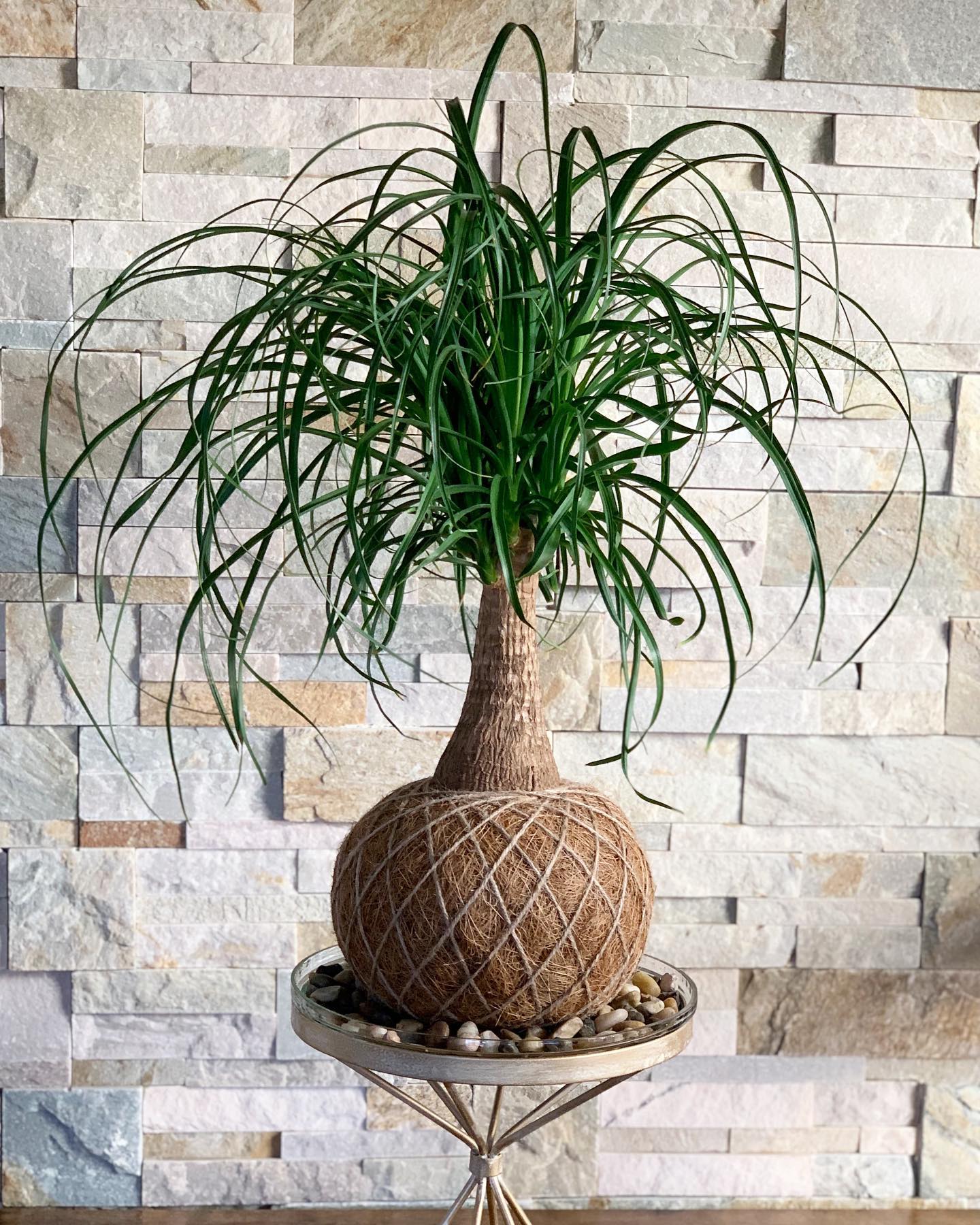
- Why It’s Great: The Ponytail Palm is a quirky and fun plant, with a bulbous trunk and long, curly leaves that resemble a ponytail. It’s a slow-growing, drought-tolerant plant, perfect for adding a playful touch to any room.
- Light: Bright, direct sunlight.
- Watering: Allow soil to dry completely between waterings.
- Size: Can grow up to 8 feet tall indoors.
- Soil: Well-draining sandy soil.
- Feeding: Minimal feeding; once or twice a year.
- Flowering: Rarely flowers indoors.
85. Foxtail Fern (Asparagus densiflorus)
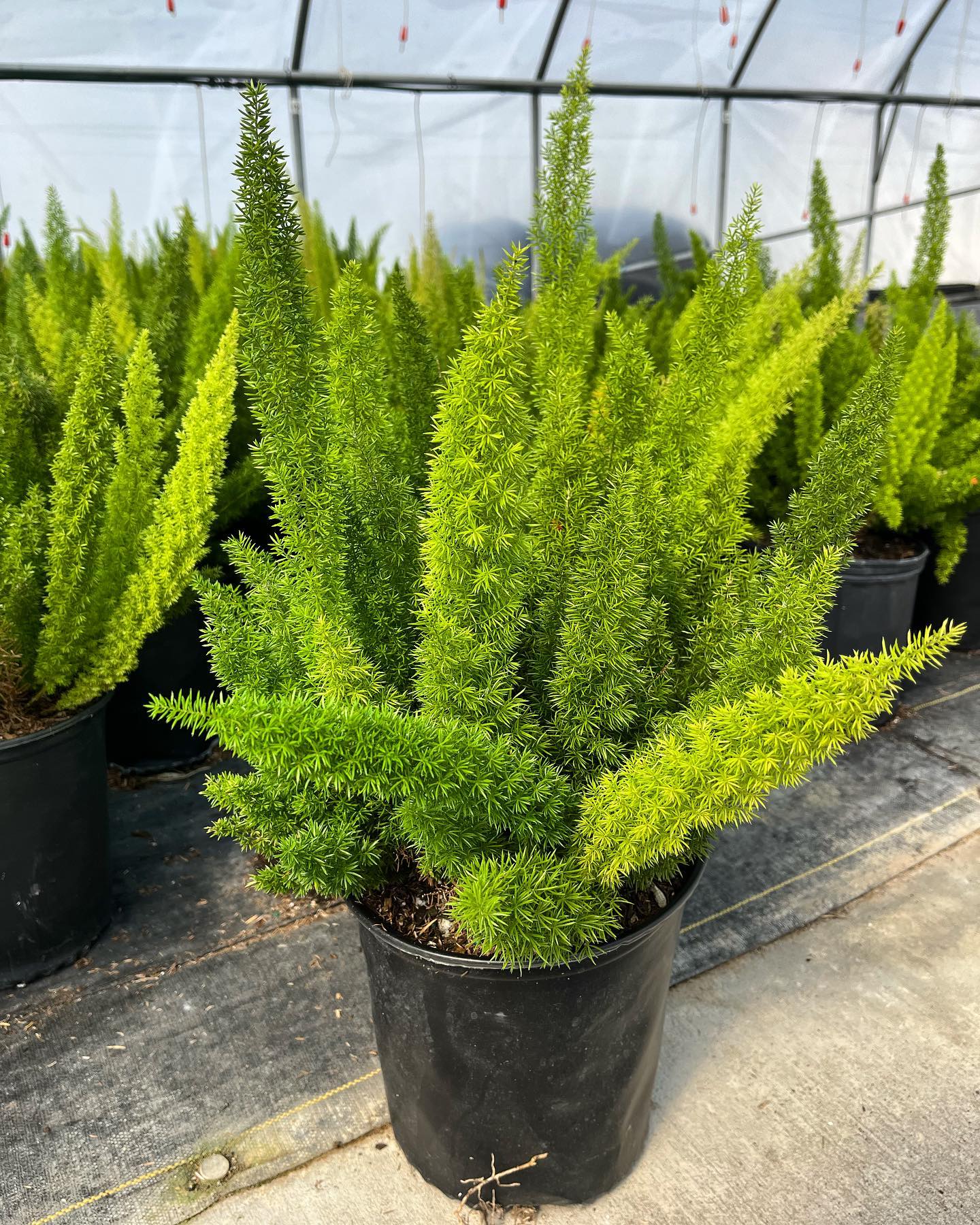
- Why It’s Great: The Foxtail Fern, with its fluffy, needle-like leaves, adds a soft yet striking element to any space. It’s an easy-to-care-for plant that thrives with minimal attention, perfect for busy plant lovers.
- Light: Bright, indirect light.
- Watering: Keep soil consistently moist.
- Size: Can grow up to 2 feet tall and wide.
- Soil: Well-draining potting mix.
- Feeding: Feed with a balanced liquid fertilizer every few months.
- Flowering: Produces small, inconspicuous flowers.
86. String of Nickels (Dischidia nummularia)
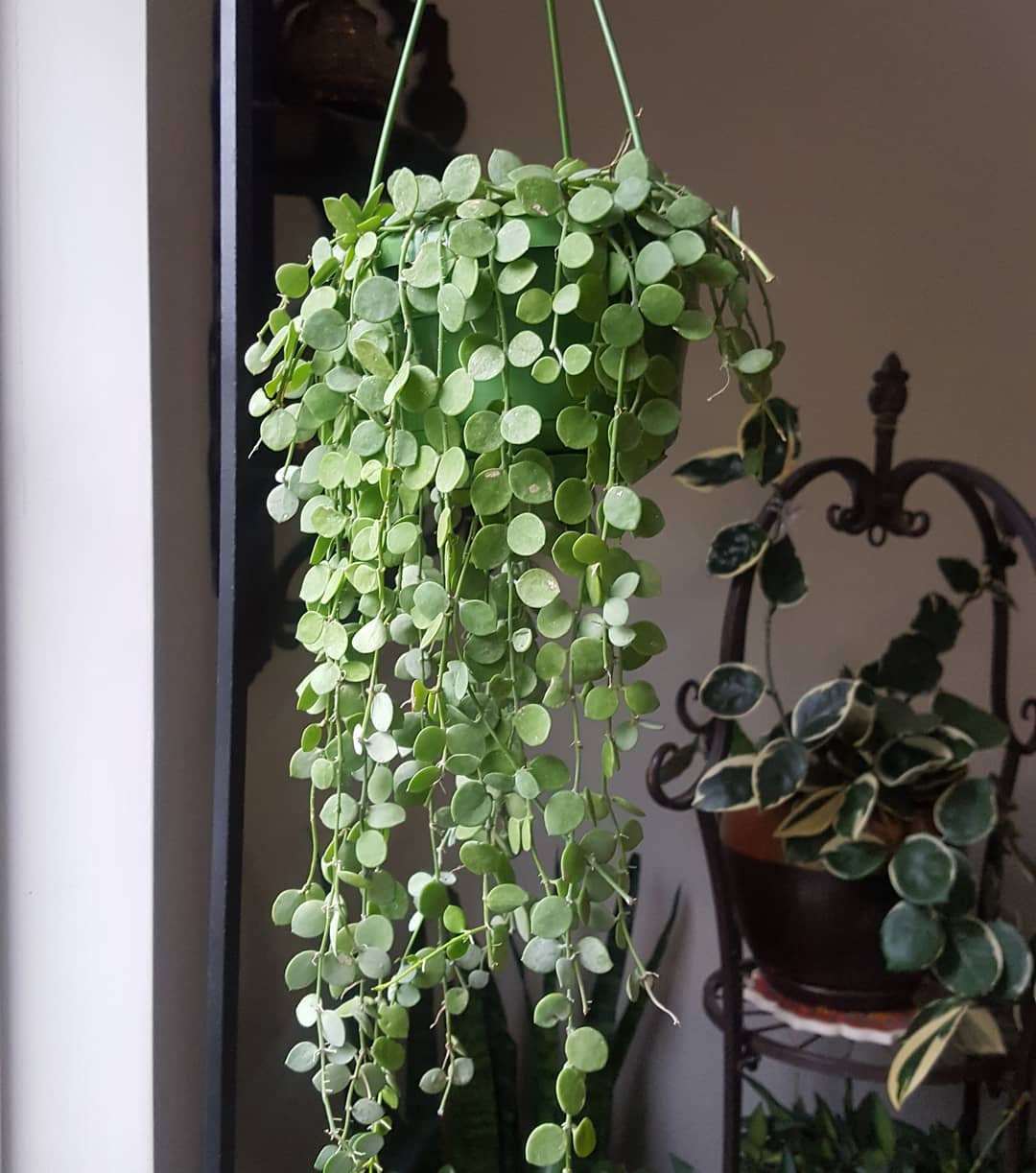
- Why It’s Great: The String of Nickels is a fascinating trailing plant with round, coin-like leaves. It’s perfect for hanging baskets, where its cascading vines can create a stunning visual effect.
- Light: Prefers medium to bright, indirect light.
- Watering: Allow the top inch of soil to dry out before watering.
- Size: Vines can reach several feet in length.
- Soil: Well-draining potting mix, ideally with some orchid bark.
- Feeding: Light feeding with liquid fertilizer during the growing season.
- Flowering: Produces small, white flowers.
87. Spider Aloe (Aloe humilis)
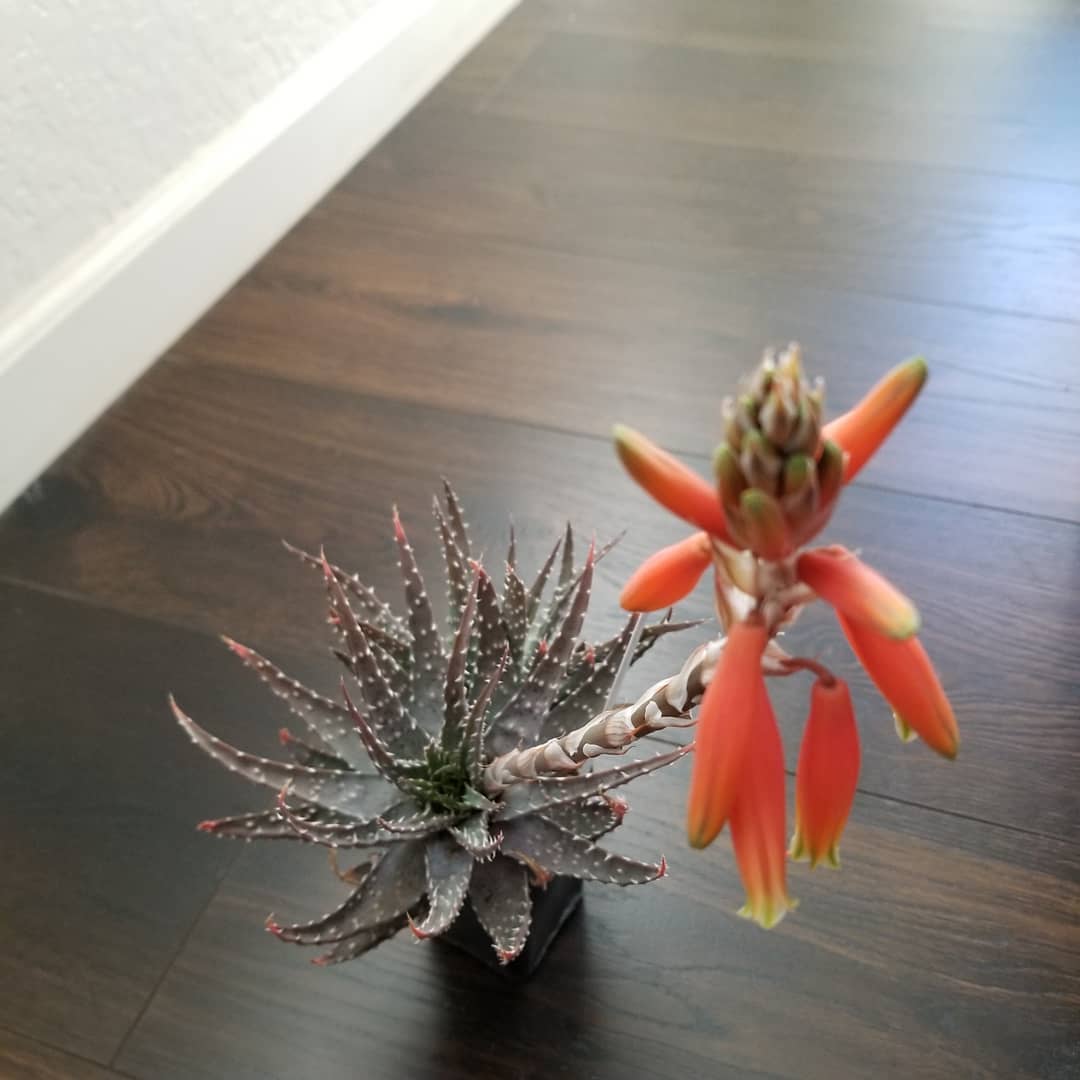
- Why It’s Great: Spider Aloe is a compact and attractive succulent, known for its rosette of spiky leaves and striking flowers. It’s a great choice for adding a bit of drama to windowsills and tabletops.
- Light: Bright, direct sunlight.
- Watering: Water every 2-3 weeks, allowing soil to dry out between waterings.
- Size: Grows up to 6 inches tall and wide.
- Soil: Well-draining cactus or succulent mix.
- Feeding: Minimal feeding; once or twice during the growing season.
- Flowering: Produces spikes of orange or red flowers.
88. Lemon Button Fern (Nephrolepis cordifolia)
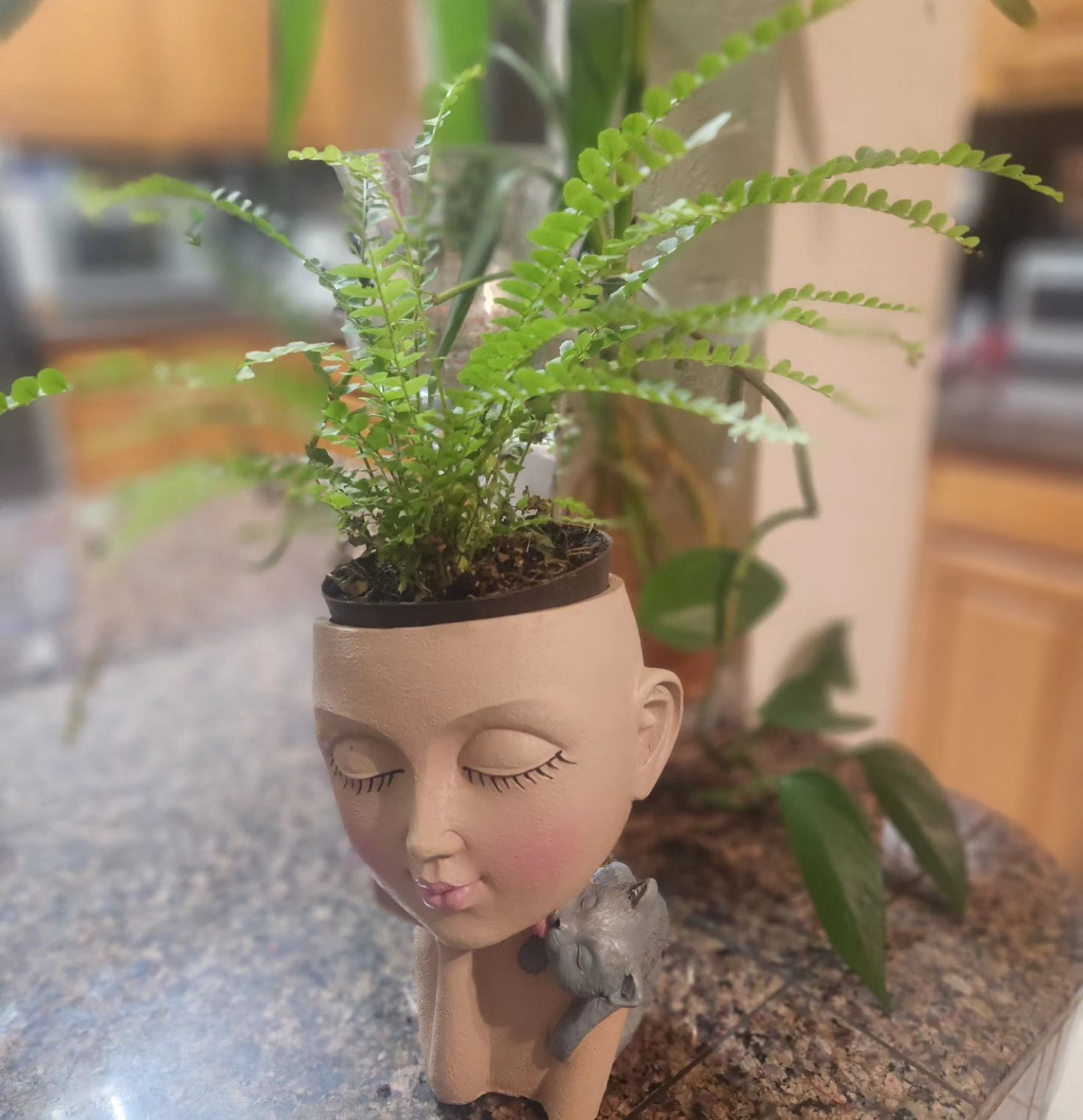
- Why It’s Great: The Lemon Button Fern is a charming, small fern with a fresh, lemony scent when the leaves are crushed. It’s perfect for adding a touch of greenery to smaller spaces or terrariums.
- Light: Prefers bright, indirect light.
- Watering: Keep soil consistently moist.
- Size: Grows about 12 inches tall and wide.
- Soil: Rich, well-draining potting mix.
- Feeding: Feed monthly during the growing season with a diluted liquid fertilizer.
- Flowering: Non-flowering plant.
89. Pineapple Plant (Ananas comosus)
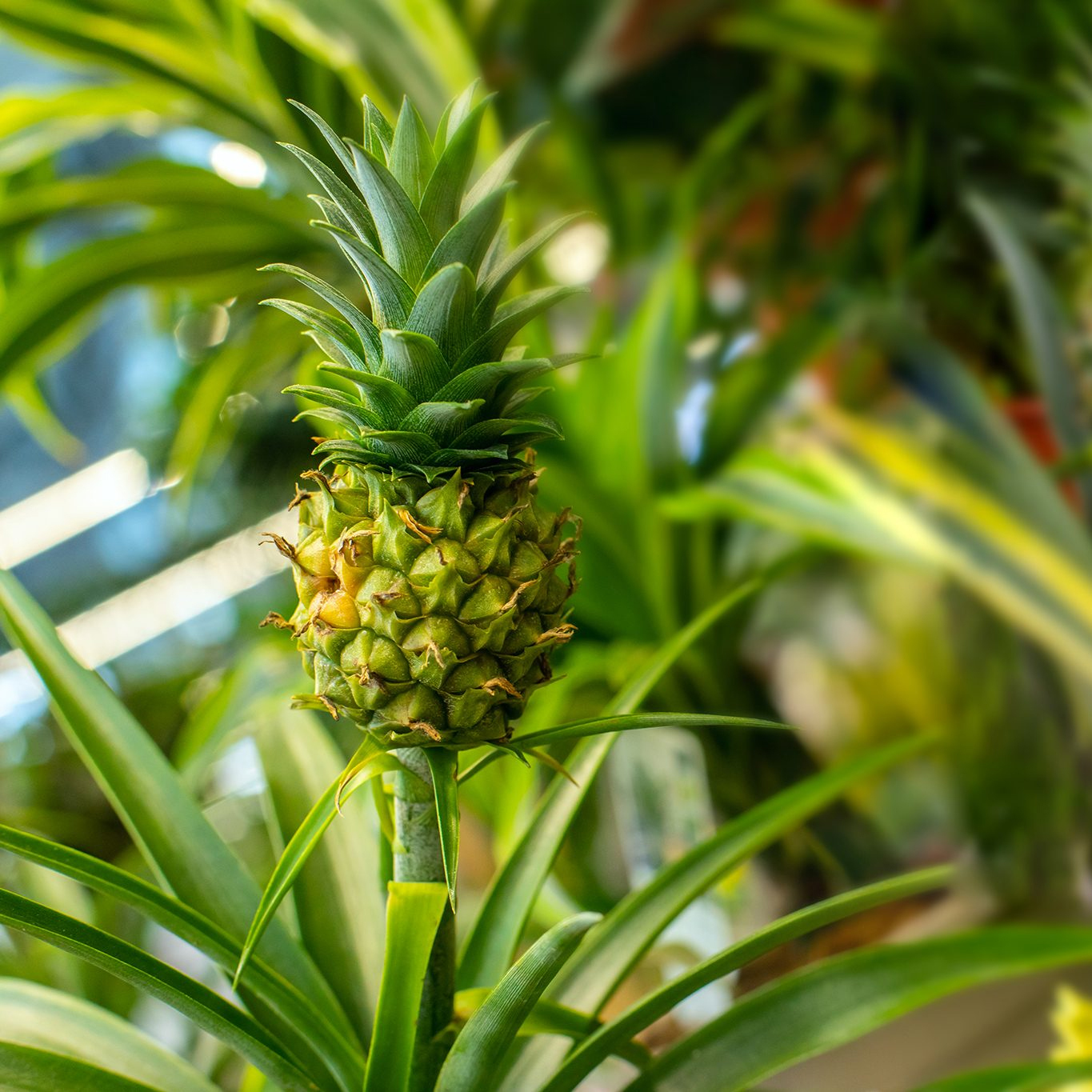
- Why It’s Great: Growing a Pineapple Plant indoors is not only fun but also rewarding when it produces its own fruit. It’s a striking plant with a tropical feel, perfect for adding a unique and exotic touch to your home.
- Light: Bright, indirect sunlight.
- Watering: Water when the top inch of soil is dry.
- Size: Can grow up to 3 feet tall and wide.
- Soil: Well-draining, rich potting mix.
- Feeding: Feed with a balanced liquid fertilizer every few months.
- Flowering: Produces a single pineapple fruit at the center.
90. String of Turtles (Peperomia prostrata)
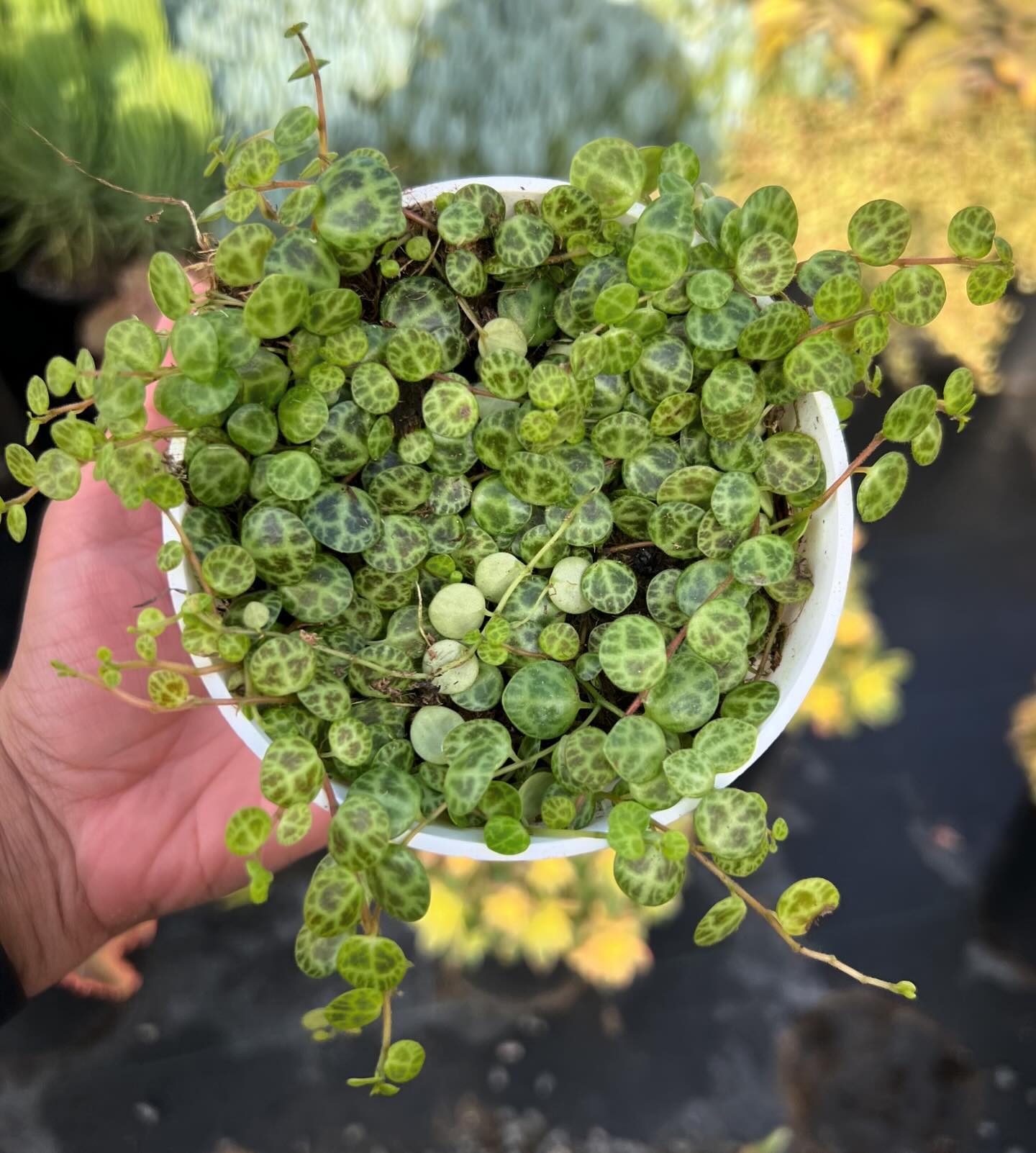
- Why It’s Great: The String of Turtles is a charming and unique plant, with its small, round leaves patterned like a turtle’s shell. It’s perfect for hanging baskets, where its trailing vines can be fully appreciated.
- Light: Prefers bright, indirect light.
- Watering: Allow the top inch of soil to dry out before watering.
- Size: Trails can grow up to 12 inches long.
- Soil: Well-draining potting mix.
- Feeding: Light feeding with liquid fertilizer every few months.
- Flowering: Rarely flowers indoors.
91. Hens-and-Chicks (Sempervivum tectorum)
- Why It’s Great: Hens-and-Chicks are fascinating succulents that grow in rosettes. They’re perfect for rock gardens or as ground cover in indoor planters, offering a unique texture and form to your plant collection.
- Light: Full sun to partial shade.
- Watering: Water every 2-3 weeks, allowing soil to dry out.
- Size: Rosettes can grow up to 4 inches in diameter.
- Soil: Well-draining succulent mix.
- Feeding: Minimal feeding required.
- Flowering: Produces flowers on tall stalks, but the main rosette dies after flowering.
92. Lipstick Plant (Aeschynanthus radicans)
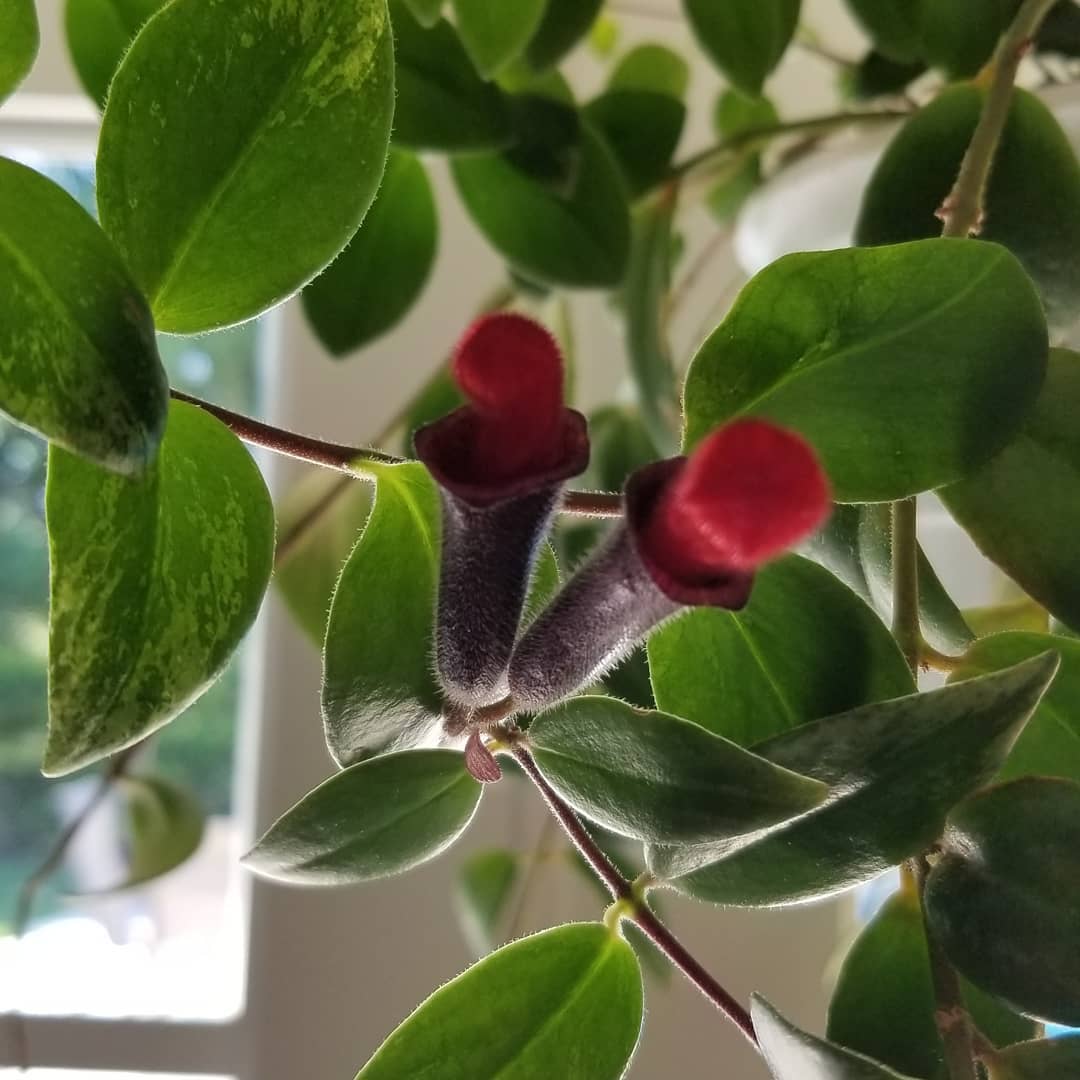
- Why It’s Great: The Lipstick Plant is a stunning trailing plant, known for its bright, tube-shaped flowers that emerge from dark maroon buds, resembling tubes of lipstick. It’s a great choice for adding a pop of color to your indoor space.
- Light: Bright, indirect light.
- Watering: Keep soil consistently moist during growing season.
- Size: Trails can grow several feet long.
- Soil: Well-draining, rich potting mix.
- Feeding: Feed with a liquid fertilizer every two weeks during spring and summer.
- Flowering: Produces bright red or orange flowers.
93. Moth Orchid (Phalaenopsis)
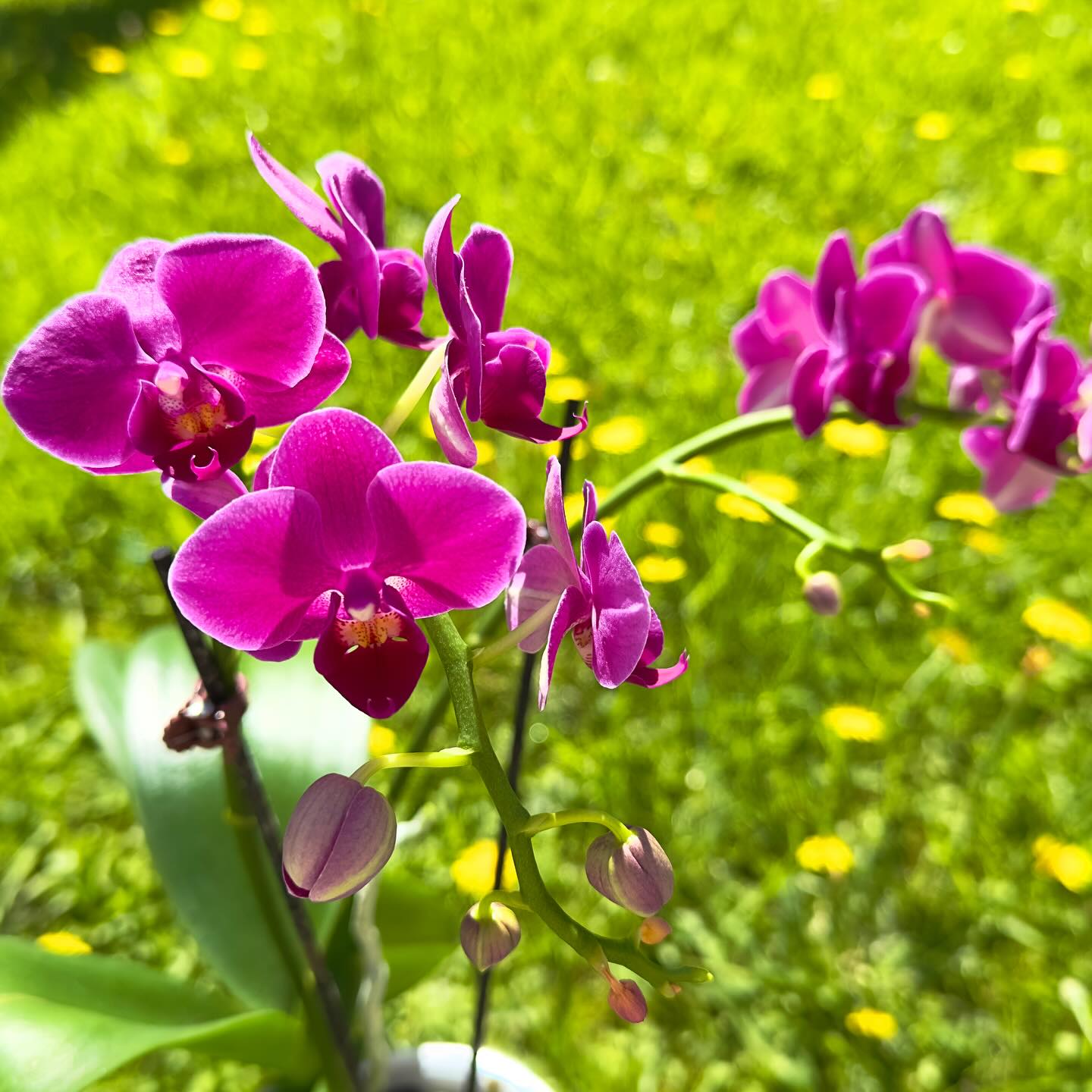
- Why It’s Great: Moth Orchids are elegant and sophisticated, known for their long-lasting flowers and ease of care. They’re perfect for adding a touch of class to any room, and their blooms come in a variety of stunning colors.
- Light: Bright, indirect light.
- Watering: Water every 1-2 weeks, allowing the potting mix to dry out slightly between waterings.
- Size: Can grow up to 2 feet tall.
- Soil: Orchid potting mix.
- Feeding: Feed with a balanced orchid fertilizer every other watering during the growing season.
- Flowering: Produces large, beautiful flowers, typically in winter or spring.
94. Silver Vase Plant (Aechmea fasciata)
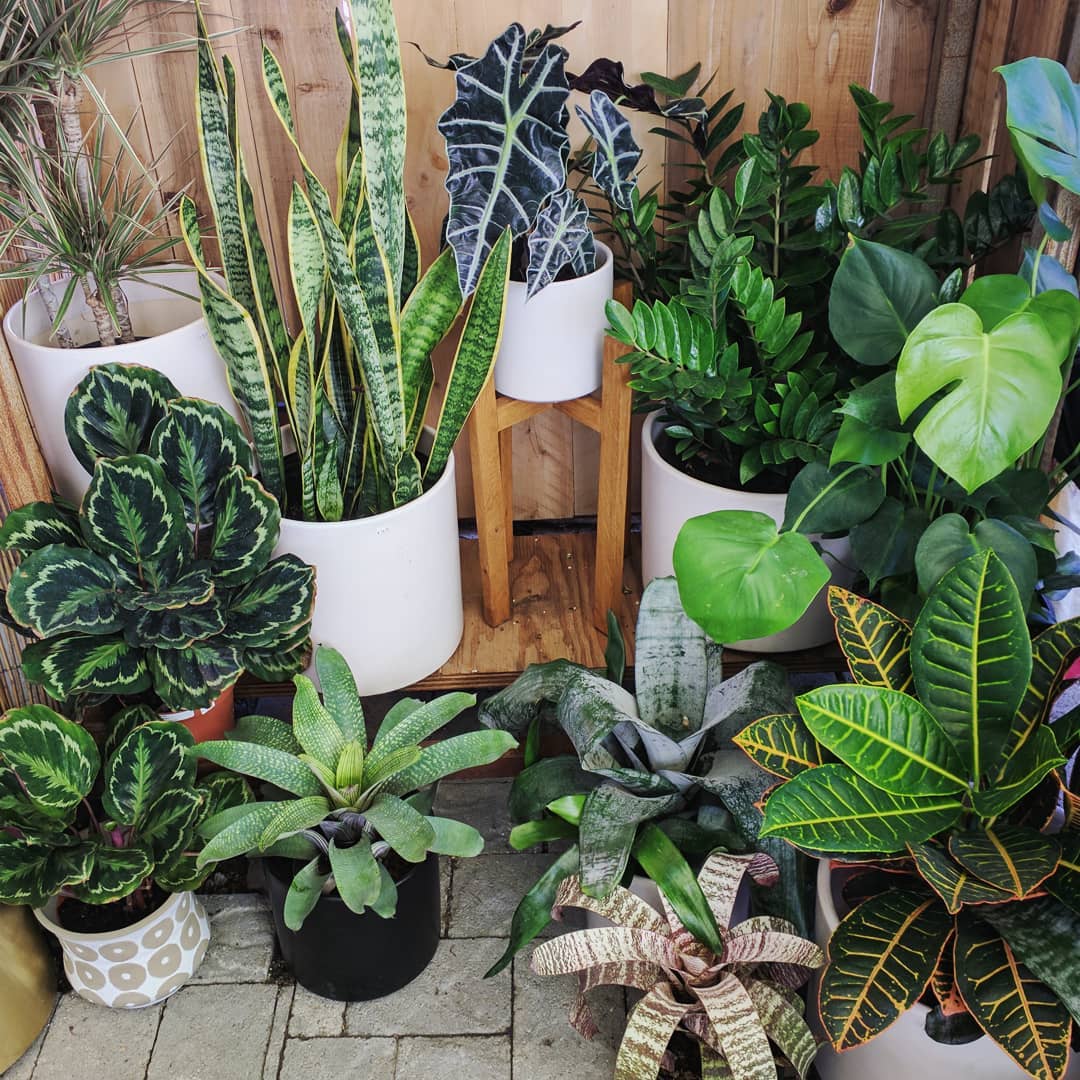
- Why It’s Great: The Silver Vase Plant is a striking bromeliad with broad, silver-green leaves and a stunning pink flower bract. It’s a low-maintenance plant that adds a tropical and exotic flair to any setting.
- Light: Bright, indirect light.
- Watering: Keep the central vase filled with water; change water frequently.
- Size: Grows up to 2 feet tall.
- Soil: Well-draining potting mix or orchid mix.
- Feeding: Minimal feeding; can be lightly fertilized during the growing season.
- Flowering: Produces a pink flower bract with small purple flowers.
95. Velvet Plant (Gynura aurantiaca)
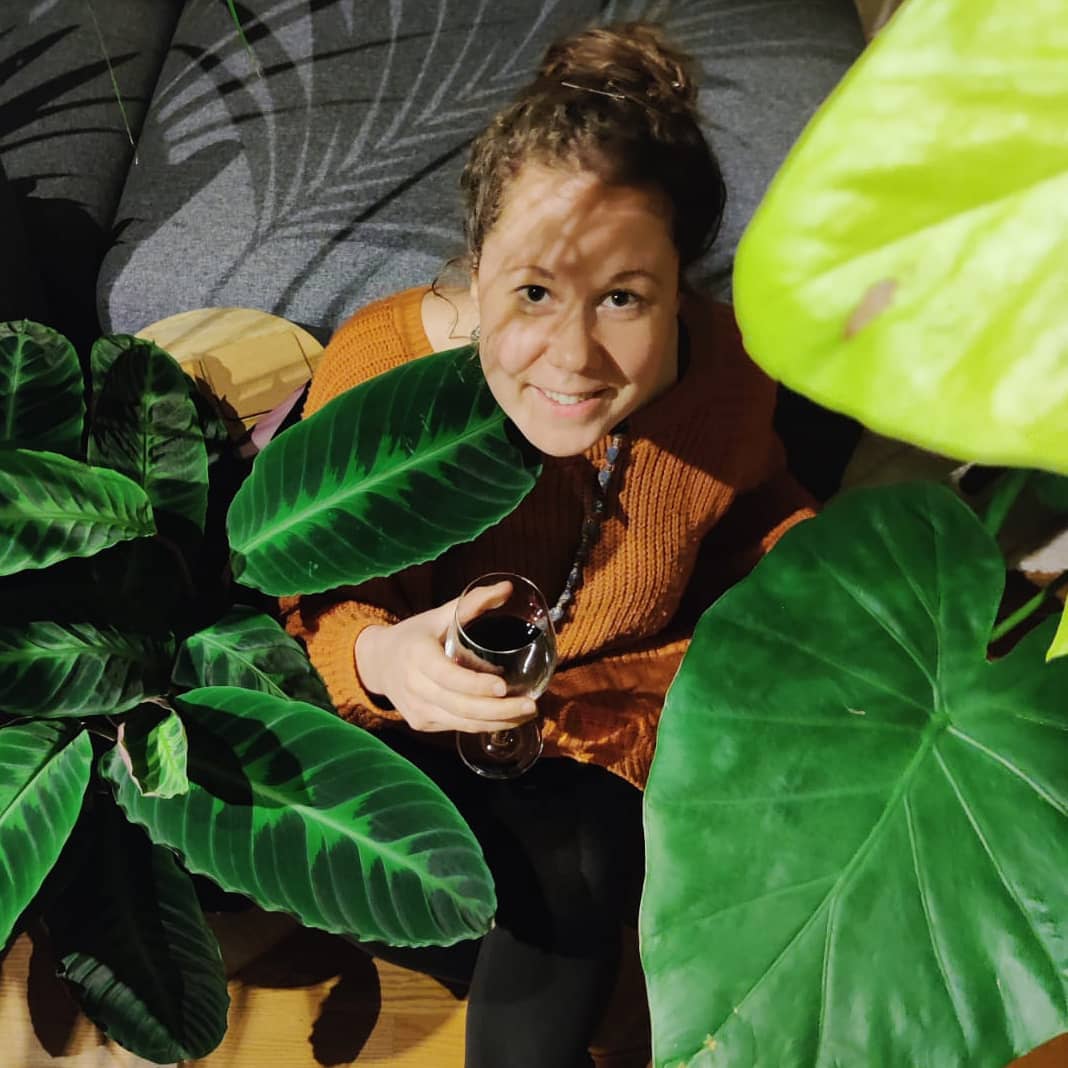
- Why It’s Great: The Velvet Plant is known for its vibrant orange and velvety leaves, which add a unique texture and color to your indoor garden. It’s a great choice for bringing warmth and softness to your space.
- Light: Bright, indirect sunlight.
- Watering: Water when the top inch of soil is dry.
- Size: Can grow up to 2 feet tall.
- Soil: Well-draining, rich potting mix.
- Feeding: Feed with a balanced liquid fertilizer every month during the growing season.
- Flowering: Produces small, inconspicuous flowers.
96. Aluminum Plant (Pilea cadierei)
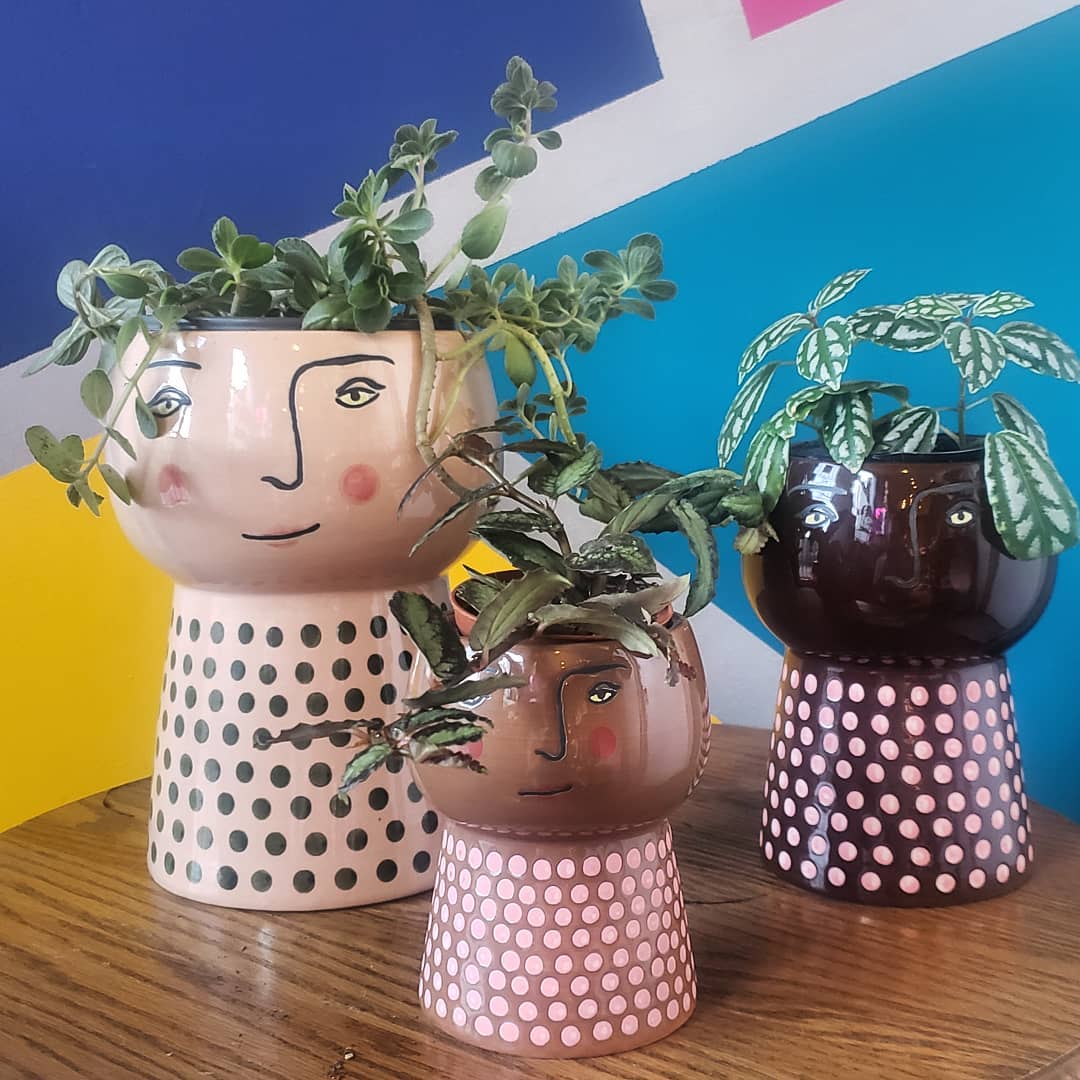
- Why It’s Great: The Aluminum Plant stands out with its striking, silver-patterned leaves. It’s a fast-growing and easy-care plant, perfect for adding a touch of sparkle to your indoor plant collection.
- Light: Medium to bright, indirect light.
- Watering: Keep soil consistently moist, but not soggy.
- Size: Grows up to 12 inches tall.
- Soil: Well-draining potting mix.
- Feeding: Feed every two weeks with diluted liquid fertilizer during the growing season.
- Flowering: Rarely flowers indoors.
97. Kimberley Queen Fern (Nephrolepis obliterata)
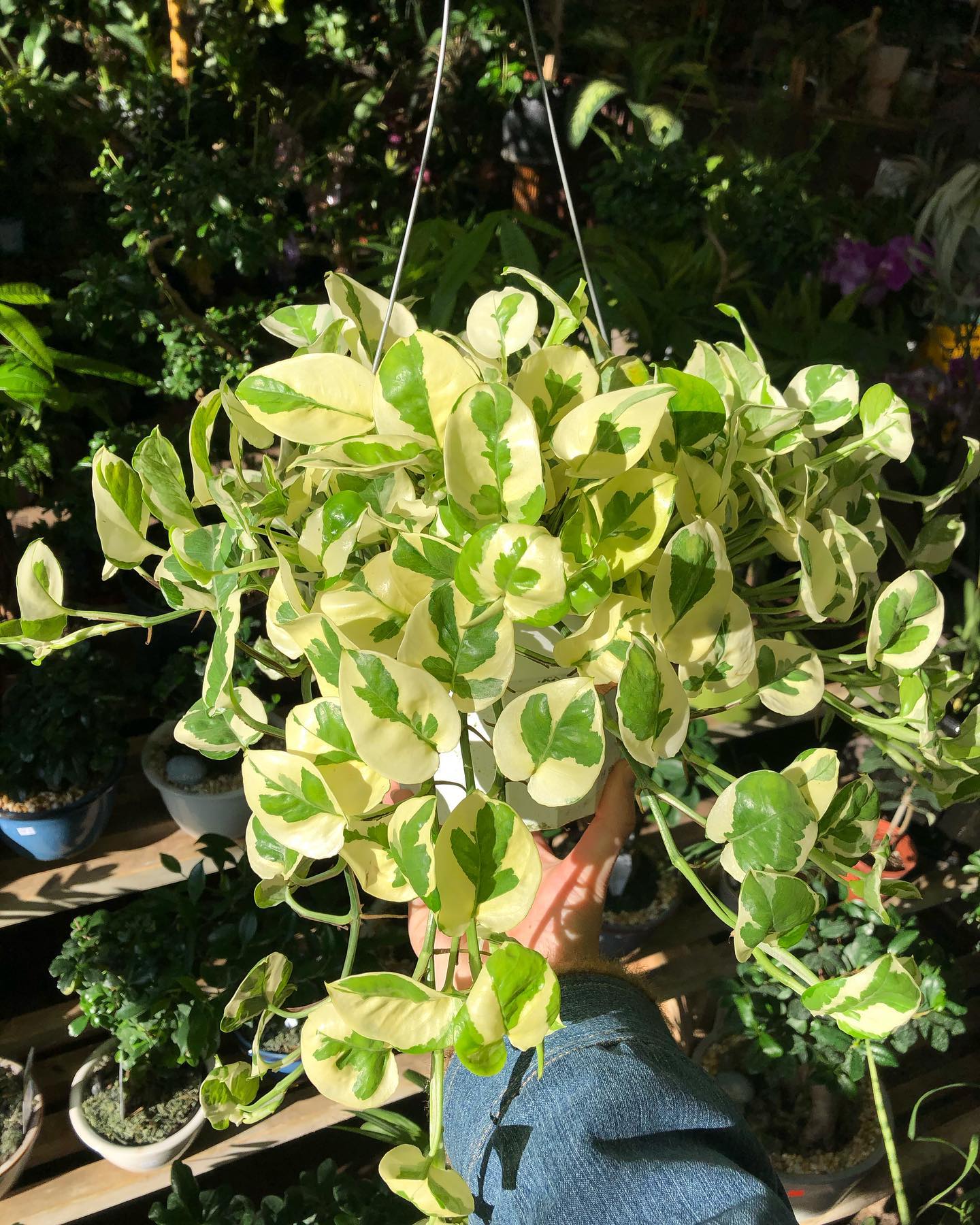
- Why It’s Great: The Kimberley Queen Fern is an elegant and robust fern, known for its upright fronds and air-purifying qualities. It’s a great choice for adding a touch of greenery to any indoor environment.
- Light: Prefers bright, indirect light.
- Watering: Keep soil consistently moist.
- Size: Can grow up to 3 feet tall and wide.
- Soil: Well-draining, rich potting mix.
- Feeding: Feed with a balanced liquid fertilizer every month during the growing season.
- Flowering: Non-flowering plant.
98. Flapjack Plant (Kalanchoe thyrsiflora)
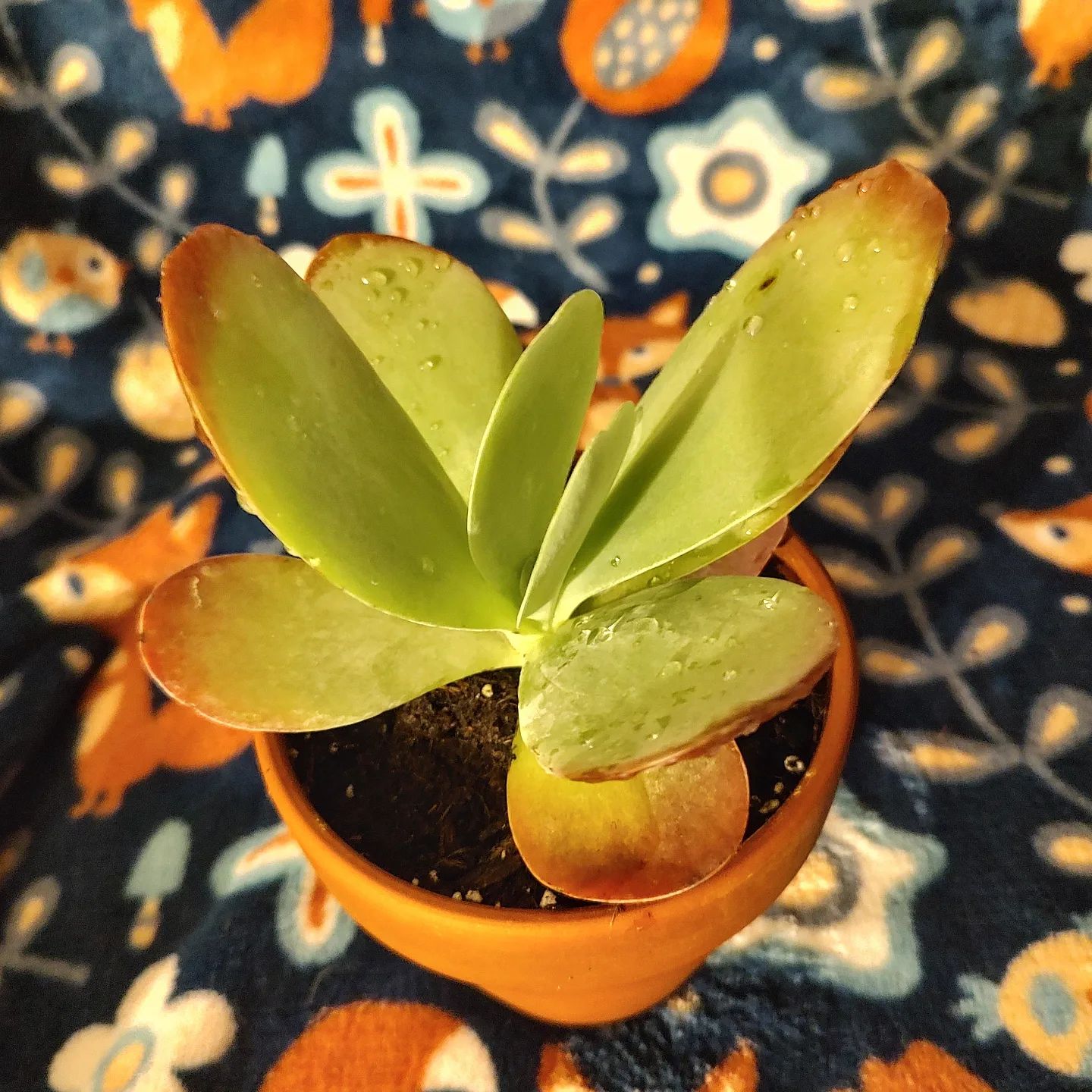
- Why It’s Great: The Flapjack Plant, also known as “Paddle Plant,” is a succulent known for its large, round leaves that turn red on the edges when exposed to sunlight. It’s a visually striking plant, perfect for adding a bold statement to your collection.
- Light: Bright, indirect sunlight.
- Watering: Water every 2-3 weeks, allowing soil to dry out between waterings.
- Size: Can grow up to 2 feet tall.
- Soil: Well-draining succulent mix.
- Feeding: Feed with a diluted liquid fertilizer in the spring and summer.
- Flowering: Produces small, yellow flowers on a tall stalk.
99. Dwarf Date Palm (Phoenix roebelenii)

- Why It’s Great: The Dwarf Date Palm is a graceful and elegant palm, perfect for bringing a tropical feel to smaller spaces. Its slender trunk and arching fronds create a sophisticated look that’s easy to maintain.
- Light: Bright, indirect light.
- Watering: Keep soil evenly moist, but not waterlogged.
- Size: Can grow up to 6 feet tall.
- Soil: Well-draining potting mix.
- Feeding: Feed with a palm-specific fertilizer during the growing season.
- Flowering: Rarely flowers indoors.
100. Maidenhair Fern (Adiantum)
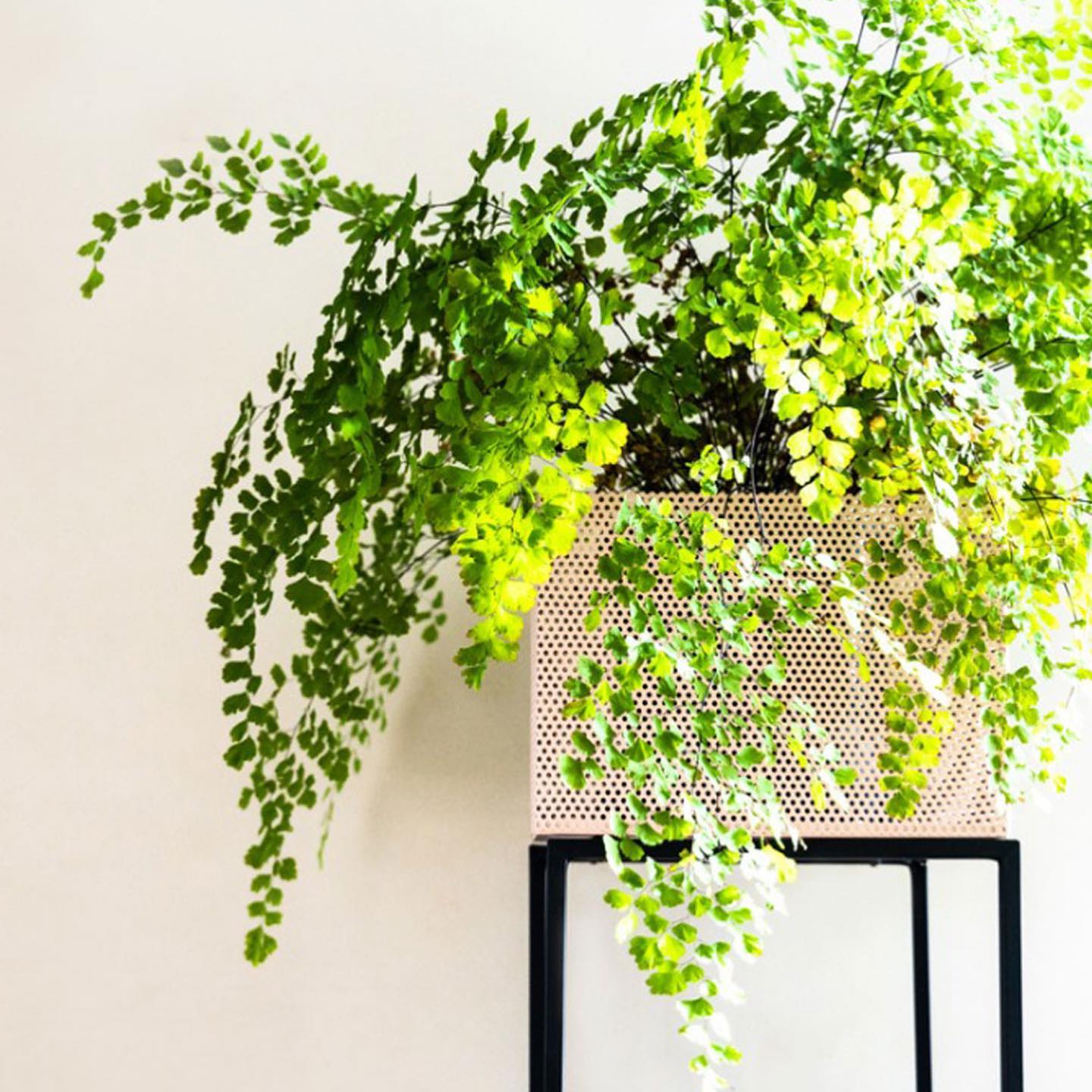
- Why It’s Great: The Maidenhair Fern is a delicate and elegant fern, known for its fine, lacy fronds and soft, green color. It’s perfect for adding a touch of serenity and grace to any indoor space.
- Light: Prefers bright, indirect light.
- Watering: Keep soil consistently moist.
- Size: Grows about 12-18 inches tall.
- Soil: Rich, well-draining potting mix.
- Feeding: Feed every two weeks with diluted liquid fertilizer during the growing season.
- Flowering: Non-flowering plant.









































































































